

The Complete South America Packing List: For Vacationing, Backpacking & Hiking
By Author Steph Dyson
Posted on Last updated: 29th November 2023
So you’re going on an adventure to South America? Working out exactly what to pack for a short vacation or a longer-term backpacking trip can feel like a daunting prospect: after all, what happens if you forget something essential or find yourself completely underprepared for the weather, altitude or climate of South America?
Before my first ever backpacking trip to South America back in 2014, I remember feeling exactly the same way.
Since then, I’ve spent over five years living and traveling in the region and have backpacked, vacationed, and lived across the continent, writing guidebooks (and this blog!) along the way to help others get to grips with a trip to South America. I’ve traveled on a budget and traveled in style, so I know exactly what to pack for South America depending on the type of trip you’re taking.
I’ve overpacked (mostly), underpacked (rarely), and discovered exactly what items you can and can’t find across the continent if you forget or mislay them during your trip.
I’ve also learned which hiking, camping, and general backpacking gear can withstand months (if not, in many cases, years) of traveling, so I can talk with educated knowledge about what you should – and shouldn’t – invest your money in.
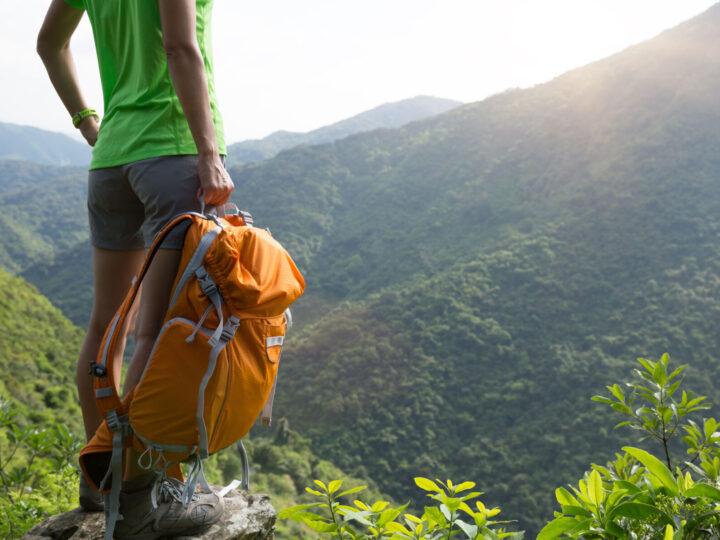
Click to navigate this article:
Key things to consider before packing for South America:
- What type of traveling will you do? Whether you’re planning a hiking adventure in Patagonia or hitting the beaches in Colombia , your luggage is going to look fairly different. This guide has been designed to cover most bases and has different sections that you can dip in and out of. You can also read my complete packing guide to Patagonia if you’re planning on spending most of your time hiking.
- Don’t overpack: laundry facilities are inexpensive across South America and located practically everywhere you’ll go. As a result, you can pack fewer items of clothing because you should be able to do laundry every couple of weeks. Turnaround at laundrettes can be as short as 12 hours and it should only cost a few dollars for a full load – making it extremely affordable. The only issue I’ve found is that they do have a tendency to damage your clothes, as well as occasionally losing socks and underwear. Always count the items of clothing you drop off and double-check everything’s there before you leave the shop when you pick it back up again.
- You can buy most things in shops in South America. Big cities tend to have all the shops you’ll need for picking up items of clothing, toiletries, and electricals, with large, modern department stores often your best bet. However, prices on imported goods can be higher than you’ll find at home; I’ve found this, particularly the case for electrical items and camping equipment (the latter of which is generally poor quality and very expensive).
- Safety can be an issue in South America. The fewer obviously expensive items you can pack (yup, I’m looking at you, the latest iPhone or MacBook), the less likely you are to get robbed, and the more you’ll enjoy your trip! You also want to always keep an eye and a hand on your belongings: this is very important in bus, train and metro stations where you want to have an arm through your rucksack strap or on your suitcase as thieves are very good at stealing them without you realizing they’ve gone. Make sure you also never put valuables into any luggage that goes into the hold on a bus or even into the luggage racks above your seat. Instead, keep valuable items at your feet and preferably securely attached to your person. Read our guide for more information about the safest countries to visit in South America .
So what do you need to pack for South America? Here’s my packing list honed over seven years of exploring the continent.
Backpacks for South American travel
The type of luggage you bring is a personal choice, and you do see travelers with wheelie suitcases in South America. However, if you’re planning on doing any multi-day hikes in South America (of which there are plenty), a backpack is the most versatile choice. Pulling a wheeled suitcase over cobbles or poorly-maintained streets in cities and towns across the continent is going to be hard work.
Finding a backpack that’s comfortable for wandering the streets from the bus stop to your accommodation, as well as when you’re on day eight of the O Circuit in Patagonia’s Torres del Paine National Park is no mean feat.
I’ve had the same backpack for the past seven years and don’t look forward to the day I have to part from it. Not only is it a women’s fit (a very important choice if, like me, you’re not the tallest), but it has an adjustable back system, which has meant I can adapt it to fit me more comfortably.
However, to be sure it would fit before I bought it, I took myself to a local outdoor shop to try on a number of backpacks. This is a great way to make sure you don’t sink loads of money into a bag that will cause you frustration – or worse, a bad back.
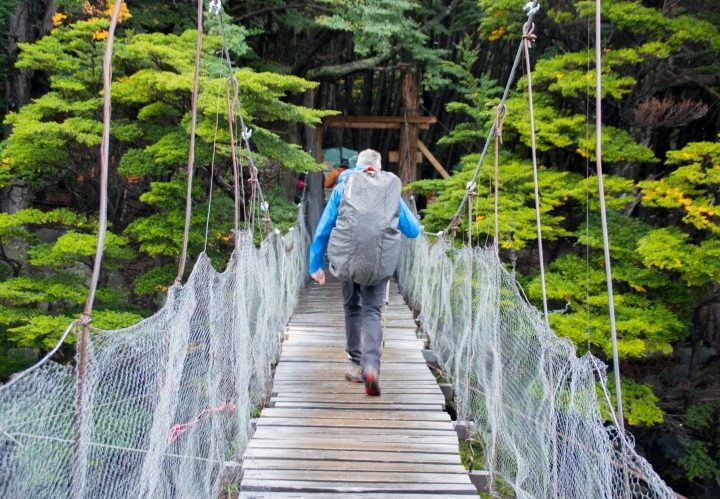
You also want a backpack that is as functional as possible. If you’re planning on hiking in South America or even traveling to countries near the Equator where it tends to rain heavily for periods of the day, a rain cover – either included or added to your pack – is a smart idea, while various pockets, including side pockets for stuffing with shoes or water bottles, give your backpack space to grow and store more things if needed.
Unfortunately, my backpack, the Berghaus Torridon 60 liter, is no longer available to buy. Instead, Osprey is a great brand that’s a little more expensive but known for being exceptionally reliable and long-lasting, making their bags ideal for both short and long-term travel.
- For her: With plenty of ways to adjust the fit, plus ventilation for keeping your back cool on sweaty treks through the city or great outdoors, the Osprey Aura AG 65 liter (if you plan on doing longer, multi-day treks: buy it from REI | Osprey | Amazon ) or the Osprey Aura AG 50 liter (for general backpacking: buy it from REI | Osprey | Amazon ) are sturdy, long-lasting and comfortable backpacks.
- For him: The men’s Osprey Atmos AG 65 liter (buy it from REI | Osprey | Amazon ) has similar functionality:
- Add a rain cover from REI | Osprey | Amazon to make sure your pack is 100% waterproof.
Wheeled suitcases for traveling in South America
Don’t fancy lugging your belongings on your back like an oversized turtle? A wheeled suitcase isn’t the most practical luggage for South America, but it’ll work, particularly if any hiking plans you’ve got will involve a daypack instead (more on that below).
When it comes to a wheeled bag, one of the main considerations is whether you go for a hard or soft case. Soft cases have the benefit of not cracking if placed under stain (and on buses in South America they do tend to like throwing the luggage around), but if you’re concerned about security, a hard case has the edge.
My favorite is the wheeled LEVEL8 suitcase. Not only is it roomie – it comes in 41L , 68L , and a whopping 108L – but it has three different zipped compartments, making it very easy to pack your belongings (and know where they are!).
The frame itself doesn’t weigh too much, either, which ensures it’s easy to wheel around and also doesn’t use up too much of your weight allowance! Mine has been brilliant and it’s easy enough to pack a small rucksack inside this suitcase for day trips.
- For him and her: Available in three different sizes and made from a durable hard shell, the LEVEL8 range of cases is my top pick and can be bought in three different sizes: 41L , 68L , and 108L .
Daypacks for South America
A day pack can serve multiple purposes on a trip to South America. For days spent exploring the city, a 20- to 40-liter backpack will be a perfect size, with enough room to carry water, a camera, and extra layers. It’ll also be the right size for day hikes, whether trekking in Torres del Paine National Park or for a day exploring Machu Picchu. They’re also useful as hand luggage on a plane or when traveling overnight on buses.
Again, I recommend comfort and functionality when it comes to a daypack. An adjustable waist strap is invaluable when you’re hiking, while a waterproof rain cover and smaller pockets for keys or lip balm are also handy.
I spent many happy years with my Lowe Alpine daypack, however, it’s a brand that’s practically impossible to find in the US and 25l is a little small if you’re planning on doing a multi-day hike. Instead, Osprey is again a great alternative.
- For her: You can find my Lowe Alpine 25 on Amazon or check out the Osprey Sirrus 36 , which is packed with pockets, has a waistband and rain cover, and is easy to adjust: REI | Amazon
- For him: The Osprey Stratos 34 has similar functionality as the women’s version: REI | Amazon .
Clothes for South America | Hiking and essentials
Choosing which clothes to pack for a South America trip is all about versatility – and recognizing that this continent is one hell of a huge place with an incredibly wide-ranging array of climates and altitudes.
No, it’s not always hot and sunny in South America and yes, there are places where it feels like it rains all the time (or it actually does if you’re visiting in rainy season). Before you begin, check out my guide to when to visit South America , which runs you through the types of weather you can expect in different parts of the continent. However, it’s worth bearing in mind that you’ll want to be packing for pretty much every possible climate if you’re planning a backpacking adventure that spans more than just one country.
It’s also worth noting that altitude can have a real impact on temperatures. If you’re heading to Cusco , Machu Picchu , Arequipa , Huaraz, Quito, La Paz , or other similarly high-altitude destinations, you’ll quickly notice that temperatures drop significantly at night. A warm fleece or down jacket will quickly become your favorite item of clothing.
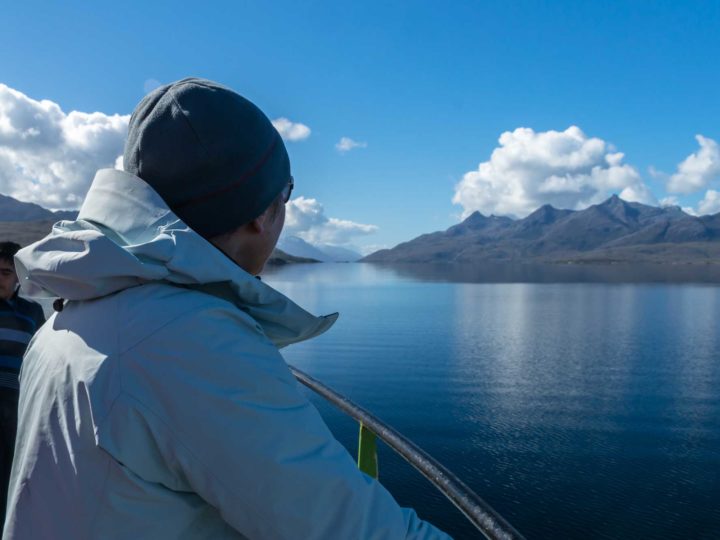
Finally, a note on fabrics. Quick-dry and moisture-wicking materials, such as polyester, nylon, and linen, are a good choice, particularly if you end up needing to do a wash in a sink in your hotel (you invariably will). Cotton will keep you cool, but takes absolutely forever to dry, while silk will end up getting crumpled in your bag.
If you don’t have much already in your wardrobe that seems good for traveling, REI have a whole range dedicated to travel clothing for men and women that’s worth checking out and that can be filtered according to material and qualities (such as moisture-wicking).
A waterproof jacket: I grew up in a family who takes hiking very seriously and I can’t fault my dad for persuading me that a good quality Gore-Tex waterproof jacket is an essential item of clothing for your bag. It’ll keep you dry and, if you spend more, the material is going to be breathable and stop you getting too hot or sweaty, even if you’re hiking. My latest jacket, the Patagonia Storm10 , is a three-layer waterproof (read: extremely dry) made from 100% recycled nylon. It’s very thin, which makes it light but also easy to layer up using a down jacket or cozy fleece beneath.
For cheaper budgets, North Face is always a good choice, too. Their Alta Vista jacket is a breathable, lightweight option at an affordable price point.
- For her: I love the Patagonia Storm10 Jacket as it’s an ultralight, easy-to-pack but fully waterproof jacket ( Patagonia ); the North Face Alta Vista Jacket ( Amazon | REI ) is significantly cheaper but offers good weather protection.
- For him: the Patagonia Storm10 Jacket is a good option ( Patagonia ) or the equally lightweight but waterproof Patagonia Torrentshell 3L ( REI | Patagonia | Backcountry ); if you want something more affordable, the North Face Alta Vista ( Amazon| REI ) is a good shout; if you’re looking for something that’ll last you a decade, check out pricey but industry-leading Arc’teryx ( REI | Amazon )
A warm fleece: Fleece is a material designed to keep you warm by trapping body heat; at the same time, it’s extremely lightweight. It’s not only great for cool evenings when the temperatures drop, but it’ll be a great addition to your hiking backpack if you head out into the mountains.
- For her: Go for this inexpensive one from Columbia or pick up an even cheaper one from REI
- For him: Mountain Hardwear have great options: REI | Backcountry | Amazon
A down jacket: I don’t think I wear any coat more than my down jacket. It’s because it not only provides me with a welcome extra layer, but it also packs down very small and light and can easily be worn under a waterproof jacket if I’m feeling really cold. Be aware that, while a down jacket is a great piece of kit, because down (the feathers used inside the coat for insulation) isn’t designed to get wet, you want one that’s either water resistant (pricey) or synthetic down (cheaper but heavier). I’ve been wearing a Jack Wolfskin down jacket (Amazon), which is packed with responsibly sourced down with 700-fill (a number that basically puts it at the top of the range when it comes to warmth). It’s also extremely light, so excellent for shoving in your pack for when you need it.
- For her: I love my new Jack Wolfskin down jacket ( Amazon ). The North Face has some good synthetic down jackets ( REI | Backcountry | Amazon ), while Mountain Hardw ear has some water-resistant down jackets ( REI | Backcountry | Amazon ).
- For him: REI has some good synthetic down jackets and some of the most affordable water-resistant down jackets
Two or three x hiking trousers and shorts: Whether you’re looking to hit the trails across South America or might do a bit of day hiking here and there, a couple of comfortable pairs of hiking trousers are must-haves; trust me, you’ll regret any hikes you do in jeans. Hiking trousers will also be extremely comfortable on days spent wandering around the city.
Investing in those that are quick-dry is a must (nothing’s worse than getting rained on and your trousers staying wet). prAna are known for the durability of their women’s hiking trousers, while Columbia have some great options for men .
- For her: Get prAna hiking pants at REI | Backcountry | Amazon .
- For him: Columbia’s trail pants ( REI | Backcountry | Amazon ) are a great option.
Two or three hiking tops: Lightweight, easy drying, and quick-to-wash hiking tops are also essential, particularly as they’ll keep you nice and cool in the South American humidity. Any sort of sports tops should suffice, but make sure they’re made from moisture-wicking materials.
- For her: REI have some great own-brand t-shirts
- For him: REI have some own-brand t-shirts for men, too
Hiking poles: They might seem like something you only need once you’ve gotten past a certain age, but hiking poles are now something I always take with me on a hike. Not only are they great for taking the pressure off your knees when you’re going downhill, but they’re extremely handy if you roll your ankle or injure yourself on the trail. Check out REI’s guide to selecting trekking poles or try Black Diamond from REI | Backcountry | Amazon .
Clothes for her
Three or four casual tops: These can be a blend of tank tops, short-sleeved (for protecting your shoulders from the sun), and long-sleeved t-shirts (the latter are good for the jungle when you’ll want all skin out of sight), as well as casual shirts (great for throwing over you in hot weather when you start burning). Sustainable companies such as Organic Basics and Tentree have some great t-shirts and tanks from recycled synthetic materials, organic cotton, and linen; just avoid light colors which will end up getting stained
A smart top or shirt: There’s likely going to be at least one occasion where you’ll want to dress up and a smart top or shirt can make you look respectable.
Two comfy linen trousers or similar: I never travel with jeans for the main reasons that they’re a) very bulky and b) horrifically unpleasant in hot, humid climes. Instead, I prefer linen trousers or ones made from a lightweight, quick-drying material, such as recycled polyester. Tentree has some great linen and recycled polyester trousers.
Two pairs of leggings: Leggings are an absolute essential when it comes to your South America packing list. I tend to have three in my backpack: two pairs for hiking and another pair that can be worn either out and about or for sleeping in cold climates. Any pair of leggings will do, but REI has some affordable options, while prAna does some really comfortable pairs ( REI | Amazon ) which have handy side pockets for your phone or other essentials on the trail.
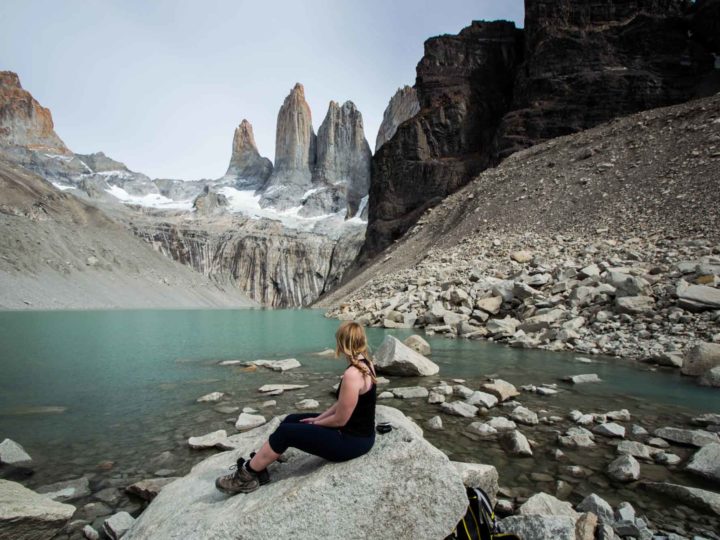
Two pairs of shorts: Depending on when you visit South America, it can get very warm, so a few pairs of lightweight and quick-drying shorts are a must (or just throw in a few more trousers if you don’t like getting your legs out). TenTree have some lovely linen shorts .
One dress or skirt: Sticking with the theme of wanting to look nice and respectable at some point during your trip, a dress or two can make you feel a bit smarter.
A lightweight jumper or cardigan: Even in the hottest, most humid parts of South America, temperatures can drop, so a lightweight jumper or a cardigan will keep you cozy and warm against the chill.
One or two swimsuits or bikinis: There are plenty of opportunities for swimming in most parts of the continent and the water can be extremely inviting on a hot day.
One pair of pajamas : I tend to wear short pajamas at night and put on a pair of leggings if I get cold.
Seven underwear: This should be enough to go without doing laundry all the time if you’re traveling for a long time.
Four bra: As above.
Seven pairs of socks: This depends on the type of shoe you plan on wearing. If you’re going to be in trainers, bring plenty of trainer socks , plus at least two pairs of hiking socks . I wear a liner pair and an outer pair when I’m hiking, but you might just wear the one pair with your hiking boots. Bridgedale ( liner and outer socks) or Darn Tough are good for both liner socks ( REI | Darn Tough | Amazon ) and outer socks ( REI | Darn Tough |Amazon )
One scarf: A lightweight scarf has been invaluable for me during my time traveling in South America. Not only can it keep you warm, but it can be an excellent light layer against the sun when it gets too hot or be used as a blanket on an overnight bus journey.
Clothes for him
Three or four casual tops: Go for a range of different styles; just make sure they’re lightweight and quick-drying, plus some long-sleeve casual shirts that can be worn over a t-shirt for extra warmth. Organic Basics have some great tencel t-shirts (made from wood pulp that’s lightweight and more moisture-wicking than cotton). Again, avoid light colors that will get stained from sweat or just general wear.
A smart top or shirt: Great for helping you scrub up nicely when required.
Two casual trousers: As suggested above, I would strongly recommend against packing heavy and hot jeans. Instead, go for cargo trousers or any other type of lightweight trousers – again made from a quick-drying material such as recycled polyester or nylon.
Two pairs of shorts: Bring more or less depending on whether you prefer wearing trousers or shorts.
A lightweight jumper: You’ll want something that’s thin but can provide an extra layer of warmth when needed.
One or two swimming trunks: This allows you to have a pair drying and a pair being worn
One pair of pajama bottoms: Even if you generally sleep naked, think about those around in your hostel or hotel – you’ll want a pair of pj bottoms if you do share a bathroom and need to exit your room in the middle of the night!
Seven underwear: This should be enough to go without doing laundry all the time if you’re traveling for a while!
Seven pairs socks: This depends on the type of shoe you plan on wearing. If you’re going to be in trainers, bring plenty of trainer socks , plus at least two pairs of hiking socks . I wear a liner pair and an outer pair, but you might just wear the one pair with your hiking boots. Bridgedale ( liner and outer socks) or Darn Tough for both liner socks ( REI | Darn Tough | Amazon ) and outer socks ( REI | Darn Tough | Amazon )
Footwear for your South America trip
A pair of hiking boots: I’ll always be an advocate for hiking boots and I’ve bought Salomons for my last three pairs. Mostly, it’s because they don’t give me blisters (an issue I’ve faced in the past), and because they’re made of Gore-Tex so keep my feet completely dry on hikes. They’re also a lot lighter and have better breathability than those made from leather.
However, if you’re not planning on doing much hiking – and only expecting to wander around towns or embark on day hikes – it might be better to just take a pair of decent hiking shoes instead.
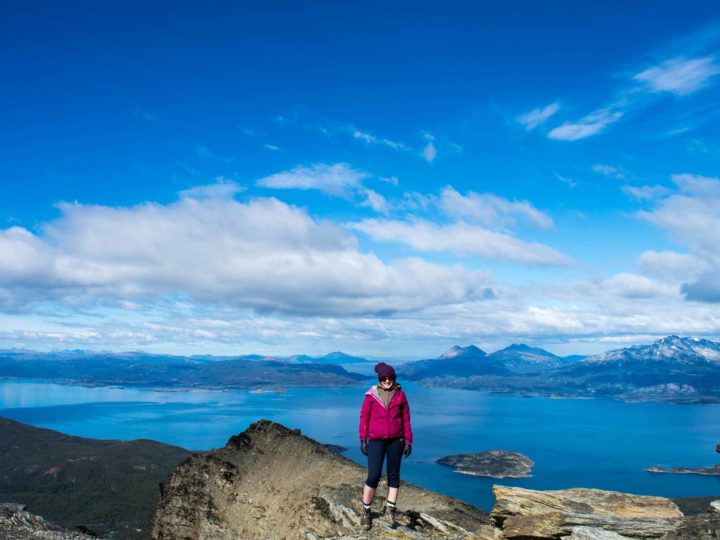
It’s worth going into a shop to try on boots before you buy them online to make sure you know your size; trust me, nothing’s worse than a pair of ill-fitting hiking boots. Try them on with the socks you’ll be wearing with them and you should get a good sense of whether they fit or not. It’s also important to break new boots in (i.e. wear them for a few short walks beforehand) before taking them with you to South America.
Salomon has been my go-to hiking boot for a long time:
- For her: REI | Backcountry | Amazon
- For him: REI | Backcountry | Amazon
They also do hiking shoes:
- For her: REI | Amazon
- For him: REI | Amazon
A pair of sandals or flip-flops : When you’re spending a day sightseeing or at the beach, you want something comfortable that’ll keep your feet cool and allow them to breathe. I travel with a sturdy pair of Teva sandals, as well as some flip-flops (made from sustainable materials) for lounging.
My Teva sandals are sooo versatile and I know they’re going to last forever.
A pair of trainers: If it’s colder or you just want something comfy on your feet that isn’t as heavy-going as a pair of hiking boots, trainers are ideal. Make sure they fit well and don’t rub.
Travel essentials for South America
Travel water filter: A water filter is an environmentally-sound investment for your trip and one that should save you money in the long run by cutting out spending on bottled water. I’ve used so many different types of water filters cross the years but my favorite has long been the Steripen Adventurer ( Amazon | REI ), which is the quickest and easiest method of filtering water that I’ve found: you simply insert the Steripen into a 0.5- or one-liter container of water and stir it for the required time. Hey presto: clean water. The batteries should last up to 50 liters, although they are an unusual type of battery , so purchase a spare set before you leave. Another alternative is the Grayl Geopress , which performed very well when I tested out half a dozen water filters for travel .
A water bottle: To use the Steripen, you need a water bottle with an opening of at least 38mm (I have a Nalgene bottle ).
A dry bag: One thing I quickly learned while traveling in South America is that when it rains, it pours. And when it rains – and you don’t have confidence that your backpack is waterproof enough – or perhaps you’re on a river boat in the Andes and want somewhere to store your camera and passport in case you take an unexpected dip, you’ll want a dry bag. Seriously, these have saved me so much money in damaged valuables that they’re completely worth the investment. I love Sea to Summit dry bags because of their quality and durability: REI | Backcountry | Amazon
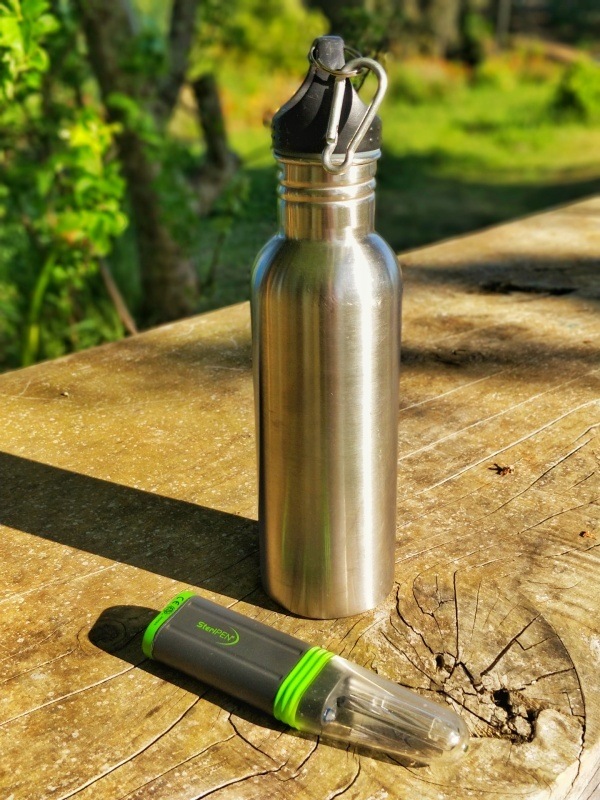
A compression bag: A bit like packing cubes, compression bags help you stuff and compress clothing so you can fit more into your bag. Just remember to roll rather than fold otherwise you’ll end up with some really creased clothing. Get one from REI | Backcountry | Amazon
Emergency cash: It’s always worth having some spare cash on you in case your wallet gets stolen. I tend to keep around $100 USD in different pockets across my backpacks in case of emergencies.
Travel documents: Keep a photocopy of your passport, travel insurance, and travel vaccinations (including yellow fever card) on your person, in case of emergency, as well as a digital copy somewhere safe (and preferably shared with someone back at home).
Travel insurance: I never travel without travel insurance and it’s the number one way you can prepare for your trip to South America.
Bank cards: Withdrawing money from ATMs is fairly straightforward in South America, although you can face a lot of bank charges if you don’t have an account that gives you free cash withdrawals abroad. I would highly recommend finding a company that allows you to do this. As I’m from the UK, I use a mixture of the Halifax Clarity credit card, which allows unlimited free cash withdrawals per month, as well as my trusty Monzo card (free withdrawals up to a maximum of £200 every 30 days).
Sewing kit: Being able to stitch up a tear in your favorite pair of trousers or even your backpack (something I’ve had to do on more than one occasion) is vital if you’re traveling for an extended period of time. Try this one .
Silk sleeping liner: Unless you’re planning on doing lots of hiking and camping, I would recommend leaving your sleeping bag at home and instead using a sleeping bag liner. You can hire sleeping bags from tour companies across South America, and when you do, you can protect yourself from whatever might be on them with this liner. I’ve also used mine religiously as an extra layer on overnight buses. I use this one .
Sleeping mask: If you need it to be dark when you sleep, a sleeping mask is a travel necessity, particularly as hotels and hostels can have curtains of varying quality. I love this one .
Microfibre travel towel: You want something lightweight that dries quickly, without feeling like it’s just moving the water around. I love my microfibre travel towel (you can also find them cheaper on REI ).
Ear plugs: I personally can’t stand them, but if you need silence to sleep then investing in a reusable pair of earplugs will ensure you get those Zs. Try these ones .
Travel pillow: Long overnight bus journeys can get tiresome and leave you with a crick in the neck if you don’t have anything to rest your head on. This pillow ( REI | Amazon ) from Sea to Summit is made from a silky, brushed polyester outer that’s soft to the touch and packs down extremely small.
Swiss Army penknife: Invaluable for making sandwiches on the road and handy if your accommodation doesn’t have a wine bottle opener! Check them out on REI | Amazon
Padlock: Many hostels and other accommodations have lockers and you’ll need your own sturdy padlock for using them. Check them out on Amazon
Safety: I’ve never used a money belt, mostly because they’ve always looked uncomfortable and hot to wear. Instead, I tend to have a small zippered bag with various internal pockets where I store my valuables and ensure I always keep my eye on them when I’m out and about. That said, I have heard of people having the straps of their bags chopped without them noticing, so this isn’t exactly a foolproof plan. If a money belt would make you feel better, try this one.
Door stopper: It might seem like the strangest thing to be included on this packing list for South America, but I always travel with a doorstop. I’ve stayed in some hotels and hostels where I struggled to lock my room door; as a solo female traveler, this is far from ideal. A plastic door stopper can be used on the internal side of the door to prevent it from being opened from outside, giving you peace of mind at night time. Try this one .
Scrubba: Doing laundry can be expensive and not necessarily work within your timeframes, if you’ve only got a day or two in a place. I’ve been using the Scrubba for years now and it’s the perfect way to wash your underwear, t-shirts, and even larger items such as trousers quickly and effectively. It doesn’t leave your clothes all soapy, like when you wash them in the sink, either.
Bite pen: If you’re traveling to a location where mosquitos are known to be, consider packing the bite away bite pen . It works by heating up to a set temperature within seconds – which, when applied to any mosquito bites, can remove any itchiness.
Toiletries for South America
Hanging toiletry bag: Easy to hang on the back of a bathroom door or suspend from a hook in your bedroom, a hanging toiletry bag is extremely functional and has been part of my backpack ever since I first started traveling to South America. This one from Sea to Summit has lasted me over seven years and counting.
Sunglasses: The sun’s strong in South America. Invest in polarising sunglasses with a UV filter to protect your eyes.
Sunscreen: It’s not only the beach where you can burn; altitude can see you burn even faster. Opt for a mineral-based sunscreen that’s safe to use in the ocean such as All Good Mineral .
Solid shampoo and conditioner: For weight-saving purposes, buy solid shampoo and conditioner bars, which should get you through a number of months without needing to buy any more. Ethique is a brand with lots of options for solid shampoo and conditioner , while Etsy has lots of brands selling them too.
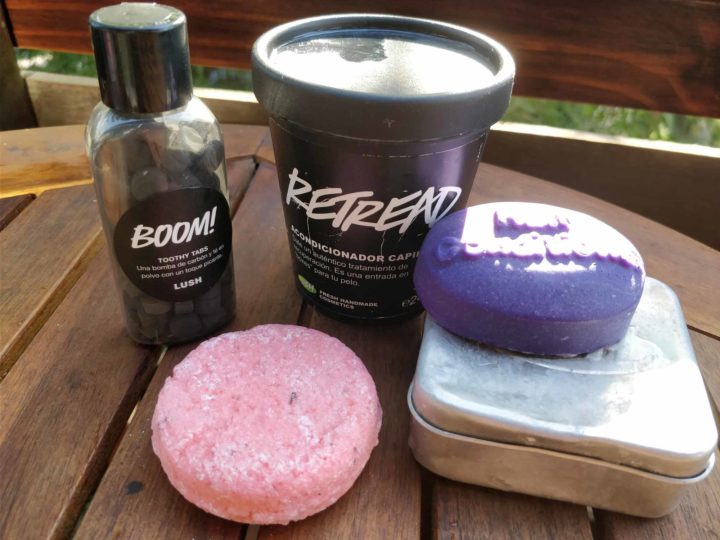
A lightweight, travel medical kit: For any cuts or more serious injuries, you’ll want a first aid kit on hand. Check them out on REI | Amazon or just put one together yourself.
Compeed plasters : Blisters are not something to take lightly as they can make hiking extremely uncomfortable. Pack some Compeed plasters before you go and use them preventatively if you know your shoes give you blisters or after a blister has formed to help it heal.
Face masks: These are no longer obligatory in shops, public transport, and other enclosed public spaces in countries across South America, so it’s up to you if you still want to use them.
Hand sanitizer: Keep a bottle on hand to use when there aren’t hand washing facilities available.
Malaria tablets: Check with your doctor as to whether antimalarials are required for your trip. If you’re heading into the Amazon, it’s likely you’ll need them.
Motion sickness tablets: Bus journeys into the Andes mountains can leave even the most robust travelers feeling a bit sick to the stomach. Motion sickness tablets can make you feel better.
Anti-diarrhea pills: It’s very likely you’ll end up facing a bad stomach at some point during your trip because of poor food preparation hygiene and water that isn’t safe to drink. While avoiding salad (because it may have been washed in contaminated water) and ice in restaurants is a good ploy, you’ll want some anti-diarrhea pills for when the inevitable happens.
Vaccinations: Jabs such as yellow fever, hepatitis A and B, typhoid, and rabies (the latter if you plan on heading to remote areas) are necessary for travel to South America. Consult your doctor a few months in advance of your trip, as some of these vaccinations require more than one dose.
Insect repellent: The mosquitos in South America enjoy sampling new blood, so make sure you’ve got a strong insect repellent that you can use in hot, tropical destinations. I avoid DEET-based repellent, which can damage your clothing and even melt the plastic. This one from Sawyer ( REI | Amazon ) doesn’t have DEET but still works.
Menstrual cup: I’ve used mine for the past four years and it’s incredible the amount of money – and plastic waste – that it has saved. Tampons can also be difficult to find in South America (or at least the big brands that you’re probably accustomed to at home). Bring a couple of emergency tampons for treks or situations where you don’t have access to running water for cleaning your menstrual cup. Try out this menstrual cup .
Hairbrush: These can be surprisingly heavy, so buy a small one that isn’t.
Baby wipes: Great for multi-day treks where showers aren’t a possibility. Do the environment a favor and buy some biodegradable ones. You can buy these in South America, too.
Face wash: Nivea products are easy to find across South America; other brands not so much, so bring what you need.
Moisturizer: As above.
Makeup: Foundation and concealer can be difficult to find for pale skin; otherwise you can buy all the major brands in cities across the continent.
Technology for South America
A eSIM: Rather than buy a new SIM in each country, I’m now using eSIMs which have changed my travel life! You can download them in a second, add credit in another second, and I’ve found them useful in multiple countries across the globe in the past few months. I recommend Airalo .
Camera: I travel with my Sony A7iii , a mid-level DSLR, with a great, all-around travel lens, the 24mm to 105mm Sony lens . However, unless you’re very keen on photography, sticking to a classic point-and-shoot camera is likely a better option, particularly as they draw less interest when you’re out and about and weigh considerably less. My dad swears by his Canon Powershot . Not not only is the image quality incredible but it’s compact and very easy to use. They are often very good deals on buying this camera, particularly when Canon have just brought out a newer version.
SD cards: Make sure you’ve got plenty of space for capturing photographs by bringing a couple of spare SD cards.
Kindle: It can be difficult to find English-language books across South America. While there are always random books for exchange at hostels across the continent, if you want a bit more control over what you read (or want to buy a guidebook, such as my Moon Chile , before you go), investing in a Kindle Paperwhite is a great idea. Remember to charge your Kindle regularly!
Power bank: Ensure your phone always has charge, even after a long bus journey or a few days away from civilization in the jungle. Anker is a great brand for reliable and inexpensive power banks ( Amazon ), while REI has a power bank that can be hooked up with solar panels if you’re planning on going far off-grid.
Rapid charging USB cable for your phone: Nothing beats having a slow-charging USB cable. I recently bought this one without realizing quite how long it was. It wound up as a fortunate mistake as it’s perfect for a hotel or hostel where the plug socket is in an awkward place!
Universal adaptor plug: Plug sockets vary a huge amount across South America. To avoid bringing the wrong adapter, it’s best to just use a universal adaptor so that you’ll never be left without access to electricity. Check them out on Amazon
Headphones: A pair of Bluetooth headphones can help you listen to music on bus journeys without needing to have your phone within reach of anyone else. I use these ones , but you might prefer less obvious in-ear headphones instead (these aren’t great when you’re trying to snooze on the plane!).
Laptop: Realistically, I would advise that you don’t bring a laptop unless you’re working on the road. I’ve found that the more valuables I take, the more stressful traveling becomes because of the fear of potentially getting robbed. It also adds to the weight of your pack.
Headlamp: Great for reading in bed or for any camping trips you do. Bring a torch or check out Black Diamond headlamps ( REI | Backcountry | Black Diamond )
Camping equipment for South America
I often get emails from readers asking whether they should bring their own camping equipment or buy (or rent) gear when they get to South America. The answer I always give is: it depends .
If you’re planning a camping-heavy trip to Patagonia and expect to spend a decent part of your trip staying in a tent – whether on multi-day hikes or to save money on accommodation – then it’s definitely worthwhile bringing your own equipment.
Not only can it be expensive to rent for extended periods of time, but you’re hiring gear that has probably seen more than its fair share of wear and tear and might not be in the best condition (or the most waterproof).
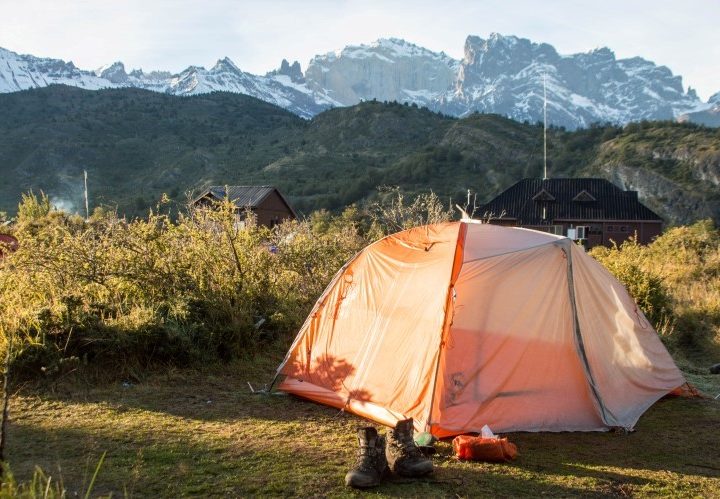
Buying camping equipment in South America is also something I don’t recommend. Gear is often significantly more expensive than what you’d find back at home, and, while there are affordable local brands, the quality, however, is generally pretty terrible.
If you’re planning a trip of two halves, with a stint camping and hiking and another leg without, you can always post your camping gear home, sell it to other travelers (something possible using Facebook groups or asking around at your hotel or hostel), or donate it.
Tent: Tents range from affordable to extremely expensive and everything in between. If you’re planning on doing multi-day hikes, I would strongly recommend investing in a lightweight tent; your back will very much thank you if you do.
When I hiked the Circuit in Torres del Paine National Park , I took the Big Agnes Copper Spur HV UL2 (and you can read my full review of the Big Agnes Copper Spur HV UL for more information). It is an expensive tent, but I was thoroughly impressed with how light and sturdy it was. More affordable options from North Face are also recommended.
- Try the Big Agnes HV UL2 ( REI | Amazon ) or the cheaper North Face Stormbreak 2 ( REI | Amazon ) or the roomier North Face Stormbreak 3 ( REI )
Sleeping bag: Warm and lightweight sleeping bags do come at a premium, however, it’s another area where I think it’s worth investing. Nights can get cold on the Inca Trail , in Patagonia or any other Andes region.
I recommend a good three-season sleeping bag if you’ll be camping at altitude or in Patagonia and the Nemo Disco 15 sleeping bag is a great choice. It’s filled with down and appropriate for three-season camping, meaning it’s comfortable down to 25 degrees Fahrenheit (-4°C) and a good choice for traveling in Patagonia during spring, summer, and even the shoulder seasons (September through November, and March through May) when the night time temperatures start to fall.
It also only weighs 2.6lbs (1.21g) and packs down small enough to fit in the bottom section of my Berghaus rucksack. It’s available for men and women and is a great investment for both camping in Patagonia and other parts of the world.
- For her: the Nemo Disco 15 ( REI | Amazon )
- For him: the Nemo Disco 15 ( REI | Amazon )
Sleeping pad: Small, comfortable, and durable sleeping pads are really hard to find, but will ensure you can get some sleep when you’re camping. You can get a basic, thin foam one for very cheaply. Alternatively, a bigger investment is in an inflatable pad – that gets you off the ground a little, keeping you warmer and more comfortable during the night.
- Get a cheap foam pad ( REI | Backcountry | Amazon ) or a more comfortable Therm-a-rest Prolite (buy it on REI | Backcountry | Amazon ).
Cooking utensils: When it comes to pots and pans, ultimately what you want is something lightweight, versatile and that can be cleaned easily. You’ll also want a bowl, a durable, plastic or metal mug, and a titanium spork (much sturdier than plastic).
- A set of lightweight pots and pans: Check out the MSR cooking pots Backcountry | Amazon
- Collapsible bowl: Check out Sea to Summit bowls REI | Backcountry | Amazon
- Camping mug: Check them out on REI | Amazon
- Spork: Check them out on REI | Backcountry | Amazon
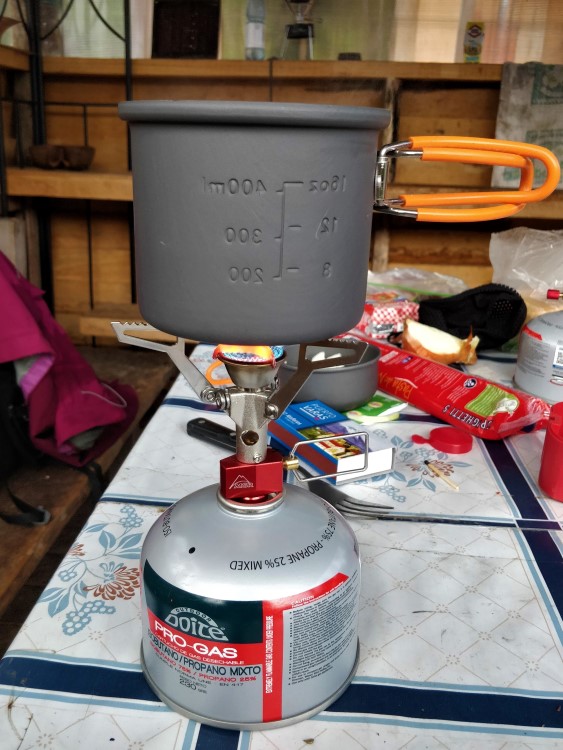
Cooking stove: A lightweight and affordable option is the MSR PocketRocket 2 , which is smaller than a lot of alternatives (which is great news when backpacking!) but does need you to buy gas canisters (which you should be able to find in towns and cities near hiking destinations).
- Check out the MSR PocketRocket 2 here ( REI | Backcountry | Amazon )
Monday 8th of January 2024
Thank you so much for this list! Leaving for 2 and a half months next week and this was an enormous help for me!
Steph Dyson
Sunday 14th of January 2024
Enjoy your trip Yanick!
Friday 1st of September 2023
Thank you for ths great article! I'll be traveling to Columbia this November, to work and to travel all around and do some multiday hiking, too. I just can't decide what type of backpack to take. I can't take both a travel backpack AND a hiking backpack - can I? How do other people resolve this issue? I hope this will be the most serious problem I will face during this trip :))))
Wednesday 20th of September 2023
Hi Bashak, I take a small backpack for hiking and a large backpack for my other stuff. You do look a bit odd but it does help! Steph
Sunday 14th of May 2023
Thank you so much for this list, very informative! I am still deciding if I should take a wheeled suitcase or a backpack for my trip to Argentina, Uruguay and Brazil. I will be traveling by bus a lot and my main concern is leaving my suitcase in the hold of the bus. Do you think I would be able to (or allowed to) take a 50L backpack with me on the bus? Then it will be with me at all times. Thank you!
Monday 5th of June 2023
Hi Esther, unless it can fit in the overhead compartments (which it likely won't) or you want it under your feet all the time, then you will need to put it in the hold. I've never had any issue with leaving my bag in the hold and I've done dozens of buses. Steph
Saturday 22nd of April 2023
Thank you so much for this very detailed list. I am about to travel to South America for 3/4 months this coming September and I found your article very informative. Thank you :)
Wednesday 26th of April 2023
Thanks Charlotte!
Friday 14th of April 2023
I dont think i have got half of what you recommend in my 65l bag & its jam packed & i feel i have got to much ? Dont know what im doing wrong 🙈
Hi Mike, if you're travelling with a tent and camping equipment then you will definitely struggle - I had to attach my tent to the outside of my rucksack. Otherwise, compression sacks are key! Steph
We’re on the road right now – join in on the fun and follow @thebrokebackpacker on IG!
- Meet the Team
- Work with Us
- Czech Republic
- Netherlands
- Switzerland
- Scandinavia
- Philippines
- South Korea
- New Zealand
- South Africa
- Budget Travel
- Work & Travel
- The Broke Backpacker Manifesto
- Travel Resources
- How to Travel on $10/day
Home » South America » Packing List
South America Packing List? • You HAVE to see these 23 Items (2024)
So, you’re feeling ultra adventurous and ambitious and have decided to take on South America as your next backpacking venture? To that we say: bravo! We’re impressed and super stoked for you!
As the fourth largest continent in the world made up of 12 countries – each with their own unique topographies and cultures – tackling South America is no easy feat. The place is huge . With varying extremes from scorching jungle to freezing glaciers – and activities from tango dancing to big-wave surfing – knowing what your South America packing essentials are is baffling.
And here we are to help, friends! We’ve put together this South America survival guide with you in mind. Together, we’ll walk through your what to pack for South America plan step by step.
So, get comfy, and prepare to absorb all this valuable information to get you primed and prepped for everything South America has to offer. One thing’s for certain, you’re in for a wild and unforgettable ride!
And off we go…

Unlock Our GREATEST Travel Secrets!
Sign up for our newsletter and get the best travel tips delivered right to your inbox.
The Ultimate South America Packing List
What to pack for south america checklist: personal stuff, the basic stuff to pack for south america, final thoughts on what to pack for south america.
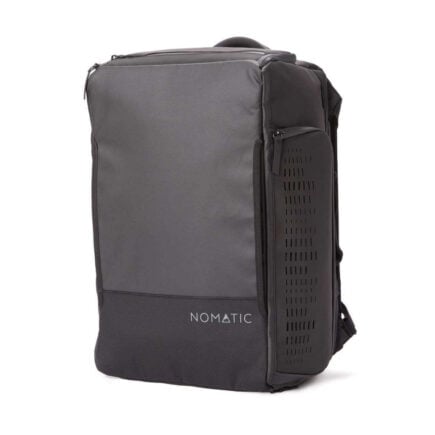
Nomatic Travel Bag
- Capacity > 30L
- Price > $299
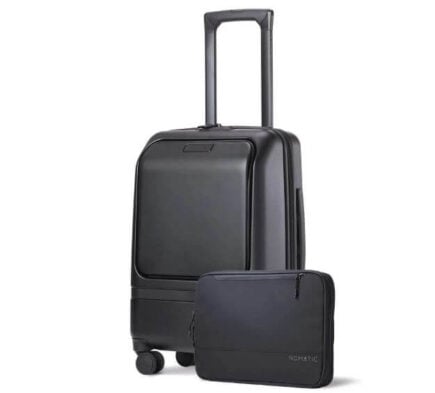
Nomatic Navigator Carry On
- Capacity > 37L
- Price > $400
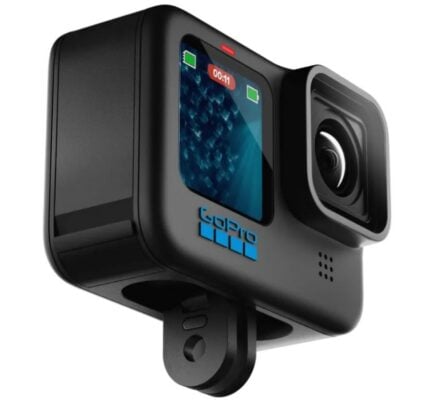
GoPro Hero 11
- Resolution > 5k
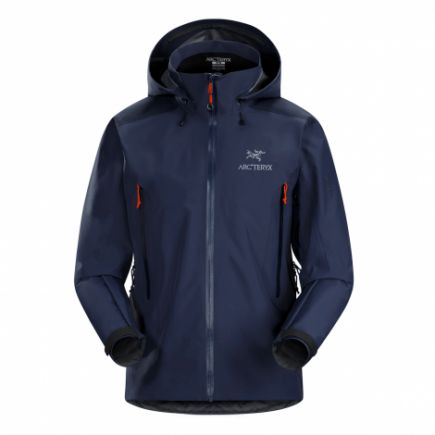
Arc’teryx Beta AR Jacket
- Price > $600

Insurance From World Nomads
- Price > Click For a Quote
Below you’ll find a top needs packing list: tips and tricks, what to wear while travelling South America , a breakdown of overall seasonal weather conditions and how to pack for them – plus some special packing suggestions for guys and gals, and also what not to pack.
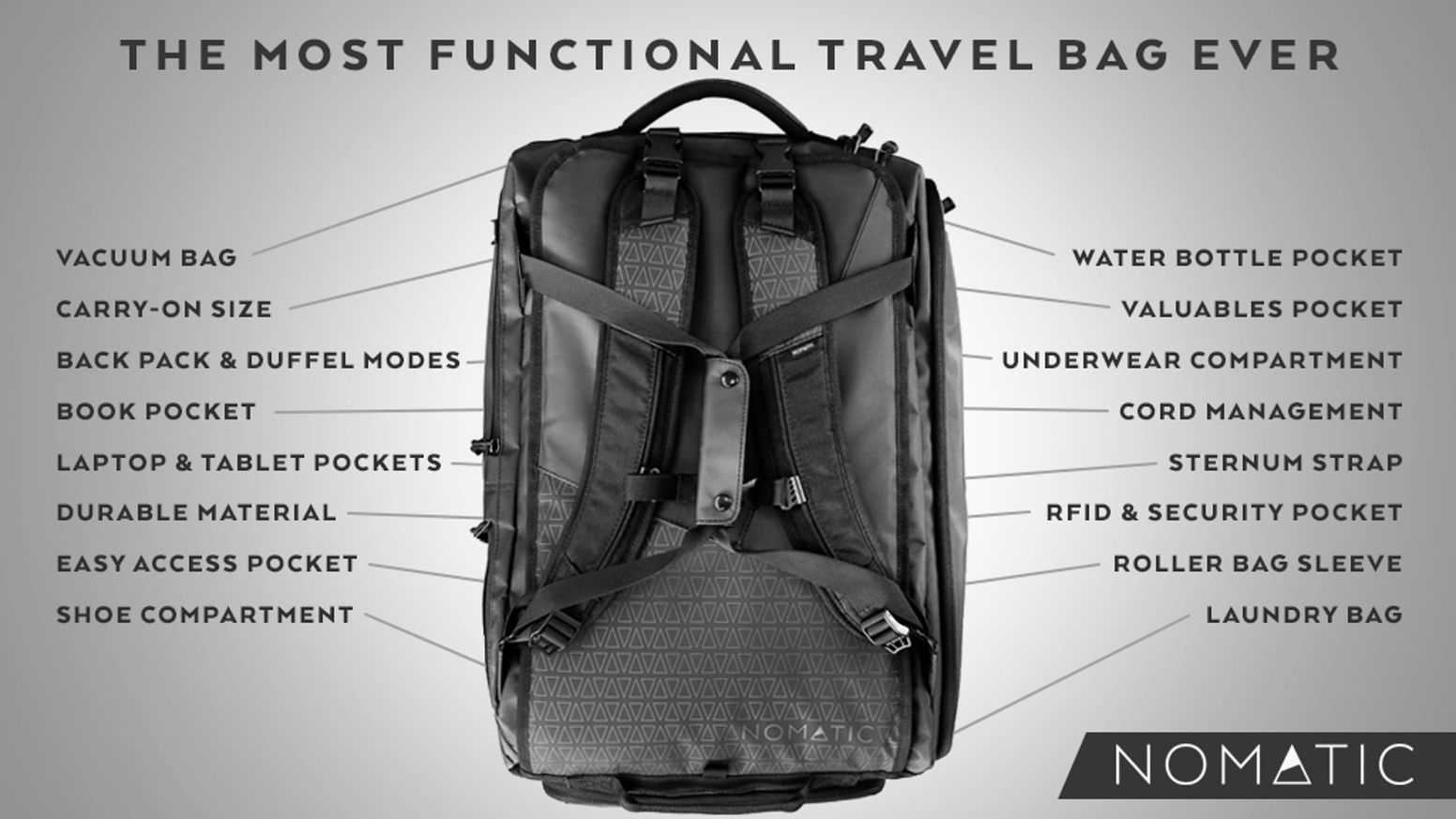
Best Backpack For South America: Nomatic Travel Bag
Before you even take on the task of figuring out what to pack for South America, you’ll need an amazing backpack to pack it all into. For all types of travelers and destinations, our number one recommendation is the Nomatic Travel Bag .
The Nomatic travel bag covers every detail to make backpacking travel the best experience. Because of its smart design, it manages to provide loads of packing space in a convenient, carry-on size package! Its handy built-in pockets make plenty of room for all the necessities on your what to pack for South America checklist – you’ll find separate compartments for important items like shoes, water bottle, electronics, underwear and darn tough socks . As an added bonus, there’s also an RFID-safe and cord management pocket.
You have a choice between backpack or duffel bag carry, and extra carrying comfort for your back thanks to its innovative strap system and detachable sternum strap. And its black, waterproof material is every bit sleek and modern as it is durable and tough. There is a reason why most Broke Backpacker staff swear by this backpack.
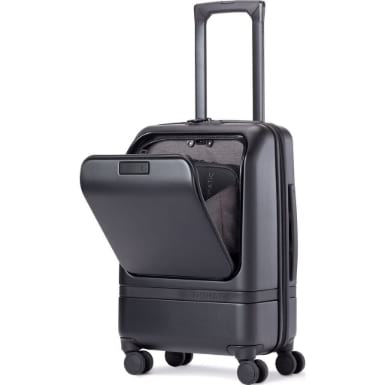
Best Suitcase For South America: Nomatic Carry-On Pro
Backpacks not your thing? That’s ok. Our friends at Nomatic are back again with a great alternative to their badass Travel Bag; the Nomatic Carry-On Pro.
This suitcase is ultra-durable, sleek, and comes with a handy tech compartment for transporting your laptop and other electronic bits. Nomatic has been an industry leader when it comes to travel gear and that reputation is reflected in the quality build design and functionality of the Carry-On Pro suitcase. I’ll be honest, I would need more space in my luggage than a carry on allows for such an epic trip. However, if you can pack light for South America then you can take full advantage of budget flights.
Check out our Nomatic Carry-On Pro review to learn more about this epic suitcase.
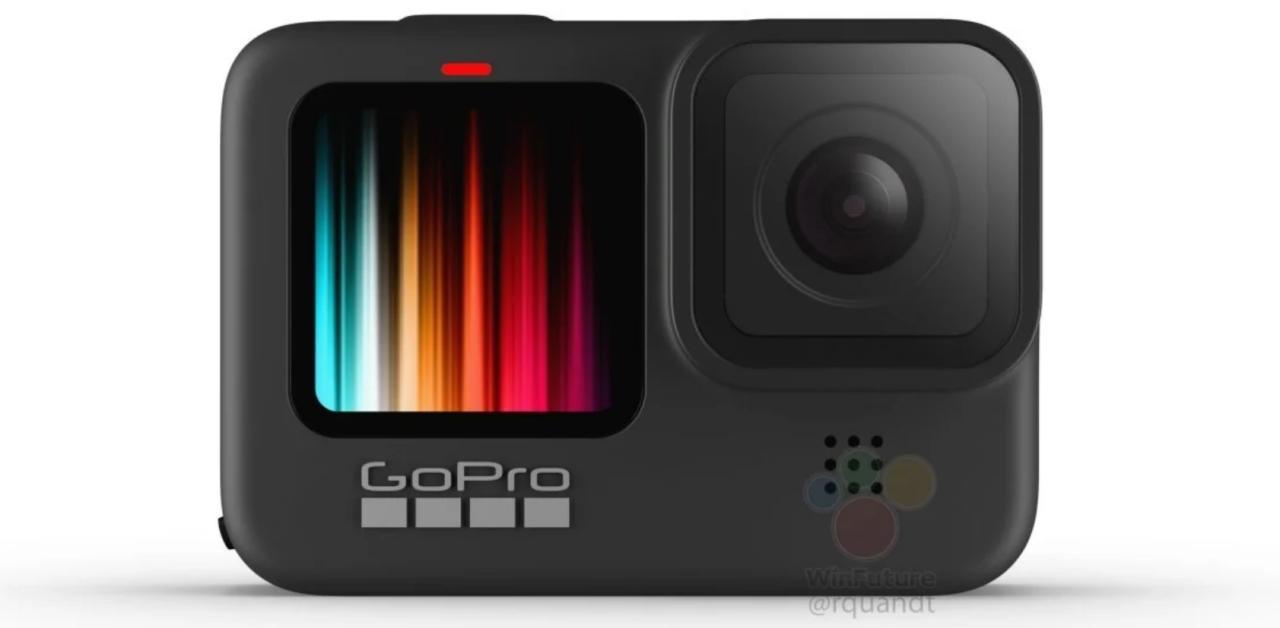
Best Camera For South America: GoPro Hero9 Black
For most of us, our smartphones now feature cameras with stunning photo capabilities.
But… if you are an aspiring photographer who wants to take next-level photos and video beyond iPhone selfies, I recommend going with an action camera like the GoPro Hero9 Black .
It does deliver pro-quality video and gives you a bunch of a different angle options and shooting speeds to work with for photos (including a selfie-mode).
Think of a camera purchase like this as a long term investment that will have you capturing epic shots well beyond your time exploring here. If you are looking for something cheaper for video specifically, check out these epic GoPro Alternatives .
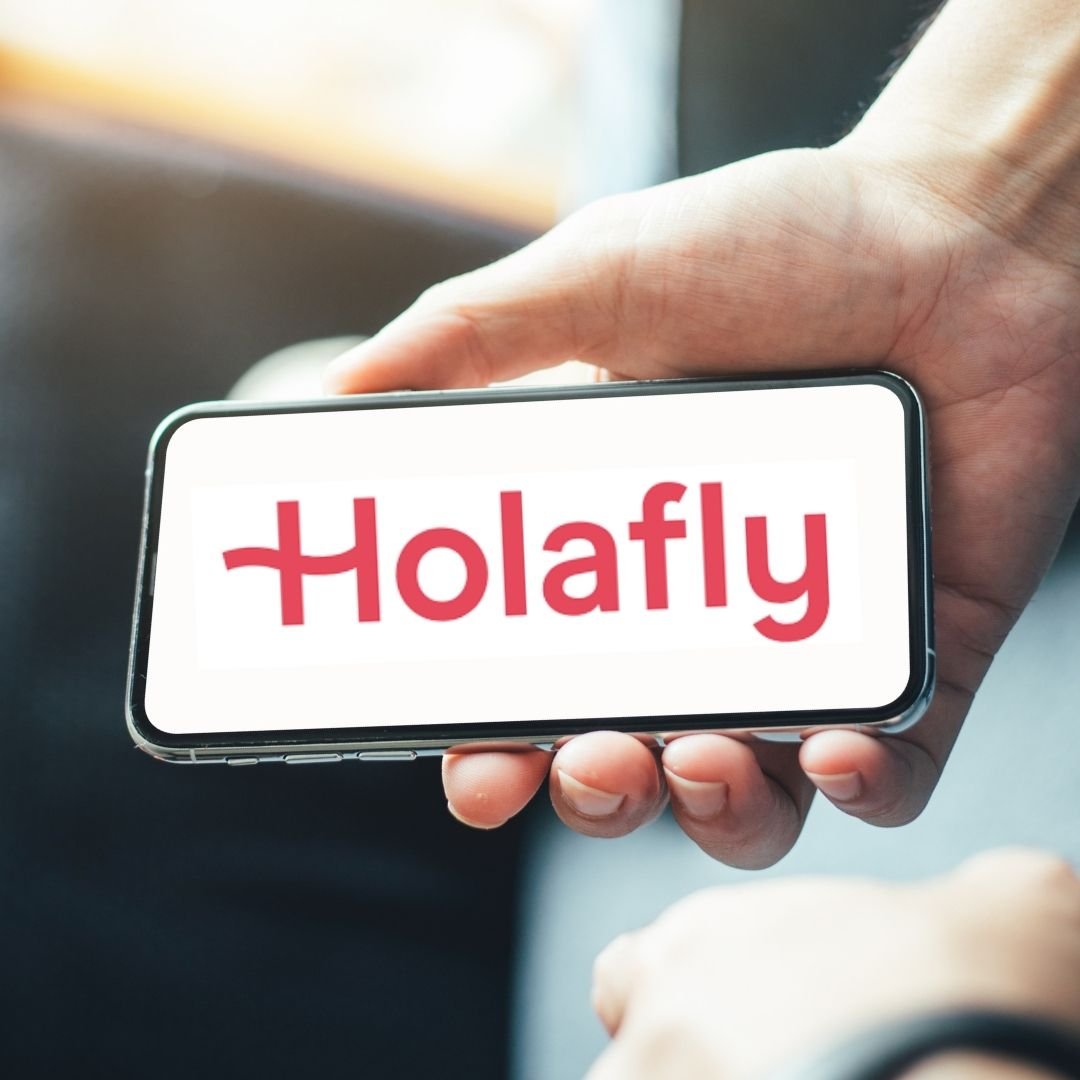
Best Sim For South America – HolaFly eSim
The good news about South America is that there is pretty good 4g and 5g Internet coverage, taxi apps and food delivery apps. The bad news is that your native SIM card will not work and so you will not be able to access any of this online goodness until you rectify that particular situation.
You can waste time hanging around phone shops queuing to get a local SIM card or you can simply install a eSim onto your phone before you leave home. You just access the HolaFly site, choose the package you need, download it and off you go – you are online the moment you land at the airport.
eSims are easier to set up and better than the environment than plastic sims. The downside is that not all phones are eSim ready.
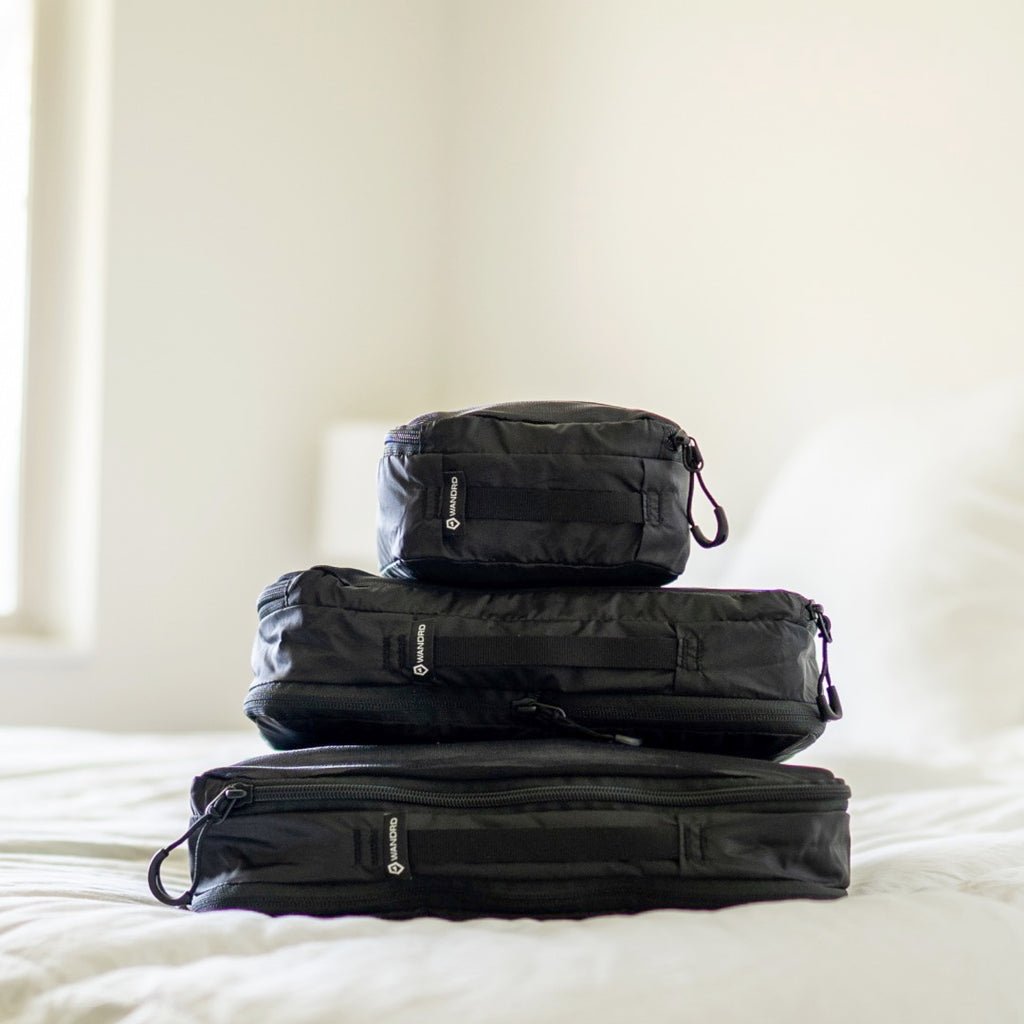
Packing Cubes For South America – Wandrd Packing Cubes
In case you have never used them, packing cubes are little compression cubes that allow you to neatly pack clothes in in order to help facilitate better packing. They allow you to pack more stuff, and to keep it all better organised.
For the longest time, I thought that packing cubes were a superfluous indulgence, but boy was I wrong. Now I never travel without a few.
These ones from WANDRD are great quality and excellent value for money.
In terms of what to wear in South America, there is rather a lot to think about. Firstly, climates vary DRASTICALLY deepening on where, and on when you go. For example, November in Bogota is cool and autumnal but up in Cartagena they have tropical heat and tropical rain. In Argentina and Chile, they get full blown winters.
You will also need to be mindful of not dressing like a tourist all the time as this will make you a target for thieves.
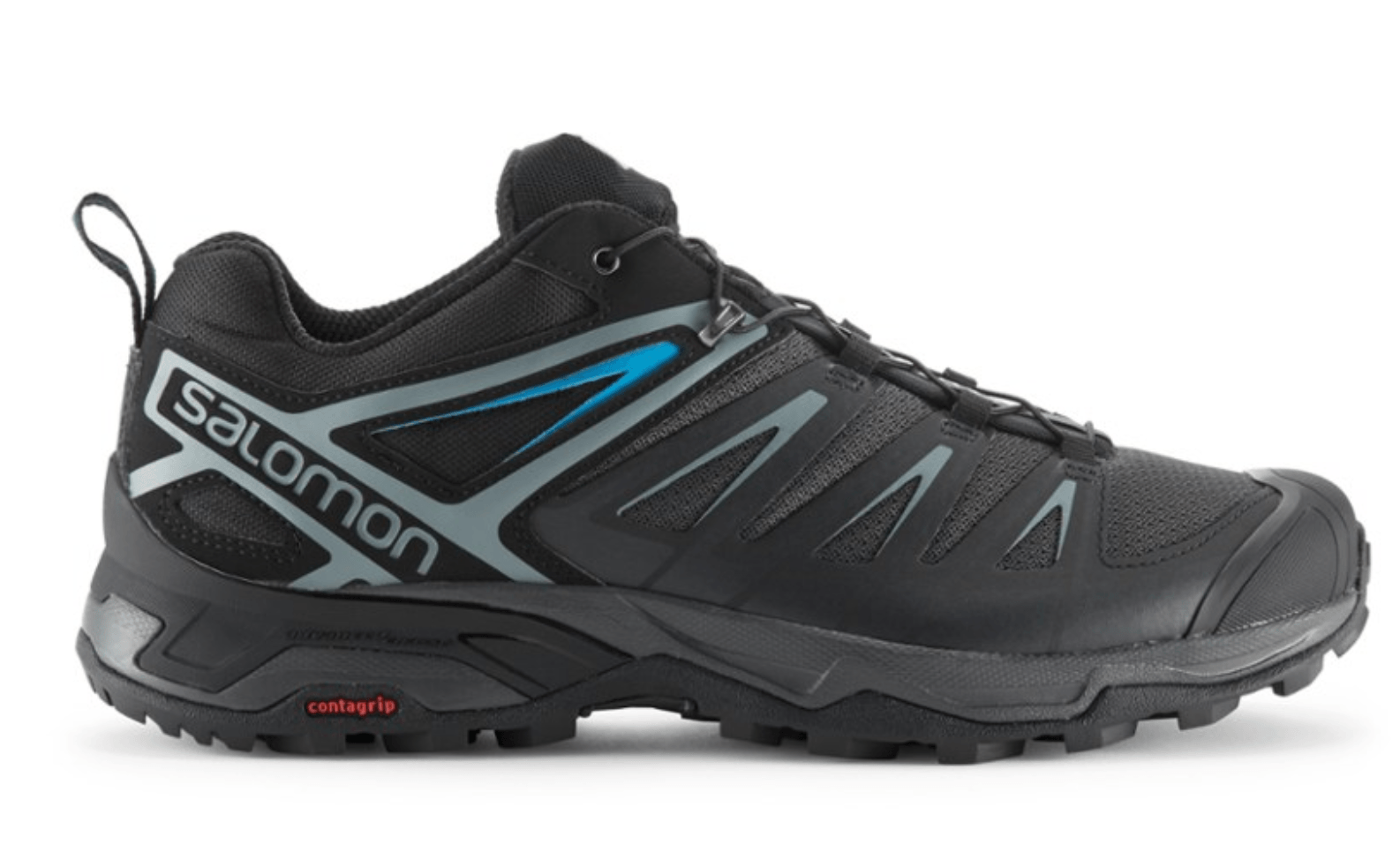
Salomon X Ultra 3 Low Aero Walking Shoes
It is true that a lot of South America backpackers spent the whole trip in sandals and flip flops. This is however foolhardy for a number of reasons. Firstly, no matter where you go there will be a lot of walking involved whether this is simply exploring the cities or hitting the trails. Further, wearing flip flop in Cosmopolitan cities like Buenos Aires and Bogota simply screams “tourist”.
I admit that most shoes that are also good for hiking are not the most attractive pieces of footwear. But they are some of the most comfortable and deliver good ankle support for a long day of walking about town. I mean, your body is already going to be suffering enough from all of those 2-for-1 mojito’s, beers and other famous South American party substances.
Plus, the Ande mountains offer some of the best hikes in the whole world. From the Inca trail, to Colombia’s La Ciudad Perdida, get your walking shoes on and get out there!
Check out the women’s Salomon X Ultra 3 Low Aero .
Matador Travel Towel
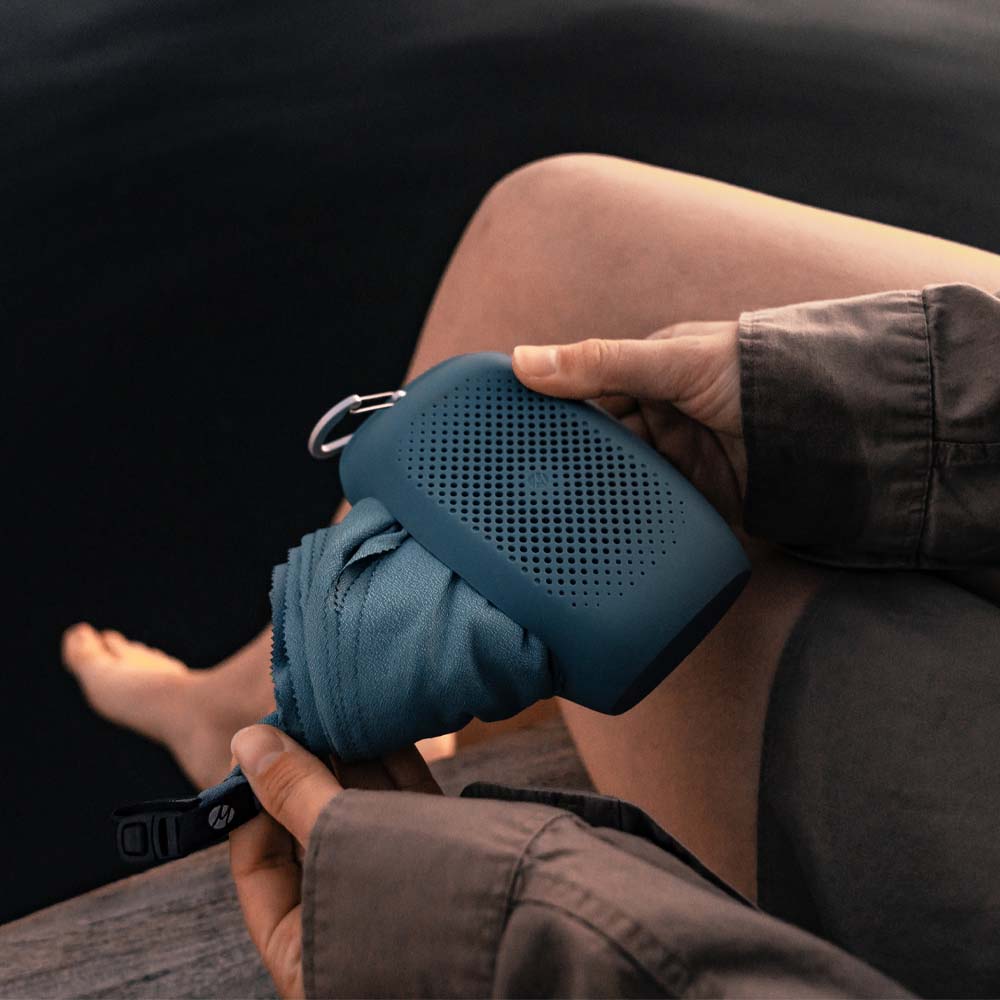
Towels are essential backpacking gear as a lot of hostels don’t provide them or if they do, they may not really be all that clean. However don’t bring a ‘normal’ towel on your backpacking journeys, they are big and take up loads of room in your pack and they take ages to dry.
Travel pros like use micro-fibre dry towels that roll up into tiny, space saving proportions AND they dry unbelievably quick. Granted, they are not quite as comforting as a cotton towel but its a trade of that travellers need to make. A good micro-fibre travel towers is essential travel gear on any ultimate backpacking gear list.
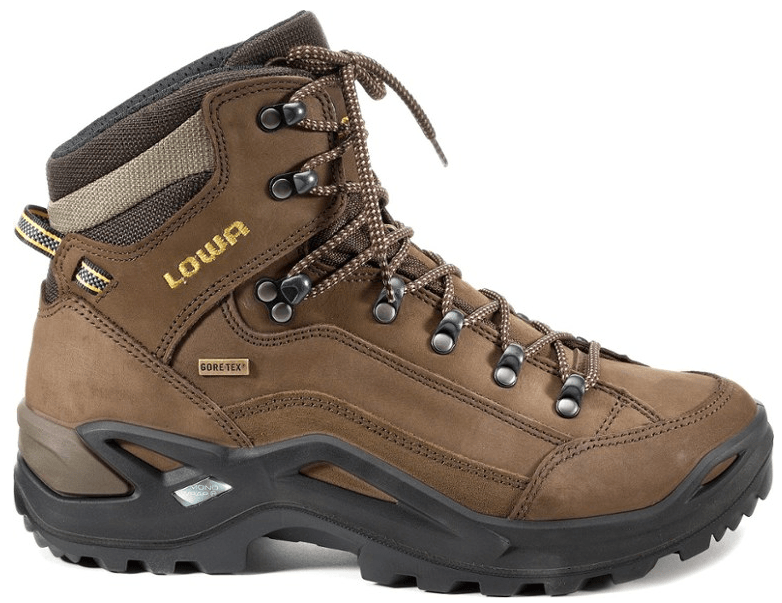
Lowa Renegade GTX Mid Hiking Boots
If you plan on doing some serious hiking in South America, then you should consider bringing some boots.
This is especially pertinent if you are going above 3500 metres, or are going hiking in Chile, Argentina or Patagonia where it gets really icy and snowy.
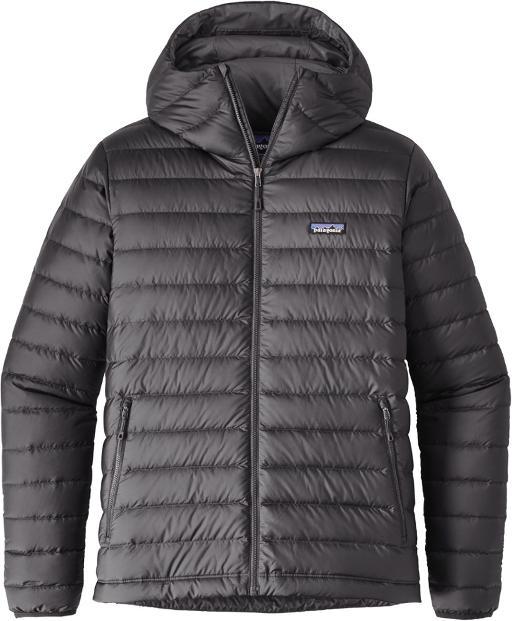
Patagonia Down Sweater Hoody
Did somebody just say Patagonia?! Whilst most people imagine South America to be steaming hot, the truth is that a lot of regions get some real weather diversity. If you are headed to Colombia, Peru or Ecuador, then the evenings can get very cool in the elevated regions.
It weighs just under a pound and provides an excellent weight to warmth ratio. If you don’t go for one of the super bright colors, it is pretty stylish and city-worthy also.
Some form of jacket is absolutely essential for South America.
Check out our best travel jackets article for more inspiration.
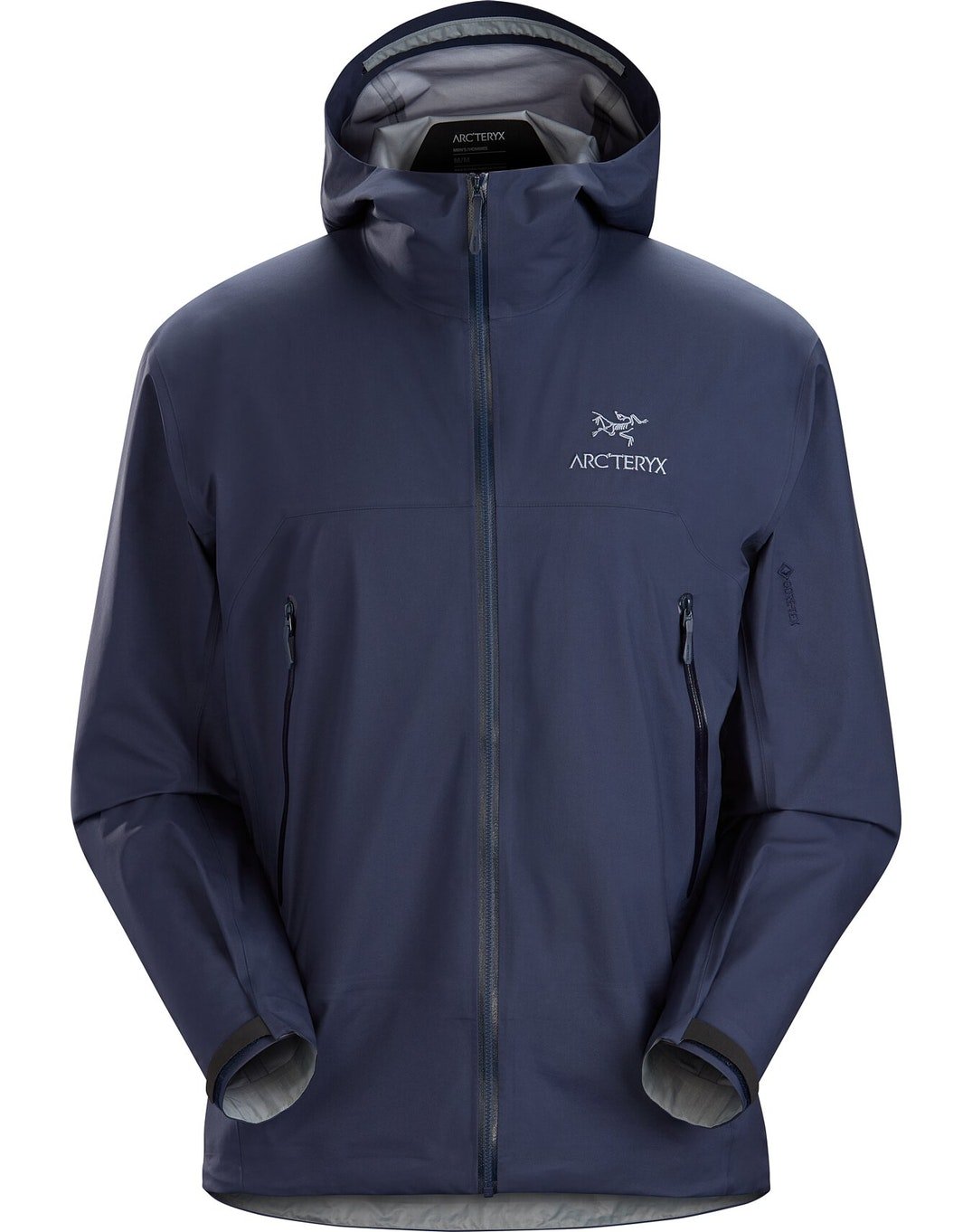
Arc’teryx Beta AR
Did you know that the surface of the earth is over 70% covered in water? And you know how that water got there? Yep because it tends to here rain here on planet earth quite a lot! It is almost a given that at some point in South America, you will come across some hardcore rain. Whether you hit the Caribbean monsoon season, or simply get wet in the afternoon Amazon downpour, a rain jacket will get a good workout.
There is no such thing as bad weather, only the wing gear for it. Don’t let a bit (of a lot) of rain ruin your trip and make sure you are ready with some top notch rain gear.
This is our pick of the many rain jackets we have tried. It’s reliable & stylish and looks good worn out in the mountains or in city bars.

So it rains a lot of in South America and all that water ends up somewhere! There are endless chances to get wet in South America. The beaches of Brazil should need no introduction by now but then there is the lush Amazon river (watch the piranha’s though) and even landlocked cities like Bogota have natural hot springs in commuting distance!
Swimming gear is an essential piece of South America packing.
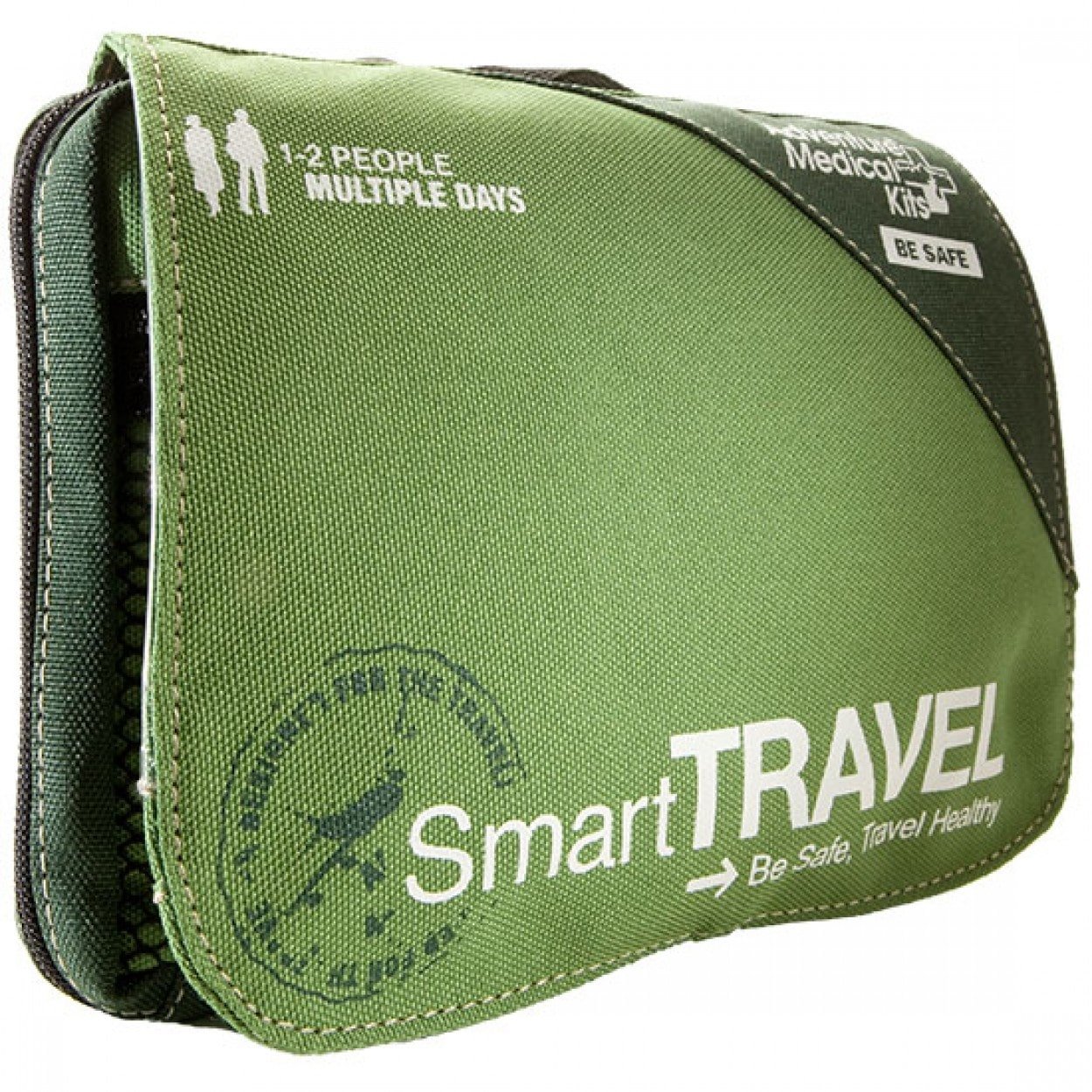
Travel First Aid Kit
You don’t need to tote around half a pharmacy, but a well-stocked first aid kit should be in all our backpacks. Stuff happens on the road and it’s inconvenient and embarrassing when you can’t manage small situations like a cut finger or hangover migraine.
You can tuck this lifesaver away in a forgotten pocket – and it’ll be there when you need it.
Tip: Add a few bits and pieces to the first aid kit after you purchase it, like extra headache medicine, any personal meds you need (like allergy pills), whatever you take to calm your stomach and a few more plasters.
Travel Insurance From World Nomads
ALWAYS sort out your backpacker insurance before your trip. There’s plenty to choose from in that department, but a good place to start is Safety Wing .
They offer month-to-month payments, no lock-in contracts, and require absolutely no itineraries: that’s the exact kind of insurance long-term travellers and digital nomads need.

SafetyWing is cheap, easy, and admin-free: just sign up lickety-split so you can get back to it!
Click the button below to learn more about SafetyWing’s setup or read our insider review for the full tasty scoop.
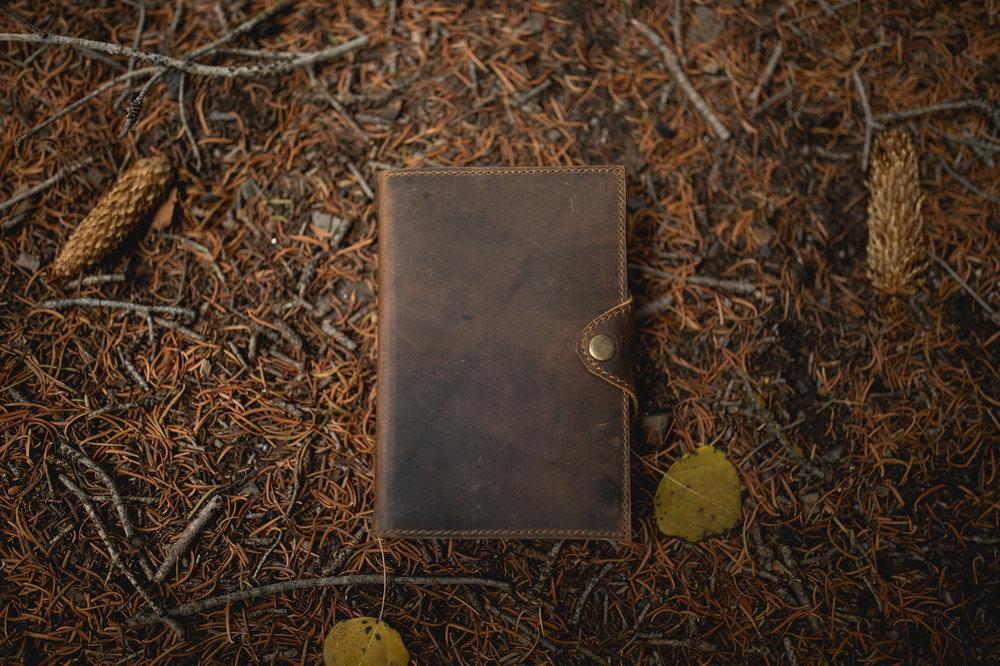
Planner/Travel Journal
Keeping a journal is one of the best things to do when traveling. The Drifter Leather Journal by Kodiak is our favorite, it works great for digital nomads and organized backpackers and can be used as planner or a dream diary – whatever you want!
Keep on track with your goals, travels and save those precious memories, especially the ones you do not want to share online. This one is bound in beautiful leather so it looks beautiful and will withstand life on the road.
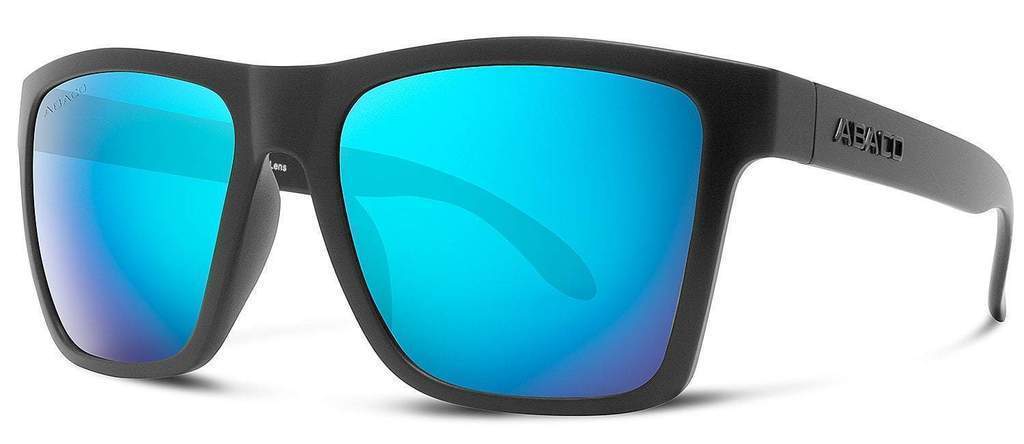
Abaco Sunglasses
A reliable pair of sunglasses is undoubtedly one of your South America packing essentials. Our favorites are Abaco Polarized Sunglasses because they deliver on quality and style.
They’re built tough with triple-layer scratch-resistant lenses and trademarked Adventure-proof Frame Material. You can also customize them with your choice of lens and frame colors to reflect your own style.
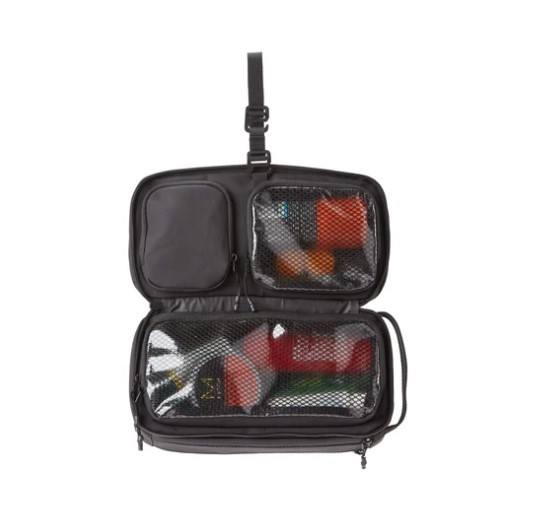
Hanging Toiletry Bag
Another backpacker/traveler favorite for staying organized is a hanging toiletry bag . It’s extremely helpful to have all of your accessories neatly gathered in one bag that you can hang for easy accessibility, especially when counter space isn’t plentiful or even available.
A well-organized bag is worth having whether you’re tree whilst camping or a hook in the wall – it helps to have quick access to all your stuff.
Historically, I have been the guy who has my stuff all over the bathroom, so getting one of these things really changed the toiletry game for me. Plus they are not too expensive either. A no-brainer essential.
This one by Nomatic is possibly the best toiletry bag on the market. It is made from water resistant, wipe cleanable material that guarantees longevity and it offers excellent organisational capabilities. It is also comes with a hang-up-hook so you can hang it over the shower head or your hostel bed.
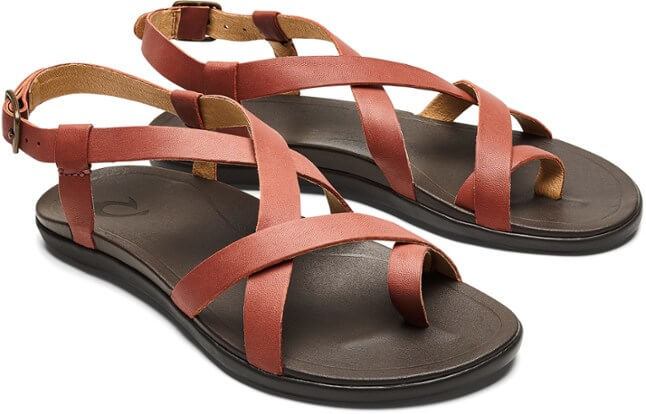
OluKai ‘Ohana Flip-Flops
Circling back to the footwear question, now we are going to talk about sandals. There is always a time and place for flip flops and sandals and South America is no exception. From the beaches of Rio to the poolsides of La Paz, you will not regret throwing a pair of these in your South America packing.
These Olukai flip flops are ultra-comfortable, well-made, and come in a variety of colors.
Check out the women’s OluKai ‘Ohana Flip-Flops .
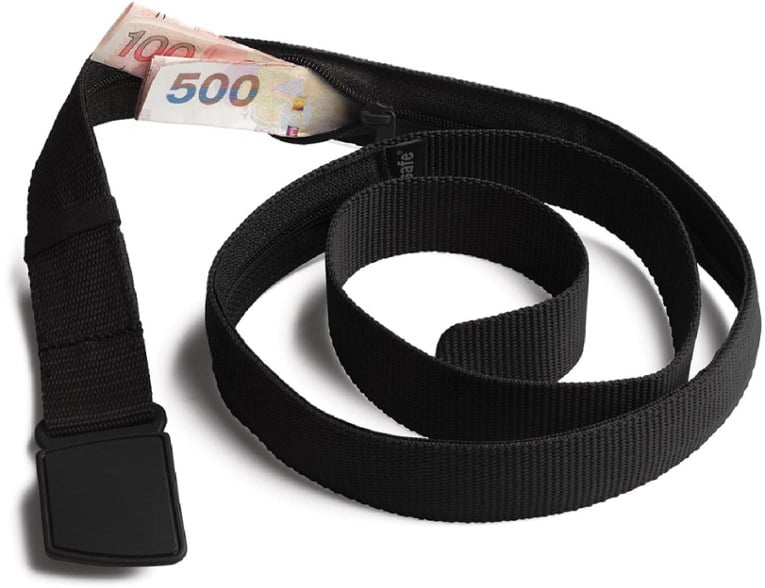
Money Belt By Pacsafe
There is no point denying that South America can be VERY dangerous and tourists are sometimes targeted by thieves. Watch out for bag snatchers, pick pockets and be careful with your drinks as spikings with drugs do occur.
And then there is the violent muggings – I was personally jacked at knife point and I know a few people who had guns pulled on them.
Therefore it is always a good idea to use a money belt to hide your cash just in case something does go wrong.
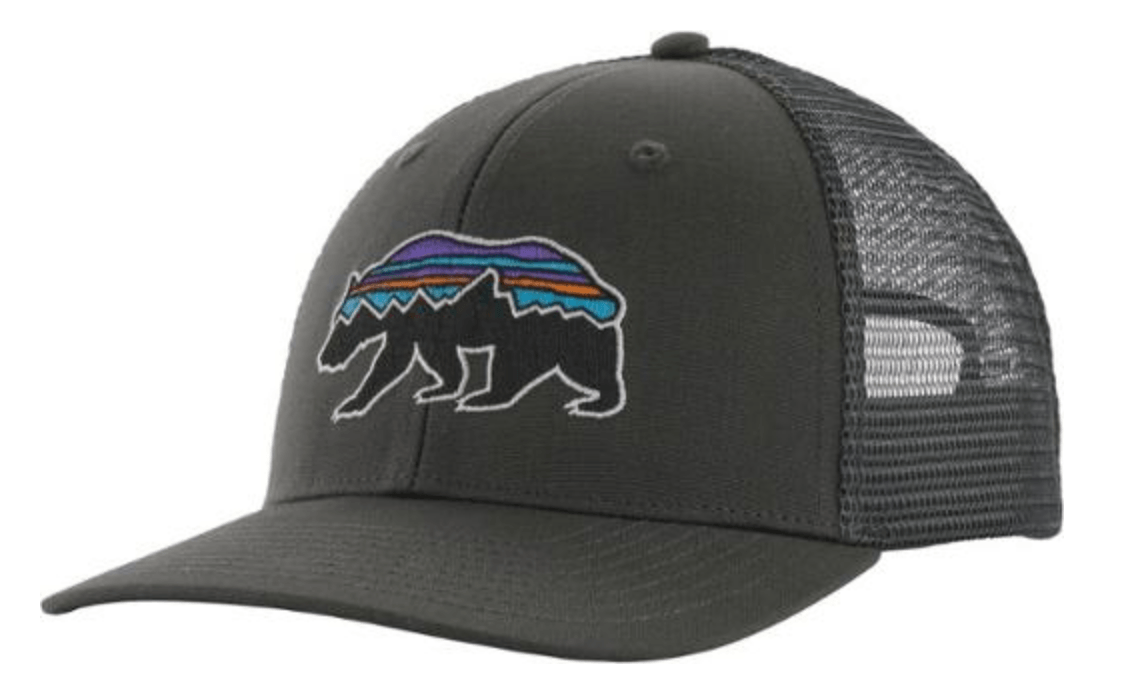
Patagonia Fitz Roy Trucker
Even on cold days, the sun can be very strong in the Ande’s and can faces in minutes. A good hat is therefore a wise investment. They are also useful for going incognito when you don’t want to stand out like a sore Gringo.
Patagonia makes great hats. I have probably bought three or four of these over the last five years. Simple. Practical. Comfortable. That is what you are after.
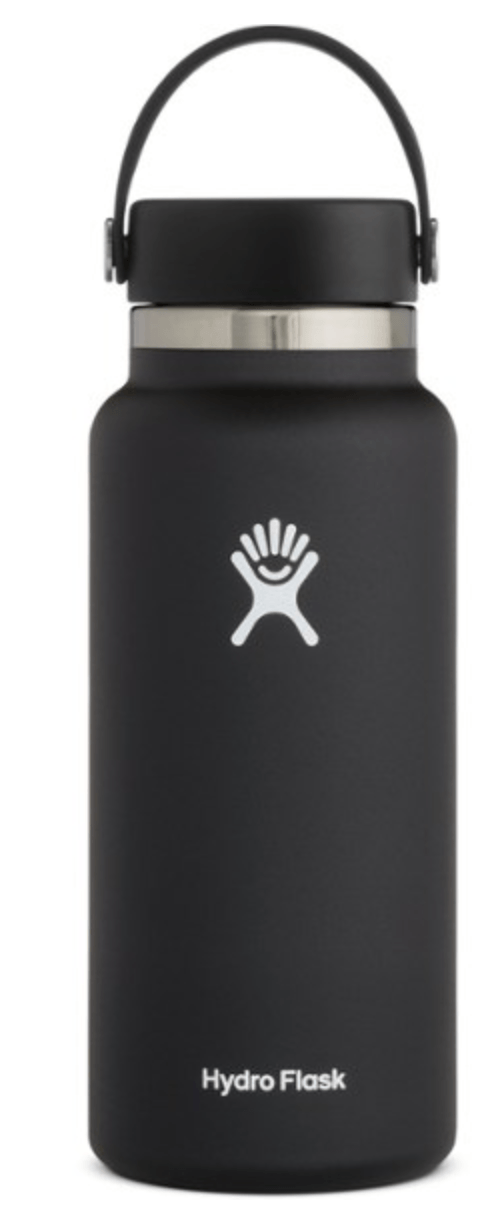
Waterbottle – Hydroflask Vacuum Bottle 32 oz.
Packing a reusable water bottle is probably the best thing you can personally do to combat single-use plastic bottle use whilst traveling. There is simply zero need to buy plastic water bottles. Tap water is mixed bag in South America and its safety varies from one town to the next. Still, you can buy bags of water cheaply and use these to fill up your water bottle.
We love the Hydroflask Vacum Bottle for its quality and because it keeps cold water cold for many hours and vice versa for hot beverages. This bottle is the ideal water bottle to get not just for your South America trip but for daily use. Please don’t be that person buying plastic water bottles. We are all judging you…especially mother earth.
If you go with the Hydroflask, you’ll probably never need to buy another waterbottle again.

Petzl Actik Core Headlamp
Headlamps are great for traveling for many reasons. Firstly, they are useful as hell if you go camping or on an early sunrise mountain hike. Then, they come in useful for finding your way to your hostel bed at 3am without having to turn the lights on. They are also a Godsend if there is a power cut (pretty common in India, Nepal or Venezuela) and great for navigating darkened alleyways in Turkey & Spain.
Not all headlamps were created equal and this is one of the best. The Petzl Actik Core comes with a USB rechargeable battery (full recharge in 3 hours or less); however, it is compatible with AAA batteries. Water-resistance is another critical feature. This product can withstand splashing; but keep in mind, water-resistant does NOT mean waterproof.
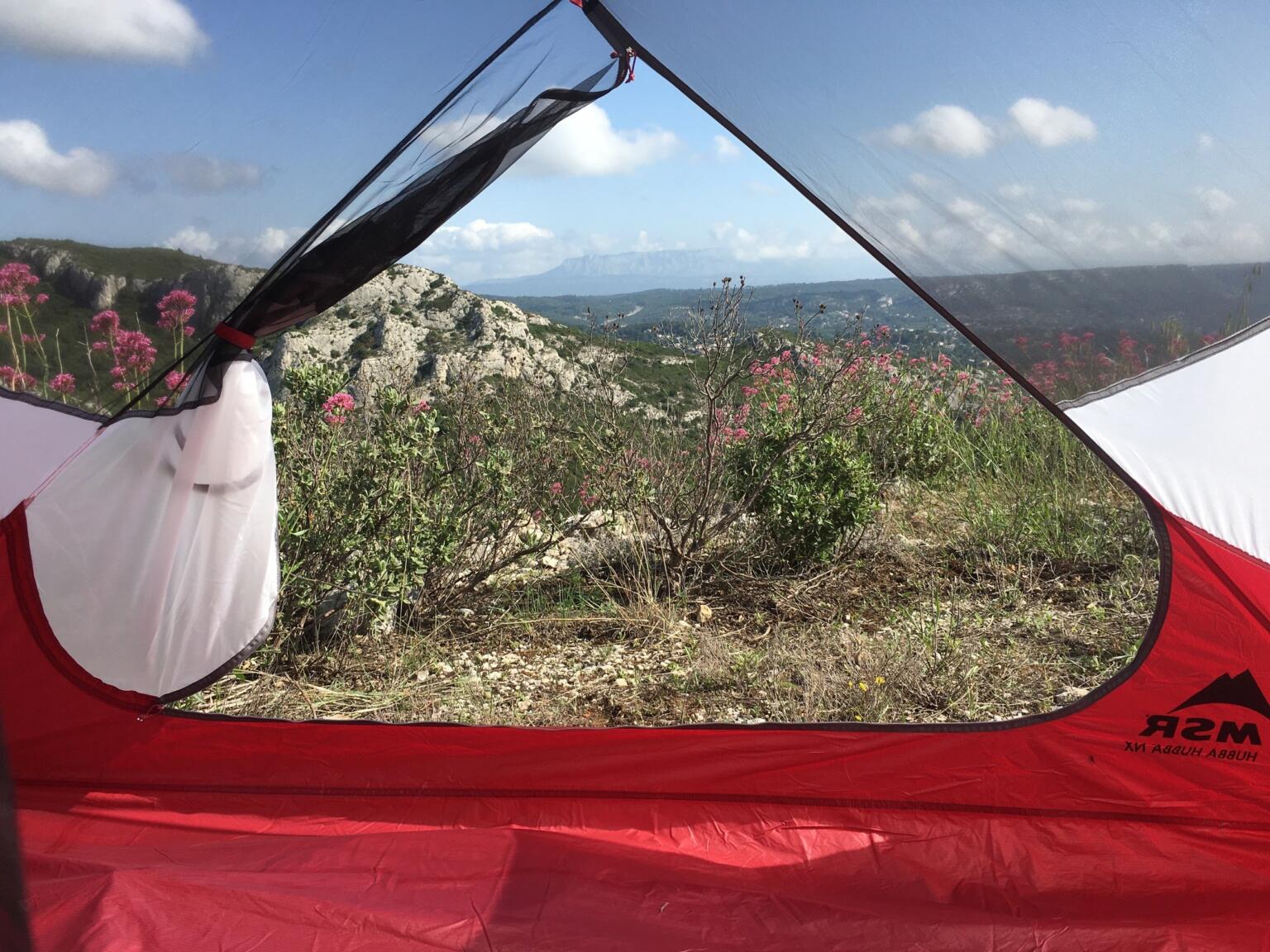
MSR Hubba Hubba 2p
South America presents some awesome camping opportunities. To make the most of them, bring yourself a good quality backpacking tent.
This is more the choice for those in the market for budget backpacking gear. It’s got all the perks of a top-notch backpacking tent without all the freakishly high numbers on the price tag.
Yeah, it may not quite make the cut as ultralight backpacking gear but think of what you’re getting! The MSR Hubba Hubba 2p is mega-roomy and has multiple of pockets for keeping your self organized when settling in for the night.As far as budget backpacking tents go, this is one of the best. It’s a happy medium between the ‘prepared for anything’ mode and the ‘I wanted to go for a trek so I bought this for 2000 rupees’ afterthought.
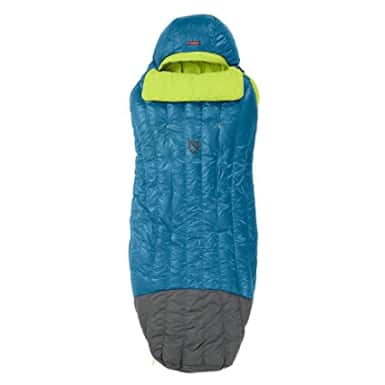
Nemo Disco 15
At some point in your trip to South America, you will probably go camping or at the very least will spend a night at a hostel with insufficient bedding, or with dirty bedding that you would rather not lay in. Therefore bringing a sleeping bag is often a great investment.
There are a LOT of sleeping bags on the market today and we have tried a lot of them. The quality and standards varies and not always in correlation with the price – pricey does not always mean better. The Nemo Disco 15 is a great all rounder sleeping bag packing in warmth, durability and a reasonable price tag.
On top of the essential items listed above, here is an additional suggested checklist of what to pack for a South America trip:
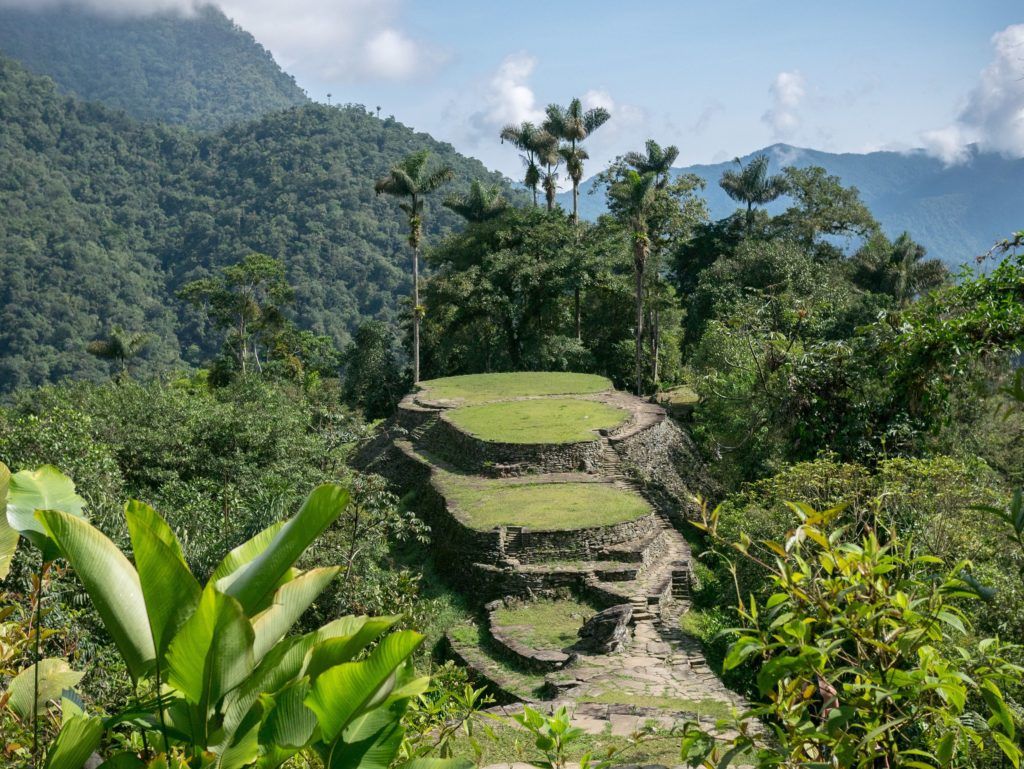
- A few pairs of comfortable pants/jeans
- 1-2 pairs of shorts (summer/late spring)
- A few pairs of socks
- (Sexy) underwear x 2/3
- Ladies: a few dresses, pants, outfits, or desired lady apparel for a night on the town. Whatever makes you comfy!
- Dudes: A few collard shirts or something half-way decent for a night on the town. Whatever makes you comfy!
- Smartphone with a good camera for photos if you are not bringing an actual camera
- Portable power bank for charging your phone on the go
- Phone charger
- Amazon Kindle for reading by the pool
- Copy of your passport just in case
- Cash (not too much, there are ATM machines everywhere
- Packable Towel

Our GREATEST Travel Secrets…
Pop your email here & get the original Broke Backpacker Bible for FREE.
And that’s it for your South America survival guide, amigos! You now have everything you ever wanted to know about what to pack for South America. As you prepare, refer back to the top-23 needs packing list, our tips on what to wear in South America and how to pack for the varying seasonal conditions. Remember that you also have our special packing recommendations for women and men – plus, what NOT to pack for South America.
Just keep in mind that South America is a BIG place, so be sure to do any necessary research for the specific countries on your itinerary for any extra gear or safety precautions you’ll need to take for more advanced activities. But, overall, follow our tips, and you’ll be ready for anything that wonderful South America throws your way!
Ok, you can get excited now!

And for transparency’s sake, please know that some of the links in our content are affiliate links . That means that if you book your accommodation, buy your gear, or sort your insurance through our link, we earn a small commission (at no extra cost to you). That said, we only link to the gear we trust and never recommend services we don’t believe are up to scratch. Again, thank you!
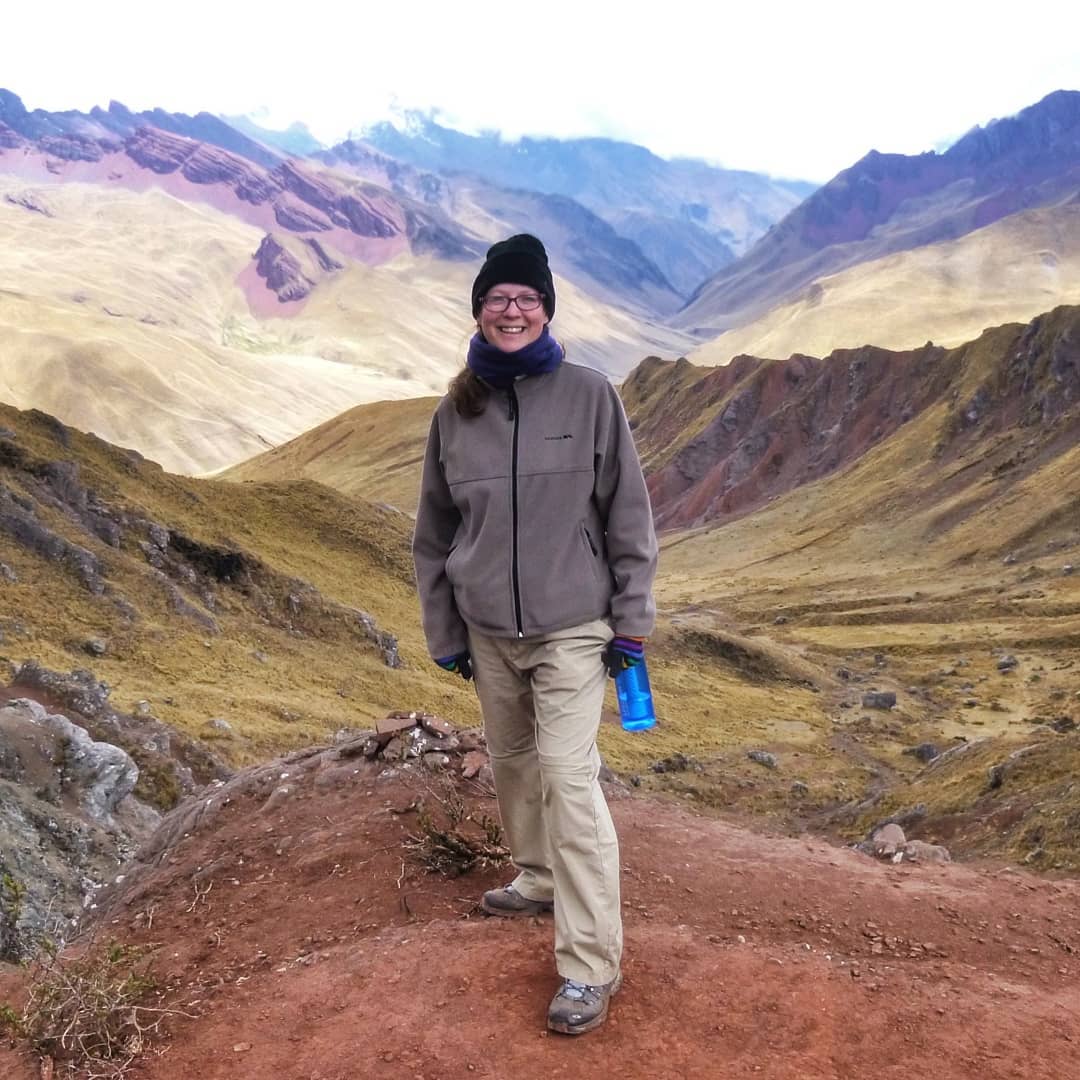
Claire Sturzaker
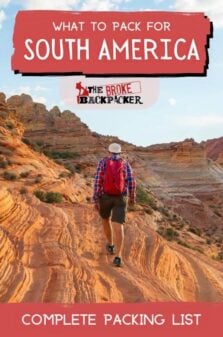
Share or save this post

Hi Ana, I’ve just read your post and found it so really helpful! Just a question: you talked about many terrific destinations, WHY you never mentioned Colombia? I’ll leave for my backpack trip to South America in November, and I will start from Medellin and Cartagena. Thanks again for your super-useful post, v.
Hi Vanessa, You can check out the Colombia backpacking guide here https://www.thebrokebackpacker.com/backpacking-colombia/ Have an awesome trip!
Leave a Reply Cancel reply
Your email address will not be published. Required fields are marked *
Save my name, email, and website in this browser for the next time I comment.
Notify me of followup comments via e-mail.
- Work With Me

- Sierra Leone
- South Africa
- United States
- New Zealand
- Falkland Islands
- Netherlands
- Accommodation
- Electrical Gear
- Essential Gear
- Working Abroad
- Blogging Resources
Latin America , South America , Travel Gear & Packing
Ultimate south america packing list for backpackers.
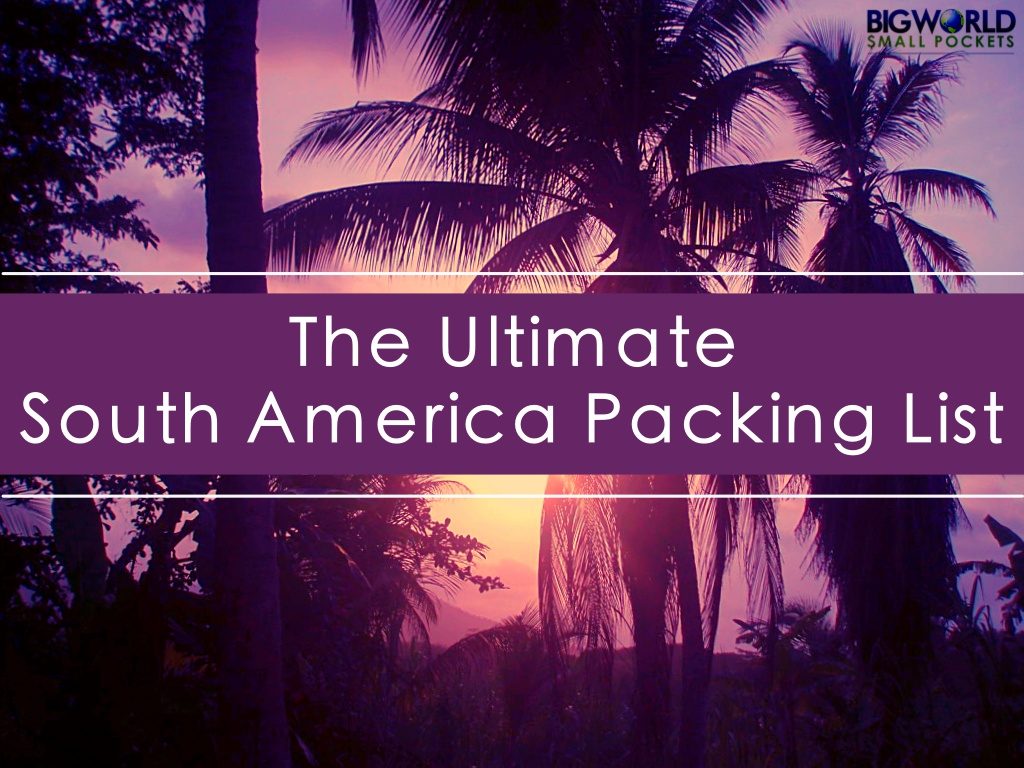
The best thing about travelling in South America is that fact that it’s one heck of a diverse continent.
And one of the worst about travelling in South America is that it’s one heck of a diverse continent.
That’s because packing for such a broad range of climates, altitudes, terrains and activities can be a nightmare, especially if you’re a backpacker.
Yes, good old South America can put even the most hardcore and /or experienced backpacker’s skills to the test when it comes to making sure you’ll have everything you need.
But don’t worry, be it dancing tango in Buenos Aires, hiking in the Andes or sunbaking on the Brazilian beach, I’ve got you covered with this ultimate backpacking South America packing list…
Related Posts
- The Ultimate Peru Itinerary for Backpackers
- The 7 Best Budget-Friendly Things to do in Arequipa, Peru
- 21 Top Things To Do in Cusco, Peru
This page contains affiliate links meaning Big World Small Pockets may receive a small commission on any purchases at no extra cost to you.
1x Waterproof & Windproof Jacket
The Andes can get wet … a lot, especially if you are travelling there between the months of November – February, technically the rain season.
As such, I highly recommend taking a waterproof with you.
I love my Berghaus Stormcloud Jacket and think it would be a great choice.
Otherwise, check out this article for more good ideas.
1x Puffer Jacket
It can also get cold in high up in the Andes at any time of year!
As such I highly recommend a light, puffer jacket that can add some serious insulation, which you’ll likely need when you’re anywhere above 3500m!
This lightweight, packable, hooded down jacket is a superb option for your South America packing list.
2x Hoodies / Fleeces
Essential for evenings and cooler days, something light and quick dry would also be helpful.
This women’s breathable fleece by Columbia would do brilliantly.
2x Thin Long-Sleeved Tops / Base Layers
Good for cooler days or when hiking / travelling and you need layers.
My recommendation is always for a natural fibre like Merino, which will keep you toasty, as well as sweat and smell free!
Check out Meriwool’s great range.
7x Singlets / Vests / T-Shirts
Choose a range of colours that match the trousers / shorts you’ve selected.
Dark, neutral colours are always my go-to.
1x Pair of Long Jeans
Great for going out in the evening or wandering around cities when you don’t feel comfortable with bare legs.
2x Pairs of Hiking / Thin Cargo Pants
Any pair of loose-fitting pants will be ideal for your South America packing list, both for travel days as well as if you plan to undertake any volunteer work.
These Columbia Sportswear Women’s Saturday Trail Pant are great.
When it’s really cold, you can even wear some leggings underneath them.
2x Pairs of Leggings
One of my travel essentials and so helpful for putting under trousers if cold, for hiking or exercising, for being comfortable, for extra nightwear or for under a casual dress.
Take 2 pairs, including one of my new favourite discoveries… bamboo leggings !
2x Pairs of Shorts
You’re going to need something for those beach and warm desert days!
1x Light Dress
Again a good item for beach days or if you want to dress up a bit during the evening.
Easy to pair this over leggings too.
7x Pairs Underwear
Small and compact, 8 pair of undies will get you through a week without having to wash them!
Try to go 1 if you think you can ladies and make extra use of your bikini or sports bra instead!
1x Sports Bra
Small and great for hiking or those bumpy bus journeys!
Just enter your details below and I'll email it you - simple!
Information will be sent to the email provided above
You can’t take enough sarongs travelling in my opinion and, as they are so light, I recommend at least 1 as a minimum!
Perfect for using as a beach towel, a scarf, a beach dress, a sheet, a laundry bag… the list goes on.
Check out my post about the 20 reasons why you should always take a sarong travelling for more ideas!
1x Scarf / Buff
Again a crucial one for the cold, or even at night in the desert where it also gets freezing, taking at least 1 scarf or buff is a must for time in Andes, when hiking and if you’re heading out of an evening.
A must for Andes times!
1x Beanie / Warm Hat
Great for when you’re at altitude, camping or hiking as it will keep you amazingly warm.
Check out this fluff-lined, insulated one to combine style and warmth!
1x Sunhat / Cap
And just to confuse matters, not only does it get cold and wet in the Andes, but also hot and sunny.
And at this altitude, it can be really easy to get sunburnt so taking some protection for your face and head is key for your South America packing list.
1x Bikini / Swimwear
You’ll need something to enjoy the ocean or swimming pool with!
5x Pairs Socks
Make sure you take ones of various lengths / thickness, including ankle socks for city days and thick warm socks, like these , for camping and hiking nights.
You can always double up on your daywear here to save room!
1x Pair Hiking Shoes / Boots
Depending on your plans, either hiking boots, hiking shoes or trail runners.
See my post about how to choose the best hiking footwear for some top tips.
Otherwise, I highly recommend the Keen Targhee II’s .
1x Pair Flip Flops / Sandals
1x pair day shoes.
Either converse , pumps or sneakers for exploring cities and towns on foot are a must on my South America packing list.
1x Thin Toiletries Bag
To hook or not to hook, that is the question!
Either way, just make sure it is light and thin.
1x Shampoo & Conditioner
Small travel bottles are available, or even better, grab a shampoo and conditioner bar for a spill-free delight and to help your eco-credentials.
1x Deodorant
I always prefer a natural crystal deodorant as they last forever!
1x Toothbrush, Toothpaste, Floss
Keep in a ziplock bag!
1x Razor & Spare Blades
1x nail scissors, nail file & tweezers, 1x travel handwash.
Great for doing emergency washing, such as underwear in a sink!
Cotton Buds
Safety pins, glasses / contact lenses if you wear them, 1x diva cup.
Oh yes ladies, you know what I’m talking about.
And if you don’t, check one out here .
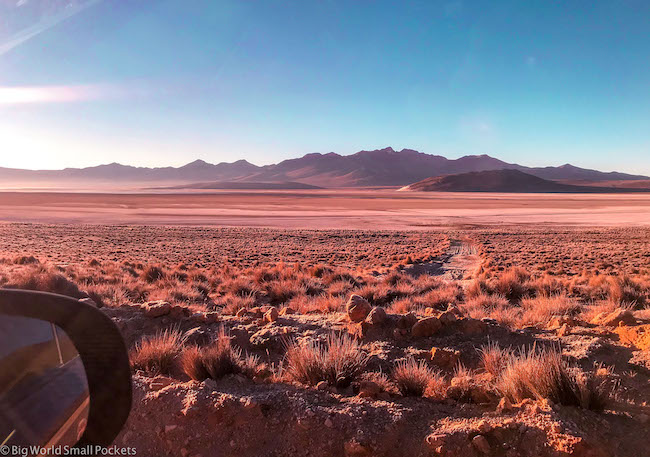
KEEP A SMALL ESSENTIAL TRAVEL KIT WITH YOU
I always travel with a small bag of essentials when I take long distance flights.
Normally this is a small, plastic ziplock bag (so it passes airport security liquid checks) including toothbrush and toothpaste, floss, small facewash, small moisturiser, lip balm, tissues, wet wipes, spare underwear and compression flight socks .
Given the long distance bus rides which are a fundamental part of South America travel, and which often take place at night, I found it very handy to keep this small essential kit packed and ready to go.
Instead of packing it away, as I normally do when I arrive in a destination, keeping this small pack of essentials constantly topped up and included as part of my hand luggage in this continent, was so handy for when I had to catch long distance / night buses.
Knowing I could always brush my teeth, or have toilet paper handy, was a game-changer and I strongly recommend you having a similar, essentials kit with you constantly in South America too!
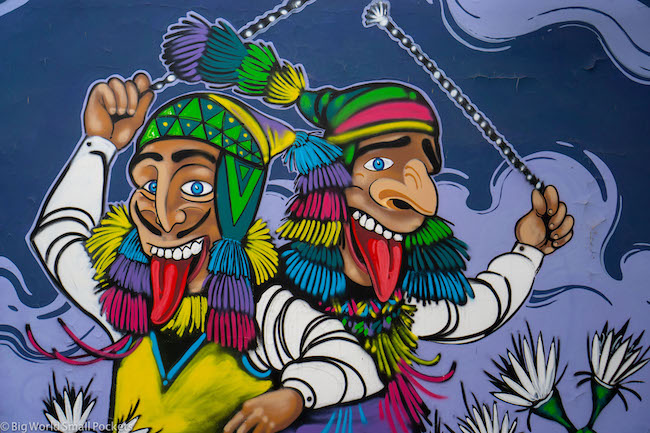
1x Natural Sunscreen
Choose a 30+ SPF or higher.
1x Aloe Vera
1x spf lip salve.
Very important for those high-altitude conditions.
1x Natural Bug Repellent
See my post about how to make your own DEET-Free insect spray or else there are plenty of ready-made products on the market such the excellent one by Burts Bees .
1x Tiger Balm
An ideal remedy for headaches, sore muscles and insect bites.
1x Tea-Tree Essential Oil
A powerful antiseptic, anti-mould, anti-fungal cleaning agent.
Also great to throw in a few drops with your washing and ideal for freshening up smelly bags / dirty laundry etc.
1x Box Paracetamol & Antiseptic Cream
1x box band-aids.
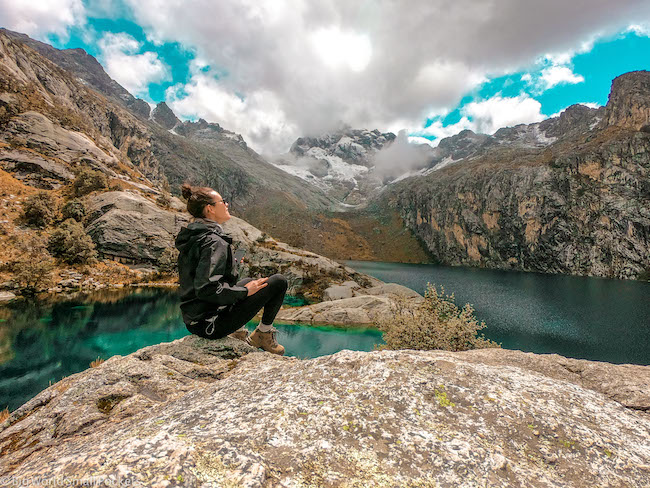
1x Laptop / Tablet
Everywhere in South America has free wifi, so bring your own device to here and enjoy netflix like you’re at home!
1x Smartphone & Headphones
Taking your smartphone to stay in touch with those at home, checking maps and uploading some pics while you’re in South America is a great idea.
Also, download some audiobooks and music onto your phone before you leave home – a great idea for travel days.
I recommend Amazon Audible and Spotify Premium for these purposes and wouldn’t travel without either these days.
Portable Power Pack
Portable power packs are great when travelling without a solidly reliable charging source, like in South America where power cuts can happen!
I recommend the Anker Powercore which is light, compact and charges like a dream – BOOM!
1x Camera, Lens, Spare Battery, Memory Card & Charger
I love my Sony A6000 mirrorless camera , which is robust and small – ideal for travel.
I carry it with a 16-50mm lens and 55-210mm lens.
I also recommend at least 2x 64GB SD Memory Cards and a spare battery too.
Oh, and of course, the charger!
1x Headlamp & Spare Batteries
Never travel without a headlamp and try to choose a product that uses commonly found batteries and has a red light function.
How are you going to charge anything otherwise?!
I love the Skross MUV World Travel Adapter , which even has a USB charger port too.
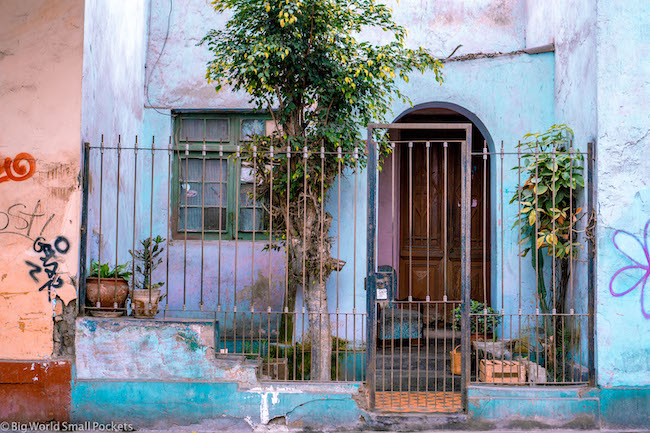
1x Eye Mask & Earplugs
Key for sleeping on long bus journeys and in hostels.
This eye mask from Alaska Bear is super comfy.
1x Travel Towel
It has to be Sea to Summit .
These are the only brand of travel towel I’ve found that don’t get smelly and mouldy.
1x Day Pack
Good for hiking and beach days.
I love my Bobby Anti Theft Backpack , which I would not travel without these day.
Read my full review here .
1x Latin America Phrasebook
Having a little bit of Spanish under your belt will go a long way in South America and you can’t beat the Lonely Planet Phrasebook in my opinion.
1 Notebook & Pen
1x combination padlock.
Very useful for locking up bags while hiking or when staying in hostels.
1x Multi-Tool
Lots of people say you don’t need this, but I find it very helpful.
Choose a light, inexpensive one, like the Gerber Suspension Multi-Plier for example and then it doesn’t matter if you lose it!
1x Travel Cutlery
1x water bottle.
Can’t go wrong with a Kleen Kanteen .
1x Sleeping Bag & 1x Silk Liner
If you’re doing any hiking or going remote, both of these things will come in very handy.
The Snugpak Travelpak is always my choice for backpacker sleeping bags because it condenses down so small.
A silk liner is great for keeping clean and sweat-free. It takes up no room and will make a world of difference.
Passport & Photocopies
Photocopies are always the best backup idea.
Flight Tickets
You may not get far without these and even if you have an email copy, I suggest a paper duplicate somewhere too.
Visa Documentation
Research any visa requirements well in advance and have the necessary paperwork on you.
Vaccine / Immunisation Documentation
Great idea to carry with you, especially in the case of Yellow Fever certificate or rabies information.
Travel Insurance Policy
If you’re backpacking in South America for a long time, then definitely check out my advice for long term travel insurance, otherwise World Nomads are my top pick for South America travel insurance.
Credit Card & Debit Card
A great idea to have at least 2 cards with you when travelling, preferably stored in different locations on your person!
Cash in Small Thin Purse
Don’t worry about a money belt, just make sure your purse is discreet, thin and unassuming!
It’s a great idea to arrive in South America with a little bit of currency you can use to buy small things immediately such as food or buses fares.
And believe it or not, I fitted all of this into a Berghaus Freeflow 40l backpack – my number one choice when it comes to the best backpack for travel!
PIN IT TO PINTEREST!
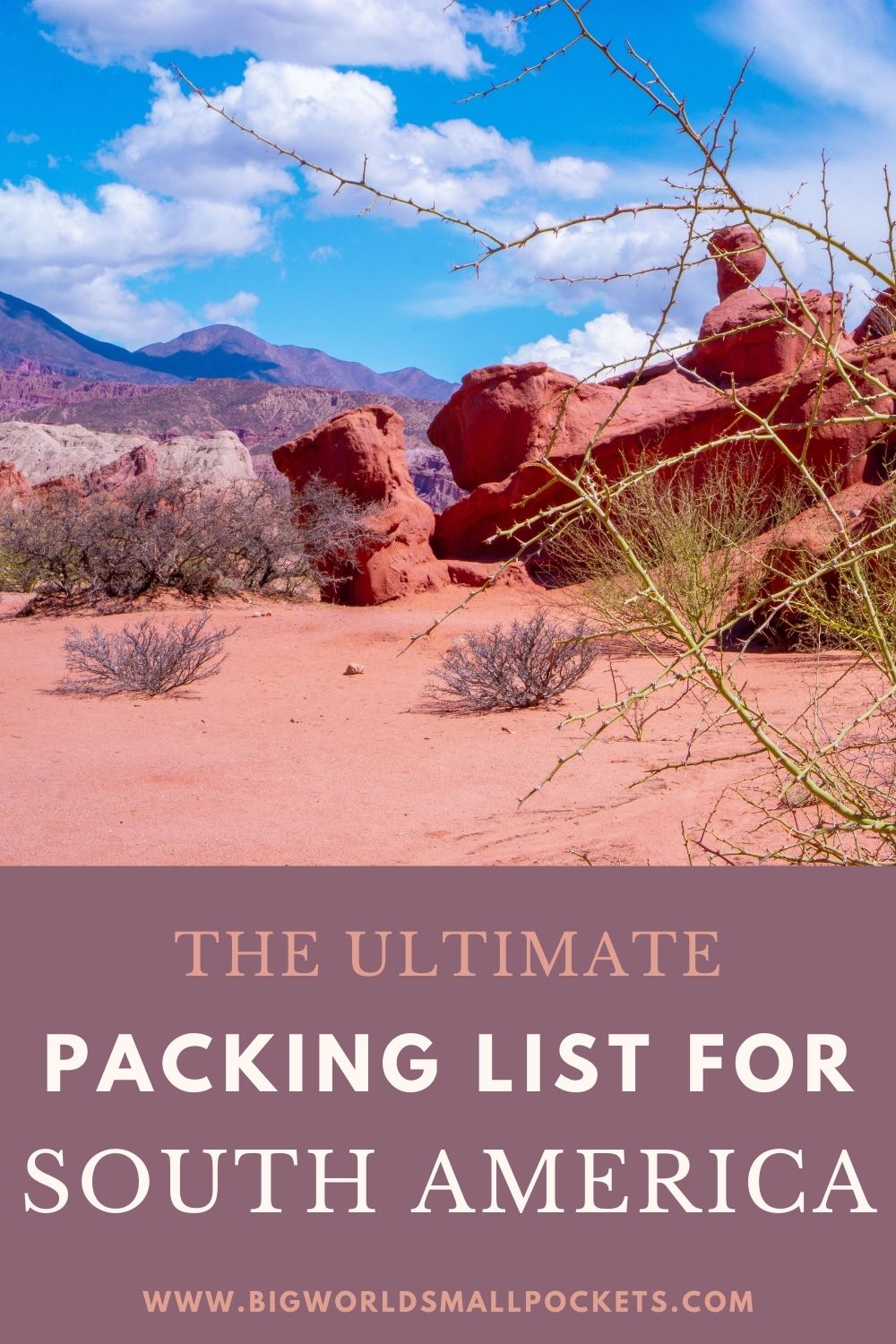
So there you have it, the ultimate backpacking South America packing list.
Have you been to this incredible part of the world?
What did your packing list look like?
And what may I have missed?
Creator of Big World Small Pockets, Stephanie Parker is a travel addict! Originally from Jersey in the Channel Islands, Stephanie adventures the world collecting tips, advice and stories, to share with a smile
4 thoughts on “ Ultimate South America Packing List for Backpackers ”
Wow that’s a great list worth retweeting!
Thanks Mark – that would be great 🙂
Terrific packing tips and advice here! Definitely can’t wait to travel again and South America certainly has some awesome destinations. Thanks for sharing.
Thanks Fred! Here’s to us all packing and heading off to South America again when the world opens us! Steph 🙂
Leave a Reply Cancel reply
Your email address will not be published. Required fields are marked *
This site uses Akismet to reduce spam. Learn how your comment data is processed .

Ultimate SOUTH AMERICA Travel Guide
South America is one of the most diverse places on the planet when it comes to landscapes and cultures. You can find ancient ruins, rich history, the largest rainforest on the planet and even glaciers. This South America guide is here to share our tips and advice for traveling across this continent.
Located south of North America and Central America , South America stretches from the Caribbean , across the equator and all the way south to the waters off Antarctica . It is comprised of 12 countries and quite frankly, is massive.
These countries include Argentina, Bolivia, Brazil, Chile, Colombia, Ecuador, Guyana, Paraguay, Peru, Suriname, Uraguay and Venezuela. Also included are the two dependent territories of the Falkland Islands, along with South Georgia and the South Sandwich Islands. French Guiana, while located physically in South America, is a territory of the French central state.
We’ve spent just over 2 months traveling to various countries and regions across South America in our travels. We haven’t been to every country, yet, but we will continue to update this guide as explore more of this fascinating continent.
Destinations
South america travel: quick tips, don’t visit south america without:.
UNIVERSAL TRAVEL ADAPTER

GET A GUIDEBOOK

REUSABLE WATER BOTTLE

SOUTH AMERICA BUCKET LIST
Visit the amazon rainforest.
Few things in life will be as stimulating as immersing yourself in the Amazon Rainforest. The Peruvian Amazon and Ecuadorian Amazon are easily accessible to most travelers. We’re enamored by it and have been five times!
EXPLORE PATAGONIA
Whether you find yourself in Torres del Paine or Los Glaciares National Park, Patagonia offers some incredible scenery and adventure opportunities. World-famous for hiking, you’ll want to consider the Basecamps Trek in Argentina or the W Trek in Chile.
SAIL THE GALAPAGOS ISLANDS
Cruising the Galapagos Islands is at the top of many people’s bucket lists and for good reason! Not only can you spend your days observing unique Galapagos animals but you can also enjoy the stunning natural scenery and white sand beaches.
MORE THINGS TO TRY IN SOUTH AMERICA
There is no shortage of amazing things to do in South America during your visit and the biggest problem you’ll face is fitting them all into your itinerary. Trust us, we’ve been there!
Each country has its own offering and unique things to check out during a visit, so be sure to look at our country guides once you decide where you’re itinerary will take you.
FLY TO EASTER ISLAND: While it’s not widely known, Easter Island is actually part of Chile. At least politically anyways. This means that the remote island is accessible from Santiago by air. Once you arrive, you’ll spend your days in the Rapa Nui National Park learning about the famous Moai statues and Rapa Nui culture of the island. It’s well worth the time and expense to add this to your South America travel itinerary. Hot tip, plan at least a week (we stayed for 9 days!) as the weather can be unpredictable.
EXPLORE THE ATACAMA DESERT: One of the most famous places to visit in Chile is the Atacama Desert. Here you can discover towering volcanoes, desolate salt pans, active geysers, vast cactus fields, massive flocks of pink flamingos, to name a few. Not to mention that it’s one of the best places in the world to view the sky. You’ll want to base yourself in San Pedro de Atacama , a cute tourist town that gives you comfortable access to the entire area.
VISIT THE END OF THE EARTH IN USHUAIA: The official jumping-off point for trips to Antarctica , Ushuaia is literally at the end of the world. The town technically sits in a part of Patagonia, but you have to travel north before you get into the mountains. The town is rich in explorer history and you also have direct access to the Tierra del Fuego National Park too.
SEE MACHU PICCHU: Visiting Machu Picchu is easily the most visited site in South America and with good reason. It’s not only set in a stunning natural setting but offers you an intimate look into the Inca life and architecture. As a bonus, Cusco offers plenty of things to do including the Sacred Valley. This site alone makes Peru one of the top destinations to visit on the continent.
DISCOVER BOGOTA: Despite the bad rap that Colombia often gets in the media, it has some intriguing destinations to discover within its borders including the capital city of Bogota . The first trip I ever took to South America was to Bogota (I know, that’s weird and unconventional) and I’ll admit I was shocked by the rich culture and beauty of the city and surrounding area.
UNVEIL THE WONDERS OF RIO DE JANEIRO: The first day we spent in Rio de Janeiro solidified the city on our list of favorite places in the world. Rio is diverse, cultural, historical and naturally stunning. No other city combines these elements in perfect harmony like this one and there are loads of things to do in Rio de Janeiro to boot.
SEE IGUAZU FALLS: The largest waterfall in the world, Iguazu Falls , can be accessed from both Brazil and Argentina. Set within a lush rainforest setting, these falls are stunning to visit. Both sides offer infrastructure to explore and view the falls safely. You’ll need at least 2 days, one for each side, but could easily spend 3 if you wanted to do everything available in the area.
VISIT THE WORLDS LARGEST WETLANDS: Boasting a land area the size of France, the Pantanal in Brazil is a sight to behold. It’s also the best place in the world to view jaguars and with it a whole host of tropical birds. This area is remote and it is best visited by booking an all-inclusive safari package with a lodge that will include all your meals, lodging and wildlife viewing.
STAND IN AWE AT THE PERITO MORENO GLACIER: The Perito Moreno Glacier , situated within the Los Glaciares National Park, is Patagonia’s most famous glacier and is regarded as one of the top tourist attractions in Argentina. You can base yourself in El Calafate and then take the bus to explore this massive natural wonder. Be sure to go early and stay all day. There are miles of hiking trails that give you varying vantage points of the glacier, as well as boat tours to get close too.
OVERLAND THE HIGH CHILEAN ALTIPLANO: If you seek an off-the-beaten path adventure, then overlanding from Salta to the Atacama Desert will give you just that. Starting in Salta, Argentina, you’ll make your way west, spending hours each day hiking in the desert and uncovering the history of the area before making your way to luxury infused base camps. You’ll cross over the Andes Mountains, experiencing altitude that will shock you, before descending to San Pedro de Atacama for a luxurious stay at the Explora Atacama property.
FOODIE BUCKET LIST
Each country has its own unique culinary scene, which is one of the reasons that travel to South America is so exciting for foodies.
In Peru, you have to try Ceviche , a raw seafood salad. In Argentina, it’s all about the enormous cuts of steak , the red wine , and the massive meat barbecues. Feijoada , a hearty black bean stew, is a Brazilian favorite, while in Colombia, you can chow down on Arepa , a sort of stuffed maize bread.
One staple you will find across the continent is rice and beans , which makes an appearance in some form in every country in the region. If you’re ever in doubt, just order up a plate of rice and beans!
SOUTH AMERICA FESTIVALS
South America is a fantastic place to visit if you’re looking to enjoy local cultural events and plenty of lively carnivals. Every town and city has a carnival, but Rio’s carnival is the most famous in the world, attracting millions of visitors each year.
Semana Santa – or Holy Week – is one of the most important cultural weeks of the year in South America. This takes place during the last week before Easter.
Countries will celebrate their independence days ; cities will host food festivals, drink festivals, and many more cultural events throughout the year, making South America an exciting prospect whenever you arrive on the continent!
PLAN AN EPIC SOUTH AMERICA ITINERARY!
Popular regions in south america.
The West Coast – or Pacific Coast – of South America, includes Colombia in the north, Ecuador, Peru , Chile, and, if you head inland, Bolivia. It is off of this coastline that you can also find the Galapagos Islands , a place of incredible diversity and wildlife. Inland, you can climb high into the Andes Mountains to discover Incan history (this is where you’ll find Machu Picchu ) and beautiful scenery before dropping into the Amazon’s dense forests.
The Amazon Rainforest is one of the world’s greatest natural wonders and is the world’s largest rainforest. It blankets around 40 percent of the landmass of the South American continent. It stretches into Brazil, Ecuador , Peru, Colombia, Bolivia, Venezuela, Suriname, Guyana and can be explored from a number of locations. Multi-day expeditions that take you deep into the rainforest are among the best reasons to visit South America. Manaus in Brazil is the classic Amazon destination, a remote city from where you can venture deep into Amazonas. In Peru , you can visit Iquitos or Puerto Maldanado. In Ecuador, pay a visit to the stunning Yasuni National Park .
The eastern coastline of South America is long and incredibly diverse, covering Brazil , Uruguay, and Argentina. You’ll also find hundreds of islands associated with these countries and at the very south of the continent, the Falkland Islands. The tropical rainforest turns into more temperate climes as you travel south. Explore Brazil’s famous coastal cities, Rio de Janeiro and São Paulo, and relax on Ilha Grande. Travel to Montevideo, the understated Uruguayan capital, before heading over to visit Buenos Aires, the Argentine capital.

NORTHEAST/CARIBBEAN
The Caribbean touching northeast is one of the most exciting places to visit when you travel to South America. Island hop through Colombia’s happening islands, where you’ll find snorkeling, parties, and laid-back beach vibes. Then head inland to explore Bogota . Off the coast, you could explore the Caribbean islands of Aruba, Curacao, or Trinidad and Tobago. Tucking back inland, you can get way off the beaten path in exploring Guyana, Suriname, or French Guiana. The truly adventurous could even venture to Venezuela. You’ll find lush rainforest, towering waterfalls, and intriguing cultures throughout these countries.
Remote Patagonia is one of the most isolated yet spectacular places you can explore in South America. Located at the southern tip of the continent, Patagonia spans the Pacific and Atlantic oceans and is divided between Chile and Argentina. El Calafate and El Chalten in Argentina and Torres del Paine in Chile are amazing hubs for hiking in Patagonia. You’ll find endless trails, high mountain peaks, spectacular glaciers, and a landscape and climate more suited to Greenland or Scandinavia than anything you might be expecting of South America.
SOUTH AMERICA TRAVEL BUDGET
Setting a budget for travel to South America is highly dependent on your travel style. It is possible to visit just about anywhere on any budget and still have a great trip. That said, you can make your trip as basic or as luxurious as you desire.
To help you set your budget, we’ve included some base range price estimations for travel within South America. Of course, keep in mind that prices can fluctuate based on seasons, availability and festivals.
ACCOMMODATION: On the lower end of the spectrum, you can travel to South America and spend just USD 10 per day on hostel accommodation. You can raise this to between USD 30 and USD 50 if you are looking for private rooms . Upwards of USD 100 per night will give you a nice luxury hotel .
FOOD: Food is very inexpensive. To keep costs low during your South America travel trip, you can eat locally – brush up on your Spanish or Portuguese so you can order! You can eat out in most countries for no more than USD 5, but expect basic set meals. For between USD 10 and USD 20, you can enjoy finer dining experiences.
TRANSPORT: Long-distance buses are the cheapest way to get around when you travel to South America. Overnight buses will cost around USD 50 per person, while local buses and transport are much cheaper for shorter journeys. Flight costs vary, but flying internationally can be expensive. A two-hour flight could easily cost hundreds of dollars (as opposed to Europe, where a two-hour flight could cost just USD 20 if booked in advance!).
ACTIVITIES: There’s so much to plan with your South America travel itinerary, but it’s good to know that activities are very cost-effective. A multi-day trek to Machu Picchu will cost around USD 500, and this is the higher-end version. Day tours are around USD 30 per person, while a multi-day Amazon expedition will be around USD 100 per day.
30-50 USD PER DAY
Will include dorm beds, as well as street food, grocery shopping, overnight buses & plenty of budget day tours. Bring more cash if you want to join multi-day trips, such as Machu Picchu treks.
50-100 USD PER DAY
You will stay in private rooms and guesthouses and enjoy plenty of meals out. You’ll have lots of leftover cash for day trips, expeditions, and tourist buses between cities.
200 USD + PER DAY
Luxury travelers spending more than USD 200 per day will be able to employ private drivers, fly from one city to the next & book fancy hotels in stunning locations.
WHERE TO STAY IN SOUTH AMERICA
Below you will find some of the places we have stayed during our travels in South America. These are individual properties that we enjoyed and would recommend to other travelers.
HOW TO GET AROUND IN SOUTH AMERICA
When you travel to South America, don’t underestimate how far apart destinations, cities, and countries are. This is a vast continent; it would take weeks to travel overland from Colombia all the way south to Argentina.
There are a few ways to get around South America during a visit, including cruises, ferries and flights. Plan ahead and be flexible to avoid frustration.
CRUISES: All manner of cruises ply the waters off both coasts of South America and run the length of the continent. This also means you can find a wide range of time lengths and ship sizes. It is also possible to depart on small-ship expeditions to Antarctica from Ushuaia, Argentina.
BUS: Long-distance buses are comfortable and safe, but they take a long time to get from one place to the next. South America has an extensive bus network that connects most of the countries, so bus travel can be a good way to go if you have time and a limited budget or perhaps just want a grand adventure.
FLIGHTS: Flights are the quickest way to get around; however, international routes and airlines aren’t cost-effective, and they certainly aren’t good value.
FERRIES: Boat trips in some locations are a slow but scenic option (especially in the Amazon, where they are the only option).
CAR RENTAL: It is possible to rent a car in plenty of cities around South America but is most popular in Argentina and Chile. Check out Discover Rental Cars for great deals.
TOP SOUTH AMERICA TOURS
End of the earth.
14 Days from Buenos Aires Visits: Patagonia, El Chalten, El Calafate, Torres del Paine, Puerto Natales & Ushuaia
ECUADOR MAINLAND & GALAPAGOS
14 Days from Quito, Ecuador Visits: Quito, Banos, Amazon Rainforest, Papallacta & the central Galapagos Islands
PERU & BOLIVIA – NAT GEO
16 Days Lima to La Paz Visits: Machu Picchu, Sacred Valley, Cusco, Amazon Rainforest, Uyuni, Potosi & Sucre
WHEN TO VISIT SOUTH AMERICA
When you’re planning your South America travel itinerary, don’t forget how vast this continent is. Each region has its own climate; when it’s cold in southern Argentina, it’s going to be hot and humid in Colombia!
The further north you travel , the more tropical the climate is. Colombia, Ecuador, Peru, Bolivia, and Brazil all have wet and dry seasons . The best time to plan your South America travel itinerary in the north is during the dry season, which runs from May to October.
This is the best time for hiking to Machu Picchu or experiencing the salt flats of Bolivia. It’s not too hot, and there’s almost no rain.
In the south , things are a lot more temperate . If you’re looking to travel to South America to explore Uruguay, Chile, or Argentina, you’ll want to head here outside of winter.
Summer is hot and busy (between November and February), while spring and fall can be more pleasant and less crowded. If you’re heading far south to Patagonia, you’ll want to visit in summer when all the hiking trails are definitely going to be open.
HIKE YOUR WAY AROUND SOUTH AMERICA LIKE A PRO!
Safety in south america.
If you’re planning to travel to South America, you’re probably already aware that the continent doesn’t have the best reputation when it comes to crime. Most travelers will have a trouble-free trip, but you do need to be aware of a few things.
Petty theft, muggings, and even express kidnappings can be a problem for tourists. If you’re caught up in something like this, don’t put up a fight. Try not to flaunt cash or valuables when in public, to avoid attention.
When traveling by bus, book tickets on reputable, first-class buses that don’t stop outside designated bus stations. They are safer and much less likely to be held up.
Certain countries do have no-go zones for tourists – parts of Colombia and some areas of Brazilian cities, for instance. Try to keep abreast of political events while you’re in a country, as things can deteriorate without much warning, and governments often crack down hard on protestors.
If you know Spanish, or can learn the basics, you’ll have a much safer and easier time when you travel to South America (in Brazil, the same goes for learning Portuguese).
As with any destination, we recommend learning and adhering to certain safety practices when you travel. Be sure to read our personal travel safety tips , compiled from our travels across 7 continents.
SOUTH AMERICA TRAVEL: BOOKING RESOURCES
South america travel guide: related articles.
Looking for more info? Check out all the articles we’ve written on travel to South America and start planning your dream trip.
Is Delfin the Best Luxury Amazon River Cruise in Peru?
The best way to visit iguazu falls: argentina or brazil, pantanal in brazil: ultimate guide to the world’s largest wetlands, bonito, brazil: ultimate planning guide + why you should go, how to plan a galapagos cruise like a pro, paraty, brazil: ultimate planning guide, 10 essential things to do in lima, peru, 11 awesome things to do in cusco, peru (besides the inca trail), best time to visit peru: a month by month breakdown, from cusco to machu picchu: everything you need to know, 8 cool things to do in peru + planning tips, the best favela tour in rio: defeating the stigma, 40 bucketlist things to do in rio de janeiro, two week trip to brazil itinerary for any traveler, ilha grande, brazil: ultimate planning guide to a paradise found, how to visit the amazon in ecuador, how to visit the amazon in peru, 16 epic things to do in bogota, 9 things to do & places to visit in san pedro de atacama, culture meets the rainforest at the posada amazonas lodge in the peruvian amazon (complete review), an unforgettable amazon adventure at the tambopata research center in peru (our exclusive review).

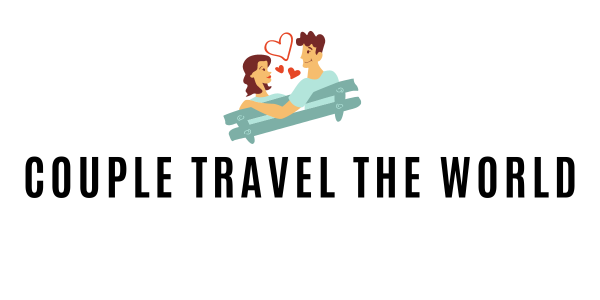
Essential South America Packing List (Things you can’t miss!)
By: Author MC Miller
Posted on Last updated: July 25, 2023
Categories Argentina , Bolivia , Brazil , Chile , Colombia , Ecuador , Packing Lists , Paraguay , Peru , South America , Travel Blog Post , Uruguay
Looking for the essential South America packing list including things you can’t miss? You have come to the right place!
We spent a few months in South America. There are some things we packed correctly but there are many things that we WISHED we packed in hindsight.
So with no further adieu, we present to you the Ultimate South America Packing List. Carefully review this list and make sure you haven’t forgotten anything!
The Essential Packing List for South America
On our trip to South America we traveled to Colombia , Ecuador , Peru , Argentina , Brazil and Chile .
This packing list is relevant to all the aforementioned countries in South America.
What bag to bring to South America?
First things first – what bag should you bring to South America?
To save money on flights to South America , it is highly advisable to bring only carry on luggage . If you are savvy, you can probably last up to a month with only carry on luggage. However, you have to pack smart.
We are suitcase lovers through and through but suitcases can be difficult in South America if you are traveling overland by bus.
There is limited cheap flights between countries in South America so your mode of transportation will most likely be by bus.
The Hynes 40L Carry on Backpack is ideal for South America as it has a lot of space. It is also durable and made of high quality materials to resist bus travel.
If you want something a little bigger we would suggest this backpack .
If you are a loyal suitcase lover, we would suggest this suitcase .
What clothing to add to your packing list for South America?
We are known for being serial over packers!
We would highly recommend not overpacking in South America if you are planning a large overland trip as it can involve long periods of time carting around your belongings.
Unless you plan an apartment, washing facilities can be few and far between in South America.
If we are packing light we bring special washing soap so we are able to do hand washes in the sink if necessary.
This is the clothing we would suggest bringing for a 4 week trip to South America. We have made this list based on items we have or the next closest alternative we can find online:
HER ESSENTIAL SOUTH AMERICA CLOTHING PACKING LIST:
Here are the essential, must have clothing pieces to bring to South America for the ladies!
4 x Short Sleeve Shirts
If you are packing light, you definitely need to bring some fast drying t-shirts that dry super quick after washing.
There are lots of hiking opportunities in South America like Machu Picchu .
Therefore, something that won’t stick to your body and will dry super fast after a hike is the best way to go.
We love the traveler favourite, Icebreaker Merino Women’s T-shirts due to its super quick drying ability and lightweight fabric.

2 x Lightweight long sleeve shirt
As we mentioned above, hiking is in abundance in South America!
Even if you are a bit older or not in good physical condition, you will be able to complete short hikes.
Over our years traveling, we have some across tourists crying in pain due to the the sunburn they received.
If you are going for a long hike in the middle of the day, please please wear a long sleeve shirt – believe me your skin will thank you later!
It can be something as simple & affordable as Matymats Women’s Workout Tee Tops Long Sleeve
You do want to select something that breaths as there is nothing worse than a long sleeve shirt that is hot and sticky on a hike!

1 – 2 x Lightweight Walking Pants
One to two pairs of lightweight walking pants are essential for the hot South American weather.
South Americans don’t usually wear shorts – they are a “gringo” thing.
Long pants can therefore stop you being targeted as an obvious tourist and are also essential for hiking and day to day activities.
Something as simple as these Women’s Leggings are perfect for a breathable & affordable pair of long pants.
1 x Waterproof Jacket
I pray it won’t rain on your vacation. But, sadly it will at one point or another.
A waterproof jacket is absolutely essential for South American travel and can also be doubled for warmth.
I own a jacket very similar to this Columbia Women’s Switchback II Jacket. It proved highly useful during my time in South America.

1 x Shorts or Skirt
I opted for long pants in South America.
I know the Zika Virus is allegedly a myth but better be safe than sorry right?
Saying this, I would suggest 1 pair of shorts only. These super cute lightweight travel shorts that would work well for South America.
1 x Flip Flops
Definitely don’t forget your flip flops! You need 1 paid of flip flops to wear in the showers and to the beach in South America.
You cant go past Havaianas Flip Flops
We won’t buy anything else due to their comfort and durability.

1 x Runners
Runners will be your go to shoe for South America.
South America is mostly a casual holiday and you will certainly do a lot of walking so bring a comfortable pair!
We both own Nike Free Runners and absolutely love them! We actually have bought the same pair twice over!
4 x Underwear
4 pairs for a whole trip!? Yes, we are trying to pack light here!
We would recommend the Icebreaker women’s underwear.
They are a special pair of quick drying underwear. A great option for minimal packing.

2 x Bras
I’m sure you have your regular bras sorted but don’t forget a sports bra for hikes in South America America.
It is best to select one that is lightweight and fast drying. This Icebreaker Women’s bra fits that criteria.

4 x Socks
1 x swimmers & 1 x rash shirt.
Importantly here is the mention of the Rash Shirt.
You need a Rash Shirt because of the very hot climate but also as a protection from sea lice & jellyfish in the water.
I have two that I will show you.
I have this Rash shirt by Roxy and I love it. It is cheap & lightweight.
For a little more protection, I would suggest this billabong wetsuit rash shirt.
It is a lot thicker and provides even more protection from jellyfish. In Puerto Vallarta I got stung by a jellyfish wearing just a bikini and let’s just say it hurt A LOT!!
1 x Sunglasses
1 x hat.
A pat is also a must pack as South American destinations are hot year round.
A big hat is not only trendy but you can also fold it up into your bag!
We would recommend a basic cheap hat. Like Central America (for some reason) hats are also a lot commodity in South America and they often get stolen.
You can have your nice hat stolen off their head as a motorbike drives by. For this reason, I would suggest this affordable $14 packable black hat
HIS SOUTH AMERICA PACKING LIST:
Here’s what to add to his essential packing list for South America:
4 x Short Sleeve Shirt
Like with the ladies, he needs a shirt that will dry super fast and is lightweight for comfort in hot weather.
With this in mind, we would recommend Woolly Men’s Merino Wool Short Sleeve as the perfect t-shirt for South America.

2 x Lightweight Long Sleeve Shirt
Like with the ladies, he needs two lightweight long sleeves.
There are lots of great hiking opportunities in South America.
I would recommend an affordable, lightweight & fast drying such as Icebreaker’s Long Sleeve

1 – 2 x Lightweight Walking Pants
Mike loves Chinos. He even hikes in them.
A pair of cheap, lightweight chinos are great option for men as they are trendy and quite comfortable.
1 x Waterproof Jacket
Rain is inevitable in South America. Therefore, a waterproof jacket is essential for both rain and warmth.
Mike has one one very similar to this Columbia Men’s Watertight Jacket which he used a lot in South America.

1 x Shorts
Shorts are a gringo thing, its true, and you will be more noticed wearing them. But its nice to have shorts in hot weather.
Therefore, bring 1 paid of comfortable pair of walking shorts for South America .

1 x Flip Flops
It is absolutely necessary to not forget a pair of flip flops for South America to wear in the showers and to the beach.
We are huge fans of Havaianas Flip Flops and wont buy anything else due to their comfort and durability.

Runners are also an essential must pack! South America is a very causal holiday and you will do a lot of walking so bring a comfortable pair!
We we both have Nike Free Runners and absolutely love them, they are so comfortable!
Four pairs of quick drying underwear is all you need.
The Icebreaker men’s underwear are a great option for a quick drying pair of men’s underwear.

4 x Socks
1 x swimmers & 1 x rash shirt.
We are huge advocates of the necessity of a rash shirt.
Mosquito Related Items for your South America Packing List
Whether you believe the Zika virus is real or not – you are always better safe than sorry.
They are also incredibly annoying. Believe me, you want to avoid these suckers at all costs!
The essential mosquito related items that you will need to add to your South American packing list include:
A mosquito net for your bed
It is very hard to know if your hotel will have adequate screening. We found comfortable hotels often didn’t even have it!
There is absolutely nothing worse than being bitten in your sleep!
Therefore, a lightweight traveller’s mosquito net is definitely the way to go to protect yourself completely as you sleep in South America.
Mosquito coils
Mosquito coils were essential to us. We were able to sit outdoors in South America without fear of getting bitten.
We even used it in our room for extra protection if mosquito nets weren’t installed on the windows.
Mosquito bracelets
We met a Belgian couple on the road that swore by mosquito bracelets.
We enviously admired their bracelets and asked where you get such a product. They told us ‘Belgium’ – we felt very disappointed as to not be able to get one.
Well, turns out you can buy mosquito bracelets online too!! Click here to get your mosquito bracelet to protect against mosquitos in South America .
Mosquito spray
If nothing else, mosquito spray is an absolute very essential!
It is more expensive to buy it in South America so if you are bringing checked in luggage buy it before you go.
Add a silk sleeping bag to your South America Packing List
If you are planning to stay anywhere cheap or in hostels in South America, sometimes levels of sanitary can be a little lower than the western world.
Bringing along a silk sleeping bag ensures that you feel comfortable sleeping at all times. They are also great to use on overnight buses.

Toiletries for your South America Packing List
You can purchase affordable toiletries upon landing but is advisable to have a small amount of toiletries with you.
We would advise purchasing a travel toiletry kit for South America to ensure you have a small amount of the necessities when you arrive.

Sunscreen is liquid gold in South America. You wont find a cheap bottle.Therefore, I would highly recommend bringing a bottle of sunscreen with you.
Add Binoculars if you are headed to an area with wildlife
If you are traveling to the Fjords of Chile or the Amazon Jungle , bring a pair of basic binoculars to view animals and glaciers up close and personal.
Good binoculars were essential to getting a clear view of the wildlife!
Add a High Powered Night Torch if you are headed to a remote area
If you are going to visit the Uyuni Salt Flats , a high powered high torch will certainly come in handy.
An area like the Uyuni Salt Flats has limited power so a high powered night torch is very handy.
If you have the room, it might be useful even if you are not traveling there as power outages are quite common in South America.
Add a snorkel set to your South America Packing List
Other items to bring to south america.
- Camera – we have a Nikon D750 . We love it.
- Laptop – For the digital nomads out there! We think a Macbook Pro is the best laptop currently on the market!
- Passports (and one of these cute passport holders )
- Travel Adapter
- Drone – Drone shots are awesome in South America. We have the Mavic Pro 2.
So that is a wrap on the South America packing guide! Check and check twice and you are all set for an amazing South American adventure!
Save this South America Packing Guide to Pinterest
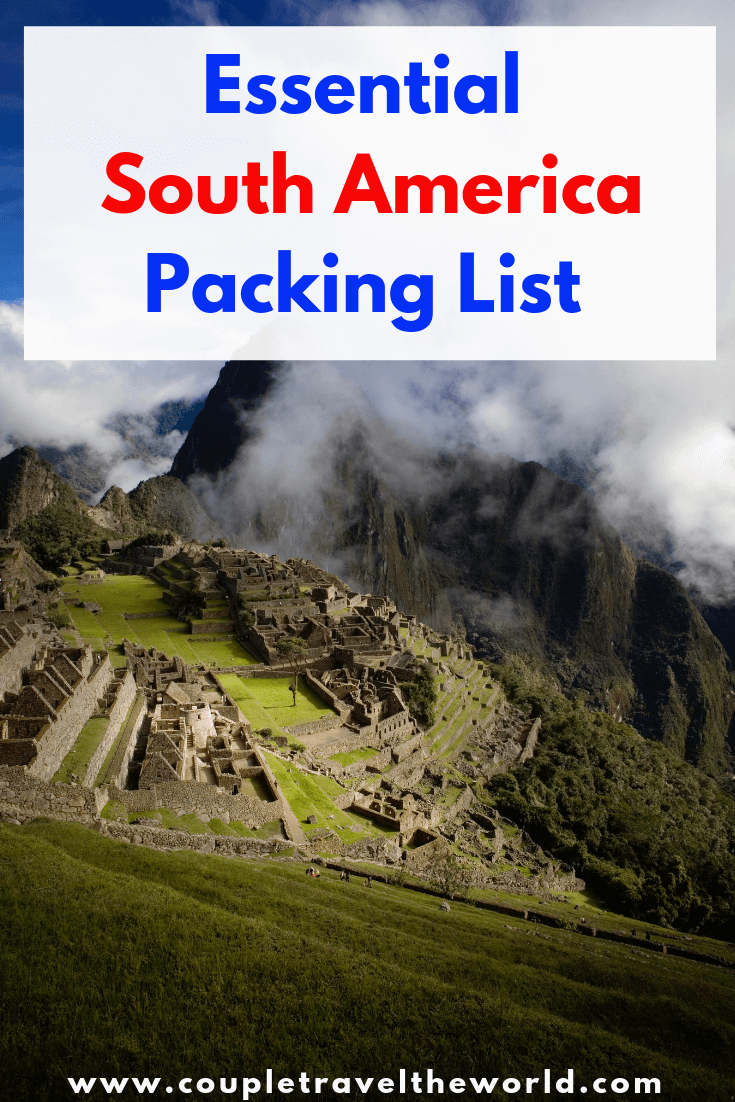
MC Miller is a travel blogger and writer who has travelled America extensively and abroad to over 80 countries. He founded Couple Travel The World in 2017. Since then, he has spent over 6 years on the road as a full time travel couple. When he not traveling he likes to spend quality time with his partner Bett, planning our their next date or romantic getaway!
View all posts
Destinations
South america travel itinerary: a comprehensive guide for 1-3 months.
This post may contain affiliate links. We receive a commission on purchases made through links on this page. This is at no additional cost to you & helps support our travels. Read more in our Disclaimer . Thank you!
South America has so much to offer, and even with this South America travel itinerary covering one to three months, you will still only be scratching the surface.
South America is a captivating continent with diverse landscapes, vibrant cultures, and breathtaking natural wonders. From the majestic Andes Mountains to the lush Amazon rainforest, there is no shortage of awe-inspiring destinations to explore. In this travel itinerary, we will guide you through the best places to visit during your one to three-month journey.
We spent nearly six months exploring South America and found more than one new favorite place. We are already planning a trip back to this incredible continent and hope these itineraries will help you plan your next trip, too!
We’ll cover the best South America travel itinerary for one to three months, tips for traveling South America as a couple, transportation in South America, cost of travel in South America, and more!
This post is all about the ideal South America travel itinerary for one, two, or three months of travel.
Planning Your Trip
Before embarking on your South American adventure, it’s essential to do some research and plan accordingly. Consider the best time to visit each country, as weather conditions can vary significantly across the continent. Remember, South America is in the southern hemisphere which means winter falls from June – September, and summer is from December – March, the opposite of the northern hemisphere. We would recommend the spring or fall seasons to avoid crowds and have the best opportunity for mild weather.
Don’t forget to check major holidays that may impact your travel. The majority of South America is Catholic, so the largest celebrations of the year revolve around Carnival and Easter. Travel is often more expensive during these holidays and sells out far in advance.
- Learn more about planning the perfect itinerary for any destination!
Better safe than sorry...
Are you covered for your next trip? Whether you’re planning a quick weekend getaway or a long-term adventure, SafetyWing has you covered. From medical emergencies to lost luggage, they’ll take care of it all. Plus, they even offer emergency response and natural disaster coverage – pretty cool, huh?
South America Packing List
With an itinerary of one to three months, you’ll need to plan for various weather throughout your trip. You never know when a cold front or a massive rainstorm is going to blow through. Be sure to prepare the appropriate attire for each destination, from cities to deserts to beach towns and the jungle.
If you are planning on spending one to three months in South America, check out our complete South America packing list to ensure you don’t forget a thing!
- Shop our full South America Packing List!
South america transportation
When planning a one to three-month trip to South America, you’ll likely be traveling to more than just one destination.
Flights are a convenient way to cover long distances between countries or major cities, allowing you to save time and reach your destinations quickly. Domestic flights within South American countries are often affordable, helping you hop between different regions efficiently.
Although not as extensive as in other continents, trains can offer scenic journeys in certain countries like Peru and Ecuador. Buses are a popular choice for budget travelers (especially in Ecuador and Peru), offering an extensive network that connects cities and towns and is surprisingly comfortable. They are an excellent option for shorter distances, allowing you to immerse yourself in the local culture and enjoy the landscapes along the way.
Additionally, boat trips and cruises can provide unique experiences, especially in the Amazon River or the Galapagos Islands.

South America Trip Cost
Luckily, South America has a wide range of travel options from budget-conscious to mid-range (us!) to the ultimate luxury. Hostels are popular in South America and are a great option for budget travelers. They usually have private rooms (with private bathrooms) for a lower rate than some hotels – a good option for couples! And please, eat the street food! It’s amazingly good and cheap.
Since we traveled to South America for nearly six months, we took the average of one month and broke it down for you below. We spent XX per month for two people, changing cities every 3-7 days. That averages XX per day or XX per day per person. South America is far more affordable than European travel, even during peak season, and more expensive than a similar trip to Southeast Asia.
💰 Average cost per month in South America:
Avg per month:.
$XX for 2 people
Avg per day:
$XX per day for 2 people
Europe > South America > Southeast Asia
South America Travel Itinerary:
Now, let’s delve into the exciting part – the itineraries! We have prepared sample itineraries for different trip durations: one month, two months, and three months. These itineraries include a mix of popular tourist destinations and off-the-beaten-path gems, ensuring a well-rounded and unforgettable experience in South America.
1 Month Itinerary in South America
If you have one month to explore South America, here’s a suggested itinerary that will allow you to experience the highlights of Peru, Ecuador, and Colombia. This one-month itinerary will give you a taste of the diverse landscapes, rich history, and vibrant cultures that South America has to offer.
- Peru – 2 weeks
- Ecuador – 1 week
- Colombia – 1 week
Peru (2 weeks)
Start your journey in Peru, a country known for its rich history and breathtaking landscapes. There are often great deals for flights from the US to Lima . Check out Faredrop to find the best deals without all the work.
Spend your first few days in Lima, the capital city, exploring its vibrant neighborhoods and sampling delicious Peruvian cuisine . From Lima, head south to Cusco, the gateway to Machu Picchu. Immerse yourself in the ancient Incan culture as you visit the Sacred Valley and hike the famous Inca Trail , or enjoy the scenic train ride to reach the awe-inspiring Machu Picchu . Be sure to spend some time acclimating to the altitude in Cusco before visiting Machu Picchu.
After exploring Cusco and Machu Picchu, venture into the Amazon rainforest for a unique wildlife experience through the town of Iquitos. Take a boat ride along the Amazon River, hike through the dense jungle, and spot exotic wildlife such as monkeys, colorful birds, and elusive jaguars.
- Lima – 4 nights
- Cusco – 5 nights
- Machu Picchu – 2 nights
- Iquitos – 3 nights
Top Activities in Peru
Ecuador (1 week).
Next, fly to Ecuador, a country known for its incredible biodiversity and stunning landscapes. Start your Ecuadorian adventure in Quito , the capital city nestled high in the Andes Mountains. Explore the historic center a UNESCO World Heritage site, and take in panoramic views of the city from the TelefériQo cable car. Don’t forget to check off “straddle the equator” from your bucket list!
From Quito, head to the iconic Galapagos Islands , where you can snorkel with sea turtles, spot unique wildlife like marine iguanas and blue-footed boobies and witness the ongoing process of evolution in action.
- Quito – 2 nights
- Galapagos Islands – 5 nights
Top Activities in Ecuador
Colombia (1 week).
Finish your South American adventure in Colombia , a country known for its vibrant culture, stunning Caribbean beaches, and colorful cities. Start in Medellín and explore this town, once fraught with violence, now transformed into a vibrant, colorful neighborhood .
End your journey in Cartagena, a UNESCO World Heritage site and one of the most beautiful colonial cities in the Americas. Explore its charming streets, visit the imposing Castillo San Felipe de Barajas, and relax on the white sandy beaches of the nearby Rosario Islands .
- Medellín – 3 nights
- Cartagena – 4 nights
- Dive into our full Colombia itinerary!
Top Activities in Colombia
2 month itinerary in south america.
If you have two months to explore South America , you can embark on an incredible journey through diverse and captivating destinations. We’ll be building off our first itinerary for one month in South America by adding a week to Colombia so you can dive even deeper into the local culture and we’ll add two weeks in a new country, Brazil!
This two-month itinerary will allow you to experience the highlights of Peru, Ecuador, Colombia, and Brazil, offering a diverse range of landscapes, cultures, and experiences.
- Colombia – 2 weeks
- Brazil – 2 weeks
Colombia (1 more week - 2 weeks)
Since you’ll be traveling longer, I recommend slowing down your travel and adding a few more off-the-beaten-path stops to Colombia. From Medellín, you can rent a car (be sure to get an automatic, the hills are crazy!), and drive to both Guatapé and Jardín. In Guatapé, you can try street empanadas , see the most colorful homes, and climb an enormous rock . One of our favorite towns ever is Jardín. You can walk the whole town, enjoy the lively evening atmosphere in the square, and prop up your chair to sip on Colombian coffee or some magical chai tea.
- Bogotá – 3 nights
- Guatapé – 2 nights
- Jardín – 2 nights
- Cartagena – 5 nights
want a free Notion itinerary template?
Plan the perfect trip all in one place with this free Notion Travel Itinerary Template. Just enter your info below to join our weekly newsletter and get it sent straight to your inbox!
+ Brazil (2 weeks)
Wrap up your two-month adventure in Brazil, a country of immense natural beauty and vibrant energy. Spend two weeks exploring the iconic city of Rio de Janeiro, relaxing on the stunning beaches of Florianópolis, and experiencing the power of Iguazu Falls. Rio is spectacular; be sure to enjoy the beach at Copacabana, see another World Wonder – Christ the Redeemer , and take the cable car to the top of Sugarloaf Mountain .
- Rio de Janeiro – 5 nights
- Florianópolis – 6 nights
- Iguazu Falls – 3 nights
Top Activities in Brazil
3 month itinerary in south america.
If you have three months to explore South America, there is a ton you can see. You’ll want to add a few weeks to countries you are already visiting on your one or two-month itineraries to dive into the culture. And we’ll add a few more countries with even more diverse foods, sights, and people.
This three-month itinerary will allow you to experience the highlights of Peru, Ecuador, Colombia, Brazil, Argentina, and Chile, offering a diverse range of landscapes, cultures, and experiences.
- Peru – 3 weeks
- Argentina – 3 weeks
- Chile – 1 week
Peru (1 more week - 3 weeks)
Start your adventure in Peru, but this time we’ll add another week so you have time to explore Huacachina and Arequipa. Peru is such a diverse country and with this three-week itinerary, you’ll get the big city of Lima, the mountains in Cusco, the unforgettable Machu Picchu , a desert oasis in Huacachina , the colonial town of Arequipa, and the Amazon jungle from Iquitos.
- Lima – 5 nights
- Huacachina – 2 nights
- Arequipa – 4 nights
+ Argentina (3 weeks)
In Argentina, spend a week exploring the vibrant streets of Buenos Aires, known for its tango culture and historic architecture. You’ll also get to head out to the grasslands and enjoy a wellness retreat in cowboy country in San Antonio de Areco , just outside of Buenos Aires. Enjoy some southern hemisphere beach time in Cariló and then take a week to explore the magic of Patagonia .
- Buenos Aires – 7 nights
- San Antonio de Areco – 3 nights
- Cariló – 4 nights
- Patagonia – 7 nights
Top Activities in Argentina
+ chile (1 week).
Somehow, your three months in South America are almost up and last up we have one last country, Chile. This country has so much to offer but after three months of traveling around the continent, we recommend taking your last week to soak up all the magic of the vibrant city of Santiago .
- Santiago – 7 nights
Top Activities in Chile
This post was all about our recommended itineraries for one to three months on a south america travel itinerary. remember, this is just an outline to give you a general structure for the blog post. feel free to add or modify sections as needed to create a comprehensive travel itinerary for south america., while you're here....
You can get great deals by booking through our links! We share our favorite ways to book our travels and we earn a small fee each time you make a purchase. This is at no extra cost to you and helps keep us on the road!
Book your next hotel stay
Find great tours, car rentals for a road trip, don't forget travel insurance, protect yourself online, get visas for most countries, more posts to check out.
How to Earn Travel Points for Beginners
8 Best Hilton Diamond Status Benefits
3 Gorgeous El Salvador Black Sand Beaches You Have to Visit
- Date: December 20, 2023
Related topics:
Want a free long term packing list.
Know exactly what to bring on your long term travel adventure with this FREE Long Term Travel Packing List . Just enter your info below to join our weekly newsletter and get it sent straight to your inbox!
We’re Alicia & Nate, a couple that traveled full-time for 3 years straight. We are now living in a cozy little apartment in Albania. We have a passion for exploring new places and trying new foods.
free travel templates
Shop More templates!
ADVERTISEMENT
sign up for
Our Newsletter
Don't go now..., get 33% off.
By signing up for our weekly newsletter, you’ll receive a 33% off coupon that you can use towards your next purchase + tons of tips on travel!
Our site uses cookies. If you continue, you agree and accept the use of cookies. To find out more, read our Privacy Policy .

13 Essentials to Pack When You Travel to South America
- Post last modified: April 6, 2024
- Post author: Danielle Zito
- Post published: October 30, 2020
- Post category: Guides / South America / Travel Tips
Sharing is caring!
Packing is a big to do to begin with. Travel to South America is quite different than when traveling through Europe or North America . As the best spots to hit are in nature as opposed to big cities, there is much more to keep in mind.
With so many different climates and landscapes, there is a lot to think about when getting ready for a trip through these countries. Check out some travel essentials particularly for when you travel to South America .
Essential for Travel to South America #1: Altitude Sickness Pills
The altitude in certain places through South America is no joke. Nothing is worse than getting sick, and if you aren't used to high altitudes, it is much better to be proactive than reactive. Get altitude sickness pills and take them right before you arrive, because if you take them after, it may be too late.
High altitudes usually take a couple of days to get used to, so make sure you are taking them regularly until you are well adjusted. Coca leaves and Mate de Coca (tea made from leaves of the Coca plant) are also good to take throughout the day.

A great way to help altitude sickness is by drinking Mate de Coca.
Essential for Travel to South America #2: Coconut Oil
Coconut oil is useful in so many different ways! Because of how the weather fluctuates in South America , skin can get really dry, and coconut oil is a nice fix for dry skin and hair. It can also tame frizzy hair with those humid temperatures, and strengthens the ends to keep your hair shiny and smooth.
This oil is also great to have if you want to cook in a hostel, but don't want to buy an entire thing of cooking oil, (it is also a healthier alternative). We suggest bringing small containers and seal them well, as although it is solid in cool temperatures, it liquifies when it gets warm.
Travel Planning Services
Travel More . Spend Less .
Let us help you plan your dream trip.
Essential for Travel to South America #3: Hand Sanitizer
When we traveled through South America , the one thing we had wished we brought that we didn't was hand sanitizer.
Whether its to stay clean during those long bus rides, or for when nature calls, its really handy to keep with you. Not to mention, there are so many bathrooms that don't have soap, and no bathrooms on those long hikes.
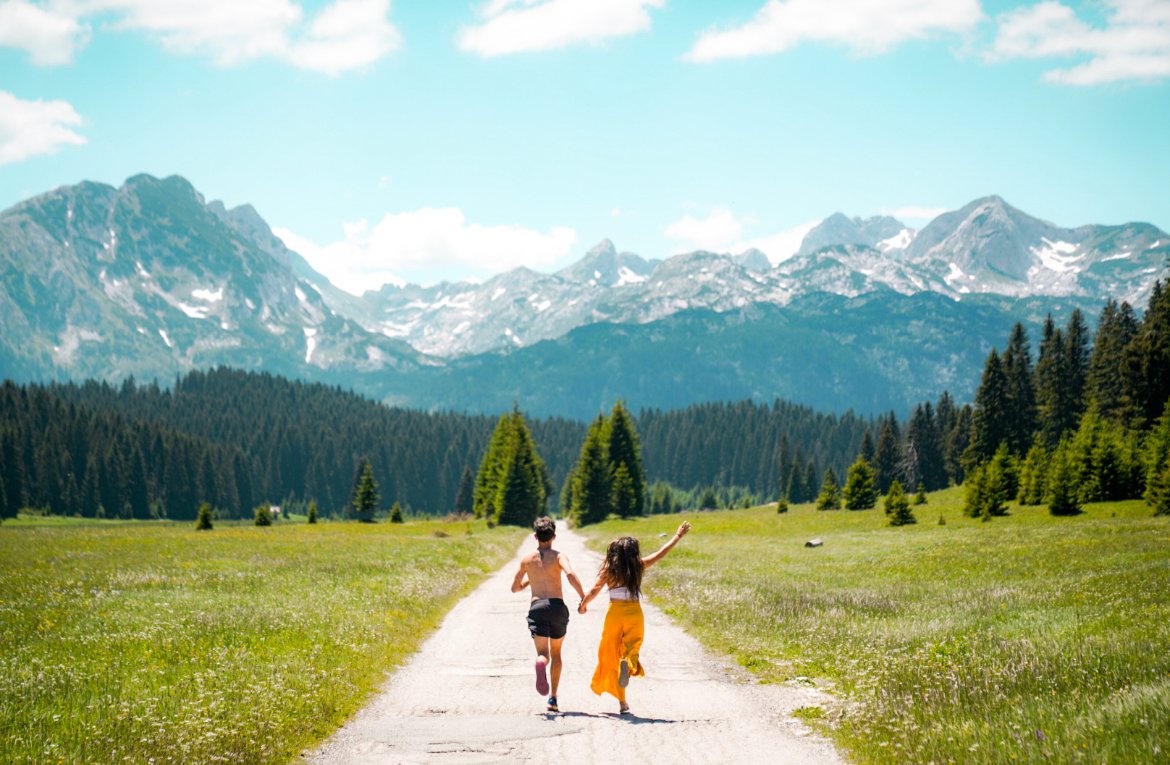
Stay Up To Date📫
We have a non-spammy weekly newsletter, where we give travel tips, and exclusive content and discounts .
Essential for Travel to South America #4: Toilet Paper
It may sound silly, but while you travel to South America toilet paper can be difficult to come by, even in restaurants or hotels! Grab a roll to have just in case you come across a place that doesn't have it, or wants you to pay. Believe it or not, in Bolivia and Peru we went to more places without toilet paper, than with.
How To Travel Cheaper and Better in 15 minutes!
How much more would you travel, if it costed you less resources?
With our Free eBook, you will learn how to save money and time on your future trips . Plus, you'll see the exact system we use.
Grab your copy for free when you sign up for our newsletter 👇
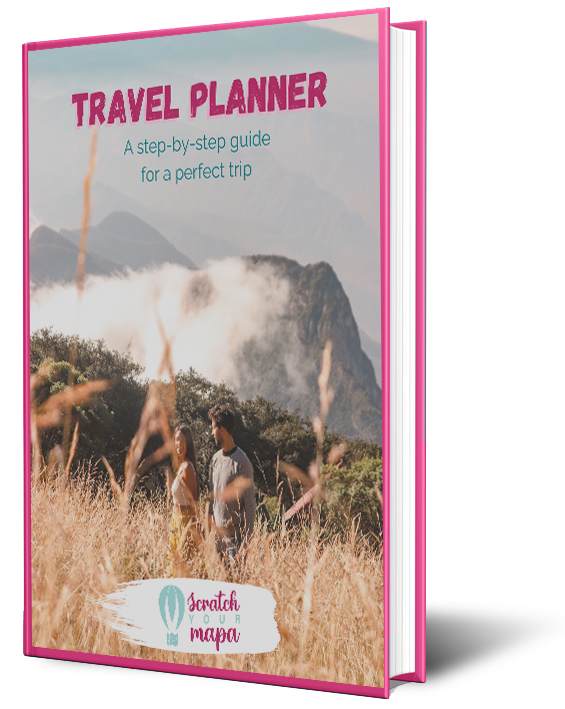

Essential for Travel to South America #5: Face Wipes/ Baby Wipes
With all of the crazy hikes you'll be doing, combined with the high temperatures, things can get pretty sweaty. Have face wipes on hand to freshen up, when nature calls, or if you happen to get dirty along the way.
Don't have time to read the whole article and want to save it for later? Just pin it!
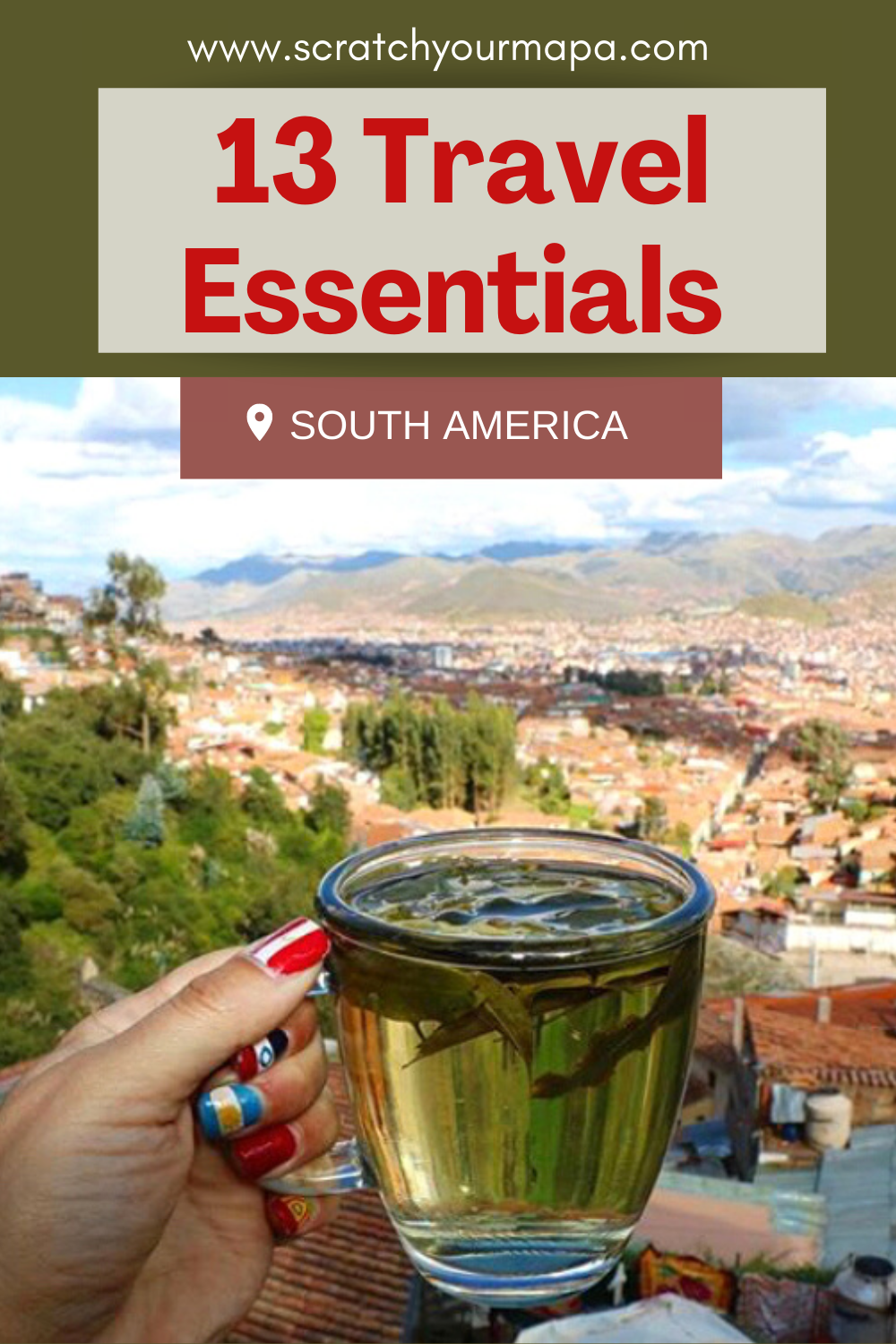
Essential for Travel to South America #6: Brazilian Canga
The canga is our absolute favorite travel essential, and for a good reason. This thin Brazilian blanket is good for having a place to sit on those long hikes or at the beach, can protect your electronics, be used to dry off, and so much more. Cangas are lightweight, so they are easy to carry, and can be used in so many ways.
Investing in some Brazilian Cangas made our travel to South America so much more pleasant and practical. If you do plan on visiting Brazil , these will be very easy to find, costing around $5-10 USD.

Cangas are light and can be used for a number of things.
Essential for Travel to South America #7: Bug Spray
South America has a lot of nature and rainforest, which means a lot of bugs. Certain areas where there are jungle or it gets to be extremely humid, require tons of bug spray.
Before you travel to South America , we suggest investing in a good bug spray. There is nothing more annoying than getting eaten alive while doing a few day trek.

All Your Travels
In one book.
Transform your travel memories into a unique book, with personalized pages, country by country.
Essential for Travel to South America #8: Vaseline
Vaseline was somethign we ended up using more than we though we would. Due to temperature changes, and long hikes, our skin, (particularly our feet and lips) got extremely dry. We used vaseline to put on the heels of our feet and as a substitution of chapstick overnight so that our skin could heal through the night.
Essential for Travel to South America #9: Reusable Water Bottle
With all of the hiking that there is, and hot temepratures, it is more important than anything to stay hydrated. Skip the plastic and invest in a water bottle that you can refill and use along the way.
There are awesome water bottles that hold the temperature, which are extremely helpful, and some water bottles with filters, which are particularly good in South America due to some places not having drinkable tap water. Head to Amazon for some great deals on these.

Will You Buy Us A Coffee? ☕
As coffee lovers, we always enjoy the energy of caffeine. It helps us get the best free travel guides out there for you! 😄
Essential for Travel to South America #10: Travel Pillow
Because South America is so spread out, places are actually further than they seem. Our favorite way to travel around was to take overnight buses from one place to another. This way we could save money and time. Comfort is key, so make sure that you have a small pillow to keep those long rides as comfortable as possible.
10 Travel Essentials You Didn’t Know You Needed
Have you ever though what would your travel essentials be? when you're traveling, there's certain situations you want to be prepared for. Here you will find a list of what we found out to be absolute necessary items.What to pack? That's the biggest question when preparing for a trip. No
Essential for Travel to South America #11: Small Backpack
Whether its a 4 day trek through Machu Picchu , or just a day trip to some waterfalls, there is always adventure when it comes to travel in South America .
Ditch the purse and bring a small backpack to bring your travel essentials in. The backpack will be much more comfortable and practical, and make those treks a lot easier.
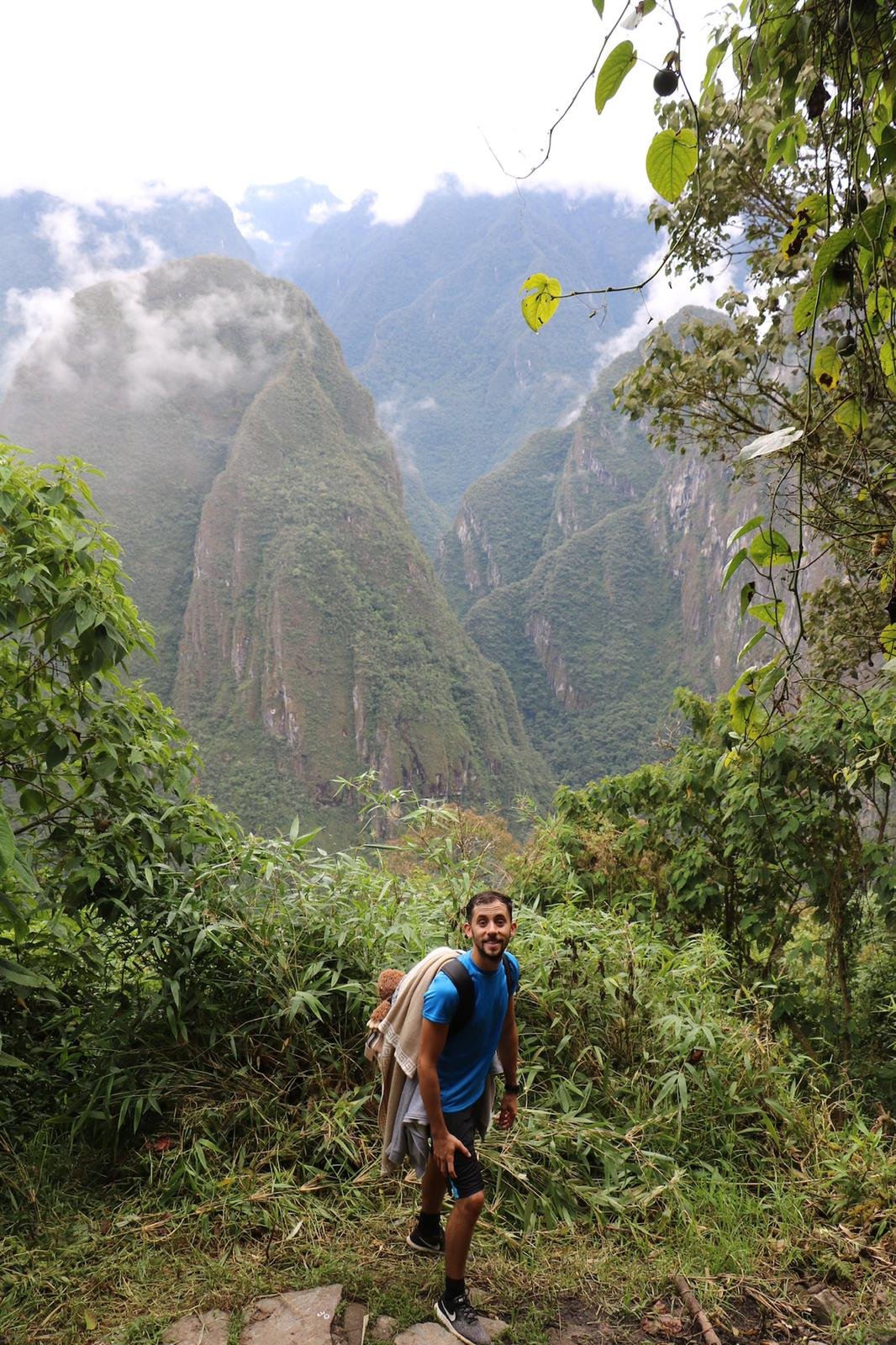
Having a small backpack will help you with all of the outdoor activities when you travel to South America.
Essential for Travel to South America #12: Plenty of Cash
ATMs are very hard to come by in certain areas of South America and credit cards are not accepted widely through these countries, especially if you aren't in a big city. Make sure you always have plenty of cash on you, so you don't run into any problems.
Essential for Travel to South America #13: Poncho
The weather can be pretty unpredictable when you travel to South America , and you never know just when it might start raining.
It can be complete sunshine, but once you hike up that mountain it can start to pour. Ponchos are great because they are light and don't take up much room, but can save you and your belongings from getting wet.
Travel to South America is super exciting, but if you are not prepared, you can find yourself in an uncomfortable situation. Make sure that you either bring some of them with you, or purchase them when you start your travels in the larger cities.
Want to see some amazing places to add to your South American Bucket list? Click here!
Looking for help on planning your next trip? We're ready to help you build the most epic trip of your life, without having to pay a ton. Want to know just how it works? Simply click here to get started!
Here are some other articles you'll love:
March 4, 2024
Cacheuta Spa: How to Visit the Iconic Thermal Baths in Mendoza, Argentina
One of the best things to do in
February 19, 2024
San Rafael, Argentina: The Perfect Place for Wine & Adventure
San Rafael, Argentina is an incredible area of
February 5, 2024
The Most Complete Guide of Visiting Mendoza in Argentina
Mendoza in Argentina is the Malbec capital of
October 23, 2023
What is Dollar Blue in Argentina? Understanding the Most Complex Economy in the World
The Dollar Blue in Argentina is probably one
October 9, 2023
Why Should I Visit Mar del Plata? A Guide for Visiting the Beach Area of Buenos Aires
There are so many incredible places to visit
September 26, 2023
Where Should I Go For the First Time in Brazil? A Beginner’s Guide for Visiting
If you're looking for beautiful beaches, lush jungle,
Like this article? Please share it with your family and friends, so that we can continue to keep creating free travel guides for you! It takes just a second, and would mean the world to us. Thanks for being here!
You Might Also Like

Cuisine of Argentina: 23 Traditional Argentinian Foods You Need to Try

10 Best Things to Do in Isla Mujeres, Mexico

The Island of Campeche, Florianopolis: A Hidden Gem of Brazil
Winter is here! Check out the winter wonderlands at these 5 amazing winter destinations in Montana
- Travel Tips
What To Pack For South America
Published: September 10, 2023
Modified: December 28, 2023
by Marney Demoss
- Tech & Gear
Introduction
Planning a trip to South America can be both exhilarating and overwhelming. With its diverse landscapes, rich cultural heritage, and adventurous activities, it’s no wonder that South America is a dream destination for many travelers.
Before embarking on your South American adventure, it’s crucial to pack smartly and efficiently. This travel guide will provide you with essential tips and a comprehensive packing list to ensure you have everything you need for a memorable and stress-free trip.
South America offers a wide range of climates, from tropical rainforests to high-altitude mountains. The key to successful packing is to strike a balance between comfort, versatility, and practicality. Packing light is recommended, as it allows for more flexibility while navigating through various destinations.
In this guide, we will cover the essential clothing items, footwear, travel accessories, toiletries, electronics and gadgets, medications and first aid, as well as miscellaneous items that you should consider packing for your South America trip.
Remember, it’s always a good idea to check the weather conditions and specific requirements of each destination you plan to visit. Now, let’s dive into the packing essentials for South America!
Essential Clothing Items
When it comes to clothing for your South America trip, it’s important to pack versatile and lightweight items that can be layered for different weather conditions and activities. Here are some essential clothing items to consider:
- Comfortable T-shirts and Tops: Pack a few lightweight, breathable t-shirts and tops for everyday wear. Opt for moisture-wicking fabrics to stay cool and dry.
- Long-sleeve Shirts and Sweaters: Include a few long-sleeve shirts and lightweight sweaters for cooler evenings or higher-altitude destinations.
- Bottoms: Pack a mix of comfortable pants, shorts, and skirts that are suitable for various activities. Consider quick-drying and wrinkle-resistant materials.
- Jacket or Outerwear: Depending on your travel itinerary, pack a waterproof and wind-resistant jacket or outerwear for unpredictable weather conditions.
- Swimwear: Don’t forget to pack swimwear if you plan to visit beach destinations or indulge in water-based activities.
- Sleepwear: Bring lightweight sleepwear for a good night’s rest during your trip.
- Undergarments and Socks: Pack enough undergarments and socks for the duration of your trip, considering activities that may require additional pairs.
Remember to consider cultural norms and dress codes of the countries you plan to visit in South America. Some places may require more conservative clothing, particularly when visiting religious sites or small towns. Packing versatile clothing options will help you respect local customs and feel comfortable throughout your journey.
Choosing the right footwear for your South America trip is essential, as you’ll likely be doing a lot of walking and exploring. Here are some footwear options to consider:
- Comfortable Walking Shoes: Pack a pair of comfortable walking shoes with good arch support for daily sightseeing and city exploration.
- Hiking Boots or Trail Shoes: If you plan to embark on outdoor adventures or hike in national parks, invest in a pair of sturdy hiking boots or trail shoes.
- Flip Flops or Sandals: Don’t forget to pack a pair of light and comfortable flip flops or sandals for beach days or to use in shared showers.
- Dress Shoes: If you plan to enjoy evenings out at nice restaurants or attend events with a more formal dress code, bring a pair of dress shoes.
- Socks: Pack comfortable socks that provide cushioning and moisture-wicking properties, especially if you’ll be doing a lot of walking.
It’s worth noting that South America offers a variety of terrains, from sandy beaches to rocky mountains. Be sure to consider the specific activities and destinations on your itinerary when selecting footwear. Break in your new shoes before your trip to avoid discomfort and blisters.
If you’re traveling during the wet season, or to areas with unpredictable weather, it may be worth considering waterproof or water-resistant footwear to keep your feet dry and comfortable.
Lastly, keep in mind that some cultural sites, such as temples or churches, may require you to remove your shoes before entering. So, having slip-on or easily removable shoes can be convenient in these situations.
Travel Accessories
Travel accessories can greatly enhance your South America trip, providing convenience and organization. Here are some essential travel accessories to consider:
- Travel Wallet: Keep your passport, ID, credit cards, and cash organized and secure in a travel wallet or passport holder.
- Travel Adapter: South America has different plug types, so be sure to pack a universal travel adapter to charge your electronic devices.
- Reusable Water Bottle: Stay hydrated by bringing a reusable water bottle. Many countries in South America have safe tap water, and this will also help reduce plastic waste.
- Travel Pillow: Rest comfortably during long flights or bus rides with a compact and inflatable travel pillow.
- Travel Locks: Ensure the security of your belongings by using travel locks on your luggage or lockable daypack.
- Money Belt: Consider using a discreet money belt to safely store your valuables and money while exploring crowded areas.
- Portable Charger: Keep your electronic devices powered up on the go with a portable charger.
- Microfiber Towel: Pack a lightweight and quick-drying microfiber towel, especially if you plan to visit hot springs, beaches, or stay in accommodations without towel provisions.
- Travel Guides and Maps: Carry travel guides or download offline maps to navigate and discover new destinations.
- Daypack or Backpack: Bring a daypack or small backpack for day trips, hiking excursions, and as a carry-on bag for flights.
These travel accessories can make your journey more comfortable, organized, and efficient. Before your trip, assess your specific needs and the activities you plan on participating in to determine which accessories are essential for you.
Remember to pack light and only bring what you truly need. Investing in durable and lightweight accessories will ensure they last throughout your trip and can be used for future adventures as well.
Packing the right toiletries for your South America trip will ensure you have all the essentials for personal care and hygiene. Here are some toiletries to consider:
- Toothbrush and Toothpaste: Don’t forget to pack your toothbrush and toothpaste for daily oral hygiene.
- Shampoo and Conditioner: Consider bringing travel-sized bottles of your preferred shampoo and conditioner or opt for solid shampoo bars to reduce liquid restrictions.
- Body Wash or Soap: Pack a small bottle of body wash or a bar of soap for daily showers.
- Deodorant: Stay fresh throughout your trip with your preferred deodorant.
- Sunscreen: Protect your skin from the sun’s harmful rays by packing sunscreen with a high SPF.
- Insect Repellent: South America is known for its diverse insect population, so be sure to bring insect repellent to ward off mosquitoes and other biting insects.
- Facial Cleanser and Moisturizer: Keep your skin refreshed and hydrated with your preferred facial cleanser and moisturizer.
- Razor and Shaving Cream: If you need to shave, pack a razor and shaving cream or opt for a travel-friendly electric razor.
- Menstrual Products: If needed, pack an ample supply of tampons, pads, or menstrual cups as these may be harder to find in certain areas.
- Nail Clippers and File: Keep your nails trimmed and tidy with a compact pair of nail clippers and a file.
Remember, if you’re traveling with carry-on luggage, be mindful of liquid restrictions and pack travel-sized or solid toiletries in clear, resealable bags. Also, consider any specific toiletries you may need based on personal preferences or any skin sensitivities.
If you’re unsure about the availability of certain toiletries in your destination, it’s always a good idea to pack a sufficient supply to last you for the duration of your trip.
Electronics and Gadgets
Having the right electronics and gadgets can greatly enhance your South America trip, whether it’s capturing stunning photos, staying connected, or navigating through unfamiliar territories. Here are some essential electronics and gadgets to consider:
- Smartphone: Your smartphone will be your ultimate travel companion, allowing you to communicate, access maps, and find useful information on the go.
- Camera: Capture the incredible landscapes and vibrant culture of South America with a digital camera or a high-quality smartphone camera.
- Portable Power Bank: Keep your electronic devices charged even when you’re on the move with a reliable portable power bank.
- Laptop or Tablet: If you need to work or stay connected during your trip, consider bringing a lightweight laptop or tablet.
- E-book Reader: If you’re an avid reader, bring an e-book reader to have a wide selection of books at your fingertips, while saving space and weight in your luggage.
- Headphones or Earphones: Tune in to your favorite music, podcasts, or language-learning programs with a comfortable pair of headphones or earphones.
- Universal Travel Adapter: Ensure your electronics can be charged by packing a universal travel adapter with different plug types.
- Portable Speaker: If you enjoy listening to music or having impromptu gatherings, consider bringing a portable Bluetooth speaker with good sound quality.
- External Hard Drive/USB Drive: If you plan to take a lot of photos and videos, it’s a good idea to have extra storage space with an external hard drive or USB drive.
Remember to pack the necessary chargers, cables, and accessories for your electronic devices. It’s also a good idea to have backups of important files and documents saved in cloud storage or on an external device.
Before traveling, familiarize yourself with the voltage and plug types used in the countries you’ll be visiting. This information will help you determine if you need voltage converters or additional adapters.
Lastly, be mindful of your surroundings and exercise caution when using electronics in public areas to avoid theft or damage.
Medications and First Aid
Prioritizing your health and well-being is crucial while traveling in South America. Packing essential medications and a basic first aid kit can help you address minor health issues and be prepared for unexpected situations. Here are some items to consider:
- Prescription Medications: If you take prescription medications, ensure you have an ample supply to last your entire trip and carry them in their original labeled containers.
- Over-the-Counter Medications: Pack a variety of over-the-counter medications to address common ailments such as pain, fever, allergies, indigestion, and motion sickness.
- First Aid Kit: Prepare a basic first aid kit that includes adhesive bandages, antiseptic wipes, gauze pads, adhesive tape, tweezers, scissors, and any specific items you may require.
- Insect Repellent: As mentioned earlier, South America is home to various insects, including mosquitoes that can transmit diseases. Pack effective insect repellent to protect yourself from bites.
- Sunscreen: Protect your skin from the strong South American sun by packing sunscreen with a high SPF.
- Hand Sanitizer: Promote good hygiene by carrying a small bottle of hand sanitizer to use when soap and water are not readily available.
- Diarrhea Relief: Pack anti-diarrheal medication and rehydration salts to address any digestive discomfort that may arise from changes in diet or water.
- Motion Sickness Medication: If you’re prone to motion sickness, consider bringing medication or natural remedies to alleviate symptoms during bus rides or flights.
- Allergy Medication: If you have known allergies, pack your required allergy medication to manage any flare-ups.
It’s essential to consult with your healthcare provider before travel to discuss recommended vaccinations and any specific health concerns you may have. Additionally, check if any medications you plan to bring are legal and allowed in the countries you’ll be visiting in South America.
Keep in mind that local pharmacies are usually available in major cities, but the availability of specific medications may vary. Therefore, it’s best to carry essential medications with you.
Lastly, ensure you have travel insurance that covers medical emergencies and evacuation, as well as any pre-existing conditions you may have.
Miscellaneous Items
Aside from the essentials, there are several miscellaneous items that can come in handy during your South America trip. These items can enhance your travel experience and provide added comfort and convenience. Here are some miscellaneous items to consider:
- Travel Towel: Pack a compact and quick-drying travel towel that can be useful for beach trips, hikes, or when accommodations don’t provide towels.
- Reusable Shopping Bag: Bring a foldable, reusable shopping bag to avoid single-use plastic bags and reduce your environmental impact.
- Travel Pillowcase: If you prefer using your own pillowcase for hygiene or comfort purposes, pack a lightweight and compact travel pillowcase.
- Travel Laundry Kit: Carry a small laundry kit that includes laundry soap, a sink stopper, and a clothesline for washing your clothes while on the go.
- Travel Journal: Document your South America journey by bringing a travel journal to record your experiences, memories, and thoughts.
- Collapsible Water Bottle: Save space in your bag by carrying a collapsible water bottle that can be easily folded when empty.
- Travel Sewing Kit: Pack a compact sewing kit with basic supplies like needles, thread, and safety pins for any clothing repairs.
- Travel Umbrella or Rain Poncho: Be prepared for unexpected rain showers by packing a compact travel umbrella or a lightweight rain poncho.
- Snacks: Carry some non-perishable snacks like granola bars, nuts, or dried fruit for times when you may be in remote areas or have limited food options.
- Sunglasses and Hat: Protect your eyes and face from the sun’s rays by bringing a pair of sunglasses and a comfortable hat.
These miscellaneous items may seem small, but they can make a significant difference in your comfort and convenience during your South America trip. Customize your packing list based on your personal preferences and specific needs.
Remember to pack these items strategically in your luggage to optimize space and weight distribution. Packing cubes or compression bags can also help keep your belongings organized and save space in your bag.
Lastly, always be mindful of the weight restrictions set by airlines and avoid overpacking. Having a well-thought-out packing list will ensure you have everything you need without being burdened by excessive luggage.
As you prepare for your South America trip, packing the right items is essential for a smooth and enjoyable journey. By taking into account the specific climate, activities, and cultural norms of the countries you plan to visit, you can ensure that you have everything you need without carrying unnecessary weight.
In this comprehensive travel guide, we have covered the essential clothing items, footwear, travel accessories, toiletries, electronics and gadgets, medications and first aid, as well as miscellaneous items to consider packing for your South America adventure.
Remember to pack versatile and lightweight clothing items that can be layered, comfortable footwear suitable for various activities, and essential travel accessories such as a travel wallet, adapter, and reusable water bottle. Don’t forget to pack toiletries, medications, and a basic first aid kit to take care of your health and well-being during your trip.
By preparing in advance and having the necessary items, you can focus on experiencing the breathtaking landscapes, immersing yourself in vibrant cultures, and creating unforgettable memories in South America.
Lastly, as you embark on your journey, embrace the spirit of adventure and be open to new experiences. Stay flexible, respect the local customs and traditions, and immerse yourself in the beauty and diversity that South America has to offer.
Safe travels and have an incredible time exploring the wonders of South America!

- Privacy Overview
- Strictly Necessary Cookies
This website uses cookies so that we can provide you with the best user experience possible. Cookie information is stored in your browser and performs functions such as recognising you when you return to our website and helping our team to understand which sections of the website you find most interesting and useful.
Strictly Necessary Cookie should be enabled at all times so that we can save your preferences for cookie settings.
If you disable this cookie, we will not be able to save your preferences. This means that every time you visit this website you will need to enable or disable cookies again.

14 Essential Tips For Backpacking South America
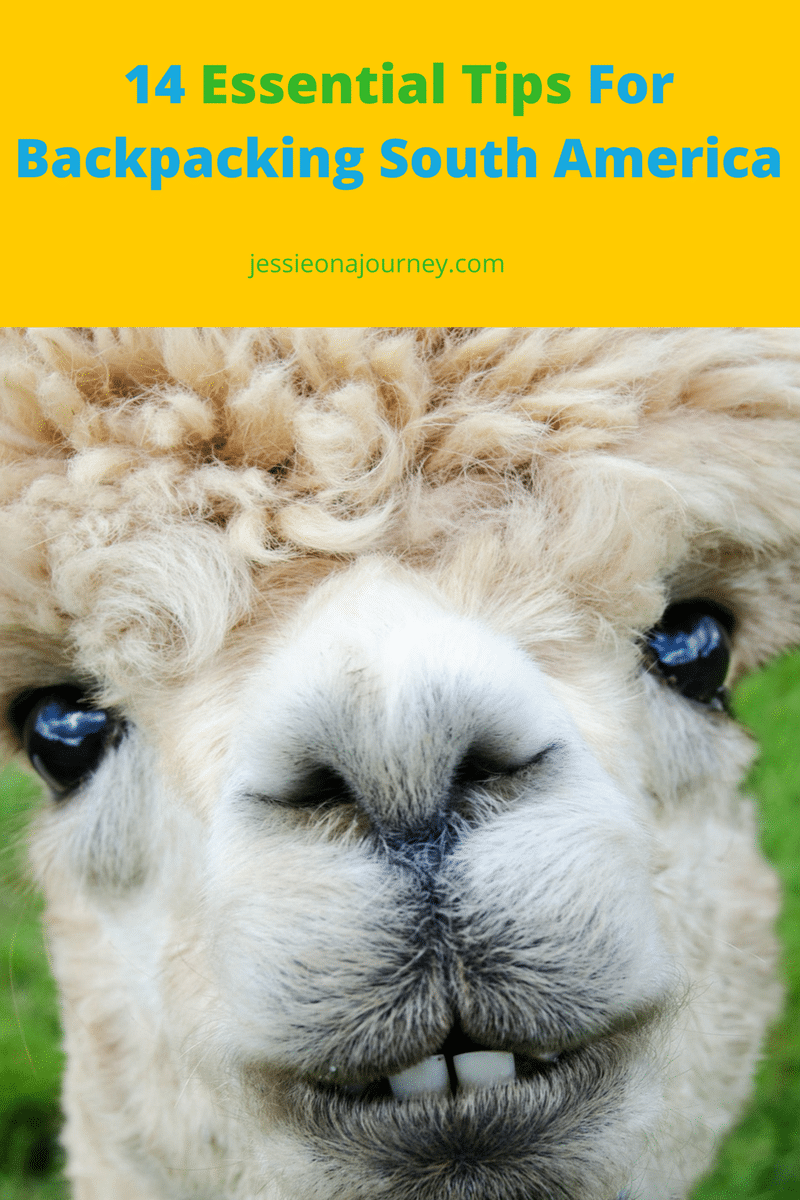
Backpacking South America is a worthwhile adventure that I believe everyone should experience.
Before I arrived on the continent, I was unsure of what to expect.
To help you prepare, here are some things I wish I had known before I left for my trip.
Table of Contents
South America Travel Tips [Video]
But first…
Check out my video above! You’ll snag some bonus South America trip advice, set to an upbeat tune. It’s based on my time traveling solo in South America .
Afterward, continue reading the post.
1. Bring Offline Activities
Traveling to different cities around South America means you’ll be taking the bus.
If you’re doing the typical backpacker circuit, be prepared for plenty of overnight bus rides.
While you can spend a lot time gazing out at the beautiful scenery, it’s also wise to bring some offline activities to occupy your time.
Download apps and games that work without WiFi, bring a book, write in your journal, knit, draw, or do anything else that you enjoy to pass the time.
Travel tip :
Use this time to practice your Spanish or Portuguese (depending where you are).
These buses are typically full of locals, so you’ll essentially have access to a free language exchange.
If you prefer a language-learning app, Rype is a membership service offering unlimited one-on-one lessons each month that’s really awesome!
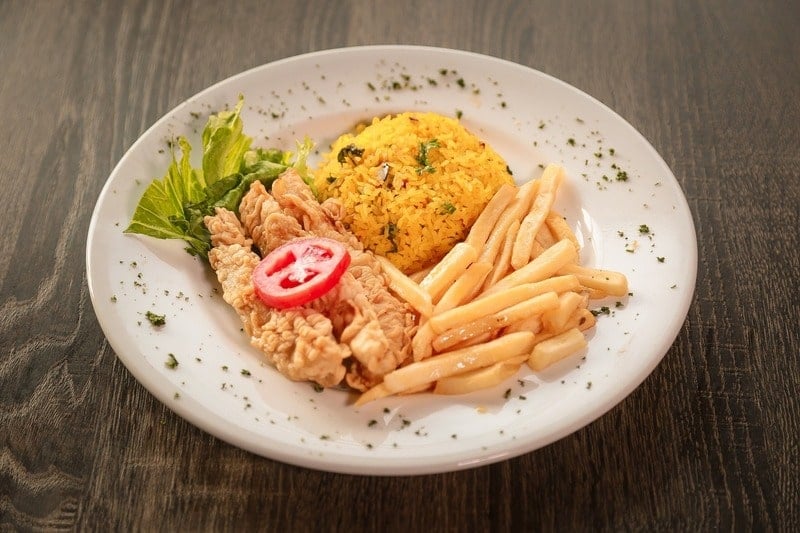
2. Watch What You Eat
The food in South America is delicious, but it can also be dangerous for your waistline.
Because traveling solo in Brazil , Argentina , and Chile tends to be more on the expensive side, I typically opted to cook in my hostel.
However, once I was traveling in Bolivia , Peru , and Ecuador , I could get a three-course meal for around $1. As a result, my food intake increased (as did my pants size).
While the local eateries that offer these traditional meals are worth frequenting, try to eat only half of your food and add lots of active adventures into your itinerary.
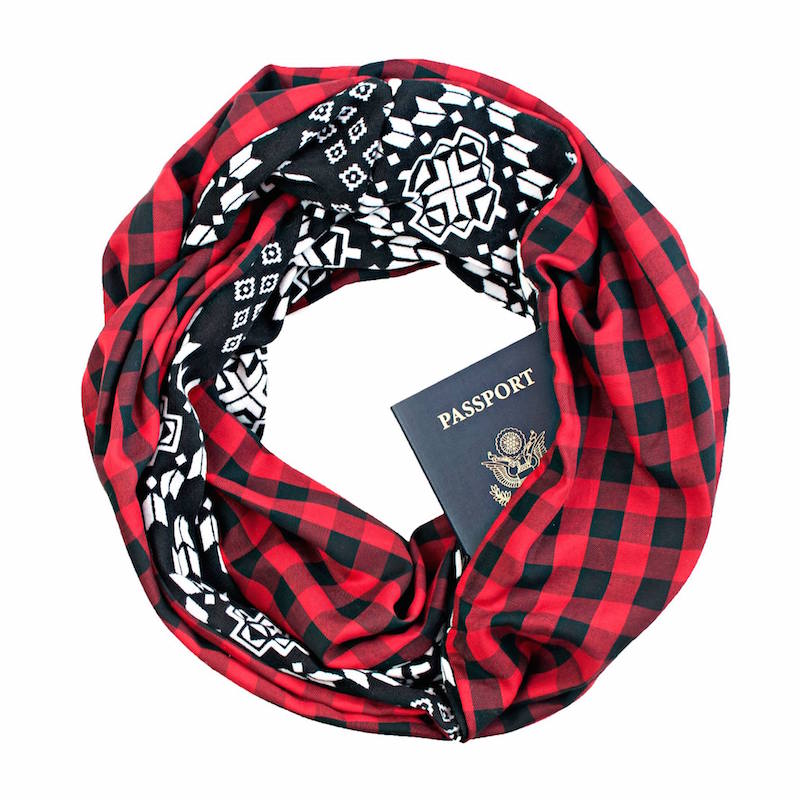
3. Wear Pick-Pocket Proof Clothing
Like I mentioned before, you’ll most likely be taking a number of long bus journeys in South America.
Therefore, falling asleep on these buses is inevitable.
Theft and pick-pocketing are common throughout South America.
Instead of trying to stay up all night or losing your hair worrying about your belongings, wear pick-pocket proof clothing from retailers like Clever Travel Companion .
These garments allow you to keep valuables inside of your clothing close to your body, so nobody even knows you have anything on you.
I love the handmade scarves from Speakeasy Travel Supply , each with a durable double-stitched design and self-locking zipper pocket.
I’m also a big fan of the She’s Birdie Personal Alarm (15% off with code JESSIEONAJOURNEY15) , which blares as loud as a firetruck when you pull off the pin. I wear mine like a bracelet when walking alone at night or hiking.
Of course, the number one way to prepare for problems is to purchase travel insurance .
When my luggage was lost for a week when backpacking, my travel insurance reimbursed me for the toiletries and clothing I had to buy while waiting for it to be returned.
It can also ensure you’re covered when big emergencies strike.

4. Interact With Locals
Every country in South America has a unique culture worth exploring.
The best way to do this is by interacting with locals. While the bus is a great place to strike up a conversation with locals, you can also use resources like CouchSurfing to find a local host or Viator to book local tours.
I also love Lokal Travel for booking conscious experiences that benefit the local community I’m visiting.

5. Bring Your Sweet Tooth
In many places in South America, you will be surrounded by delicious cakes, cookies, pastries and candies.
I especially noticed this in Brazil, where it is not uncommon to eat sweets for breakfast.
In fact, at all of the Brazilian hostels I stayed in, treats like chocolate cake with sprinkles and chocolate sandwich cookies were served in the morning.
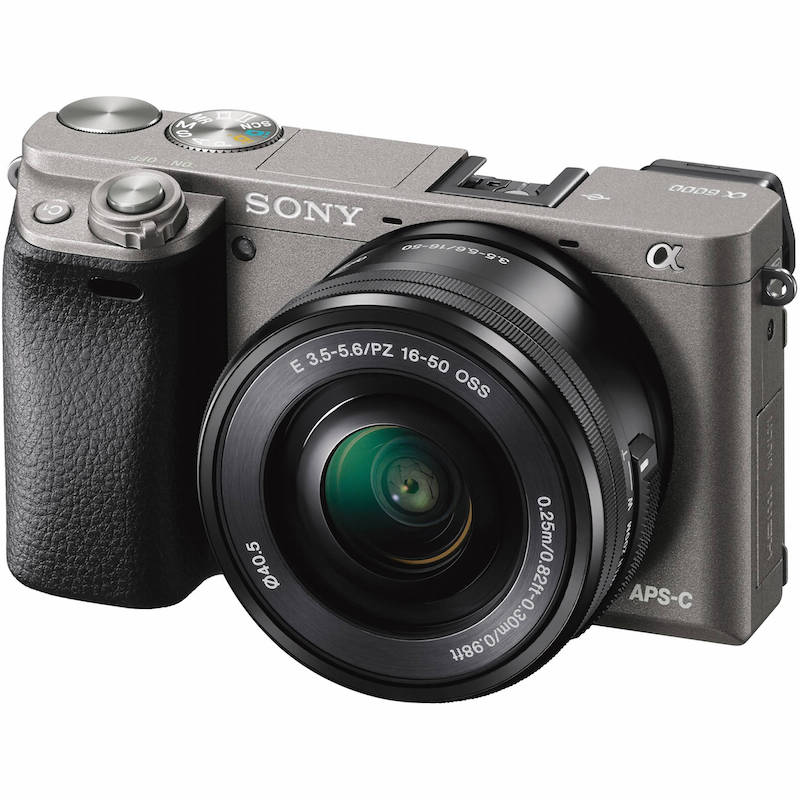
6. Take A Photography Class
South America is full of surreal and otherworldly landscapes. These beautiful sights include Patagonia , the Uyuni Salt Flats and Iguazu Falls . Scenery like this deserves more than a quick snapshot.
Before your trip, take a photography class to hone your skills.
UDEMY is great for online courses.
If you have the money invest in a professional camera, South America is a great destination to play around and get creative using beautiful landscapes as a backdrop.
One thing to consider though: if sleeping on overnight buses, you’ll want to be really careful with a large camera.
For this reason, I recommend the lightweight and budget-friendly Sony Alpha a6000 (pictured above), or using a higher quality smartphone.
For shooting video I recommend using VideoDone for editing.
You can send their team of professionals your raw footage to have them create a professional video for you.
You can use promo code “JESSIEONAJOURNEY” for 10% off, as well.
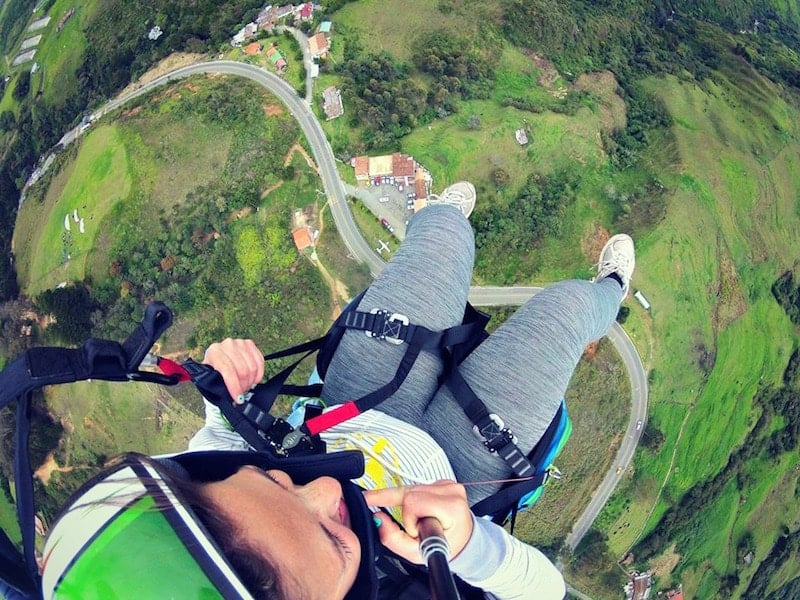
7. Know The Exchange Rate
The exchange rates vary considerably from country to country in South America.
While travelers can stretch their dollar very far in Bolivia and Peru, popular tourist cities in countries like Argentina, Brazil and Chile can be expensive.
If you’re on a budget, look up which cities are the most affordable beforehand.
I noticed in Argentina the farther south I went — basically the farther into Patagonia — the more expensive things cost.
My usual chicken sub went from being 10 to 15 Argentine Pesos (less than $1) in Buenos Aires to 45 to 60 Argentine Pesos ($5.50 to $7) in Bariloche.
By the way, here’s everything you need to know about the US dollar exchange in Argentina.
Bring a mix of US cash, debit cards, credit cards and foreign currency with you. It is not uncommon outside of big cities, especially in Patagonia, for ATMs to run out of cash, so it’s good to be prepared.
This happened to me in El Calafate — right as I was attempting to book tours to Perito Moreno and Torres del Paine National Park .
Despite begging and pleading for the travel agencies to let me use my credit card, they would only take cash.
Luckily, someone I had met on the road trusted me enough to loan me the money — aren’t travelers the best? — and I paid them back in the next town.
Additionally, tell your bank and credit card company you’re leaving the country beforehand. If you don’t, you may find yourself with a frozen account.
8. Sometimes “Roughing It” Isn’t The Best Option
Moreover, don’t always think “roughing it” will save you money.
Making use of the shelters on the “W” circuit in Torres del Paine and camping your way through the Inca Trail to Machu Picchu are quite expensive. In fact, one night in a “refugio” in Torres del Paine will cost about $40 to $60 — and that only includes the mattress.
Camping in the park is free if you bring your own gear; however, this can be tricky as the hike is difficult at times and you will have to carry your own equipment.
Trekking with a good company for the Inca Trail will cost about $500 to $650 including entrance fees.

9. Check The Weather For The Places You Want to Go Beforehand
While most people check the weather for the first city of their trip, it is a good idea to look it up for each area when traveling in South America.
For example, in Buenos Aires, Argentina, you may be able to walk around in shorts and tank top, while heading to Bariloche in the same country may require a hat and coat.
Furthermore, don’t think because it is a certain season in your destination the weather will match that season in your home country.
Autumn in Patagonia or Brazil is a lot different than autumn in New York.

10. Try the Local Specialties
There are many preconceived notions that exist on what “South American food” is like.
The truth is that each country, and even the different cities within a country, has its own local specialties.
Argentine empanadas are delicious; however, the ingredients differ from city to city. In Brazil eating açai is more than just a treat, it’s a cultural experience.
Ceviche in Peru, cuy in Ecuador, seafood stews in Chile, giant steaks and matte tea in Argentina, barbecue in Brazil — these are just some of the delicious options waiting for you on your backpacking adventure.
If you’re looking for a unique culinary experience, sites like BonAppetour , Feastly and EatWith allow you to dine in local homes.
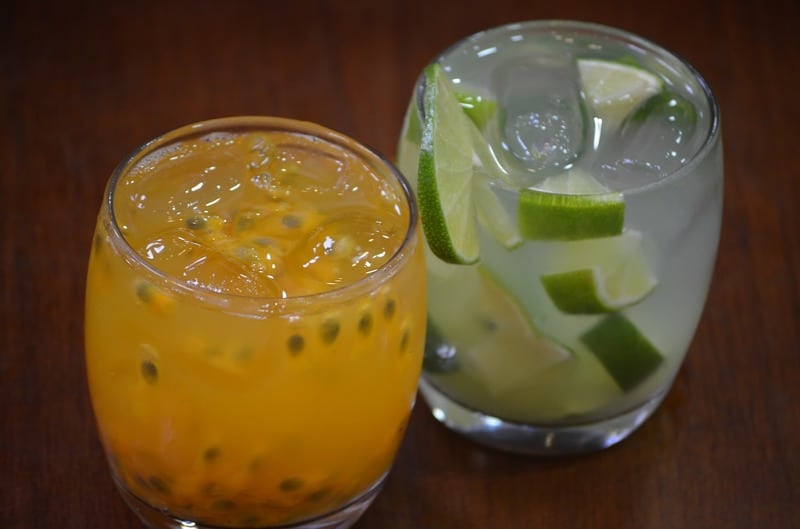
11. Prepare Your Liver
Not only do the countries of South America feature unique and appetizing foods, many are also known for their national drinks.
In Brazil, you must try the “Caipirinha,” a strong cocktail made with cachaça, sugar and lime.
Argentina is world-renowned for its red Malbec wine, while the Pisco Sour, created using pisco and lemon juice, is typical of Peru and Chile.
When visiting Colombia , savor “Aguardiente,” or firewater, made from sugar cane molasses converted into alcohol. The proof is usually 60%, and many times sugar is added to sweeten the drink.
For more on this, check out International Booze Cruise: The Best Local Cocktails From Around The World .

12. Keep a Loose Itinerary
With such convenient bus transportation, keeping a loose itinerary is easy . You can arrive in a city, peruse the different bus routes, then figure out where you want to go.
I’d advise talking to other travelers in your hostel to get recommendations.
For example, when I arrived in Bariloche , Argentina, I immediately went and booked a bus ticket to El Calafate, simply based on the fact that I had read this is what you were “supposed to do in Patagonia”; however, after speaking with other backpackers it became sadly apparent I was skipping El Chalten , a hotspot for hiking .
If I had waited to book my ticket I could have stopped there first and then moved on to El Calafate.
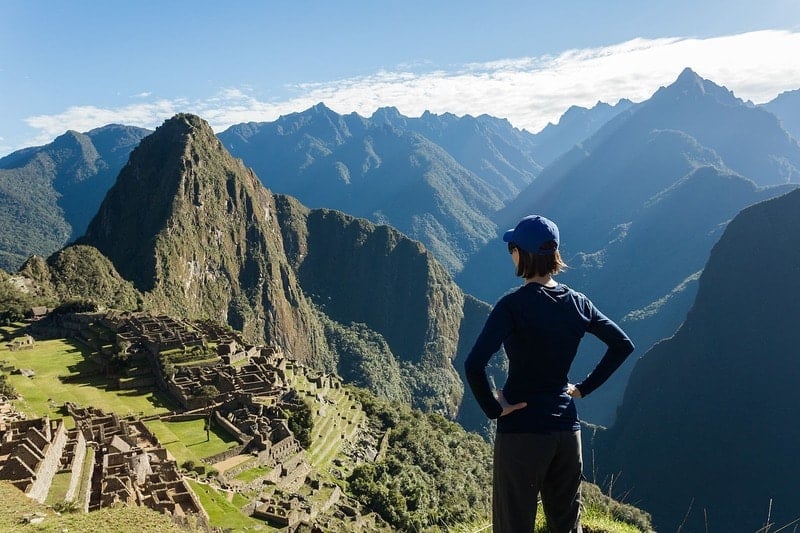
13. Plan Your Big Hikes in Advance
That being said, you should plan out any big hikes in advance. For example, if you want to trek the Inca Trail you’re going to need to book it months in advance if you want to ensure you have a spot.
Moreover, doing the “W” circuit in Torres del Paine, or even a shorter version of it, requires some beforehand planning.
- Will you camp, stay in a refugio, or book a nearby hotel?
- Are the refugios open when you’re going? If it’s high season, they may even be booked up.
- Where will you store your pack?
- Will you trek with it?
I’d also recommend checking the weather, as this windy park can be difficult to trek when stormy.
Because rain can happen at any time, I highly recommend bringing a waterproof backpack ( like these from REI !).
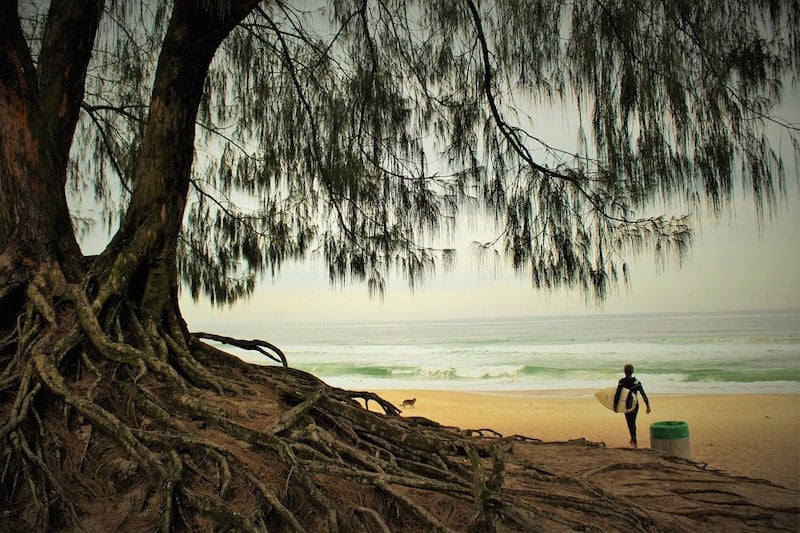
14. Bring A Sense Of Adventure
No matter what thrills you, you’ll find it in South America.
Surfing Rio de Janeiro ‘s beautiful beaches, hiking glaciers or ancient ruins, hang gliding over picturesque Patagonia, trekking the Andes or Amazon and scuba diving the clear waters of Paraty — these are just a few of your options.
Simply backpacking South America is an adventure in itself , as you never know whom you’ll meet, what cultural discoveries you’ll make or where you’ll end up the next day.
I felt particularly lazy one night when I was in Paraty, Brazil.
Nevertheless, I went to the beach bar across the street from my hostel for a Caipirinha just to feel social.
I ended up hanging out with locals all night, learning how to forró dance and going to the town’s signature nightclub, Paraty 33.
It ended up being one of my most memorable nights of the trip.
For the full story, check out Breaking Language Barriers: A Date Without Words In Paraty, Brazil.
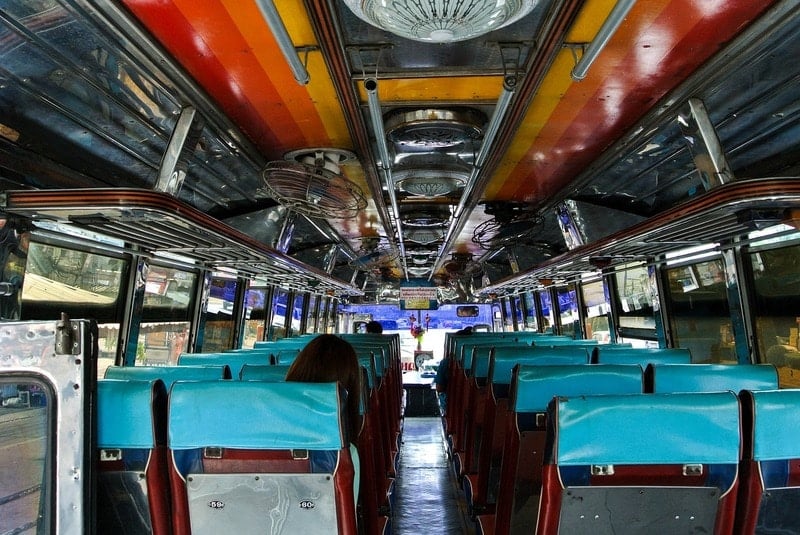
15. Know Where You Need to Take Extra Precautions
I don’t care if you’re in your hometown, you should always be alert. Bad things happen everywhere, not just when you’re traveling.
That being said, there are certain cities — and areas within cities – that you need to be extra vigilant in.
When arriving at a hostel, I always make sure to ask the staff to circle the areas on my map that are more dangerous.
For example, when in Buenos Aires, the hostel staff told me to be very careful when walking around in the southeast part of the city near La Boca.
Not listening, a friend of mine not only went and walked around the area alone, but also made it obvious he was carrying a camera and stored it in his backpack — where it was completely out of his sight.
It wasn’t surprising to me that by the time he returned to the hostel, his camera had been stolen.
On a bus ride in Bolivia, where you should always be on high alert, one traveler fell asleep with her DSLR camera sitting in her lap.
Luckily her boyfriend was awake, because one local actually reached over to snatch it off her lap.
He was able to stop the theft from occurring, but the situation could have been avoided if the girl would have been more cautious.
Keep in mind, these are examples of petty theft. You also want to keep yourself safe from physical danger. For more on this, check out 17 Safety Tips For Solo Travelers .
This article was adapted from a piece originally published on Gadling .
ENJOYED THIS POST? PIN IT FOR LATER!
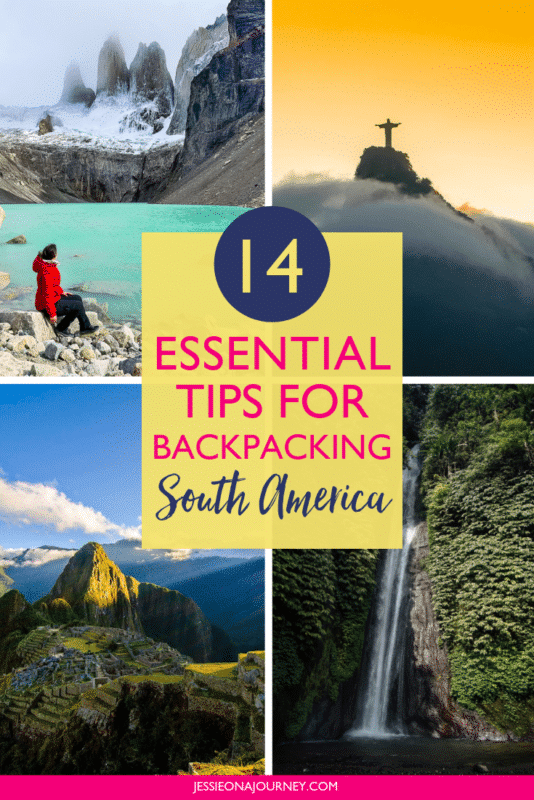
Related posts:

Hi, I’m Jessie on a journey!
I'm a conscious solo traveler on a mission to take you beyond the guidebook to inspire you to live your best life through travel. Come join me!
Want to live your best life through travel?
Subscribe for FREE access to my library of fun blogging worksheets and learn how to get paid to travel more!

Turn Your Travel Blog Into A Profitable Business
Subscribe to my email list to snag instant access to my library of workbooks, checklists, tutorials and other resources to help you earn more money -- and have more fun -- blogging. Oh, and it's totally FREE! :) // Privacy Policy .
Check your inbox for your welcome email + resource library password!
21 Comments
Nice set of posts on Buenos Aires, especially like the free tours one. I found your site through a guest article you wrote so good job getting your writing and name out there.
BTW, I kept reading your name as “Jessica Fiesta” – then realized it was Festa… kind-of funny 🙂
Thanks so much! 🙂 And don’t worry, you’re definitely not the first to think it’s “Fiesta” ha
I’m just planning my trip around South America so this advice comes at the right time. Thank you!
Hi! This is so so helpful, as my partner and I are about to embark on a year in south america. One thing I am struggling to find out online is how easy/hard cheap/expensive the buses are… We are planning to do all of our travel by bus – do you think this is easy enough to do?? And how much do buses cost country to country? Thanks! X
Yes, I traveled by bus, as well. Each country and company are different in price; however, I found bus travel very very affordable, often cheap even 🙂
This is a dream of mine, to be able to backpack all around South America!
@Jay: You can! You’ve just got to make the decision to go 🙂
Are nightly bus journeys comfortable in South America? I have heard that overnight buses can get noisy as drivers like listening to Spanish music while everyone else is sleeping.
http://andestransit.com/
@Alan: Totally depends! I definitely had a mix of quiet rides — some of the upscale bus services even had sparkling wine at midnight — and noisy music-filled rides. I remember heading from Cuenca to Banos on a night bus and they played a movie SO LOUD I thought my ears would explode.
Yes that right theres a lot of delicious foods in south America but its dangerous to our waistline.
@April: Everything in moderation!
I am a frequent flyer and I do travel a lot. I love nature and being a part of it. Actually, this Jan 2017, I plan to go Usually, I need a high capacity backpack for clothes and accessories. If it comes in pink and good design, it will be awesome. Do you have any good recommendation on this? Thanks for your tips and please keep it up.
Yes to basically everything. You have summarised everything so perfectly. I spent 3 months in South America but feel since leaving I’ve struggled to find any guides that accurately sum up and prepare a traveller on what to expect.
Thanks for a great post.
I have planned to backpack South America for quite sometime, I hope I get to do it soon. Thank you for the tips.
My business partners and I have started a Community-Based Tourism project in New York.
We offer US adventurers (between 23-35 year old) the possibility to travel, live and experience local native communities in the rainforest, andes and coast in the most pristine and exclusive sites of several Latin American countries.
We have read your blog and found it fascinating. We would like to ask if you are available for a Skype or a quick survey about the US young adventurer and its traveling trends and preferences.
We are very interested in knowing your opinion in various topics related to our startup and perhaps receive your feedback.
I would love to travel to South America and your tips make it sound possible to go there on a budget. Great post, Jessie!
Hi Jessie, when you travelled through Bolivia, Equador and Peru did the hostels have cooking facilities? Or was it simply cheaper to eat out.
@James: All are different. Before booking a hostel you should be able to see if they have a kitchen!
South America looks like a paradise for backpackers and hikers. I would love to try this some day. Looks exciting, nice pictures and information in this article.
I was surprised at number 2…. A 3-course meal for $1??? I have never seen anything that cheap in all my time spent in Latin America. Having said that Bolivia, Peru and Ecuador are 3 countries I not yet been to.
@Dan: Honest! Such a great lunch deal 🙂
Leave a Comment Cancel Reply
South American Packing Essentials

- ATM/ Debit card. In every major and most minor cities in South America, I've found ATM machines that accept my debit card. Arrange for a fee waiver before leaving and save receipts in case there are errors. I was double charged or incorrectly charged more than three times totaling a staggering $970. I got it back, but it was a fight.
- Teva Sandals, durable and comfortable boots, and hiking socks. Hiking boots are versatile enough to wear to a show and tough enough for slogging through mud during an Andean shower. Your feet will thank you for the breather when you wear the sandals.
- Money belt for important documents, passport, and money. Do not use the kind that hang from your neck. They're not very secure and a pain to use.
- REI convertible pants. Light, fast drying, and the legs zip off to form shorts.
- REI travel vest has four pockets for money, passport, even my camera.
- Fleece sweater and light rain jacket. Need I say more?
- Hat to block the sun. That equatorial sun is strong. Consider buying the hat when you arrive. It makes a great memory of all of your travel miles.
- Shammy in place of a towel. Shammies dry fast, they're durable, compact.… I've given these out as gifts to other travelers who thought they were the coolest.
- Deodorant when you can't shower, you can always roll on the Speed Stick!
- Headlamp It's better than a flashlight because it frees up your hands.
- Merriam Webster’s Pocket Atlas - All of the countries in the world in your back pocket; for quick reference when meeting traveler’s from foreign neighborhoods.
- Contact lenses and medications. Keep in mind that Latin American pharmacies sell many of the most common medications without a prescription (including malaria pills).
- Miscellaneous: small pocket dictionary, journal, guide book, a paperback novel to read and exchange with other travelers, compact cassette player, and a backpack a size smaller than you think you need.
Want to Go?
South america, amazon travel guide.
- All Amazon Trips
- Amazon River Cruises
- Luxury Amazon Cruises
- 18 Best Amazon Lodges
- Amazon FAQs
- Peru Amazon Rainforest - Cruises & Eco Lodge
- The World's Largest Macaw Lick
- Indigenous People
- Tropical Rainforest Animals
- Jungle Packing Tips
- What Can I Do to Help the Amazon Rainforest?
- Medicinal Treasures of the Rainforest
- Best Time of Year to Travel to the Amazon
- Ecuador's Amazon – Lodges, Tours & Cruises
Favorite Amazon All Trips
- Sacha Lodge
- La Selva Lodge
- Amazon Discoveries: Search for the Pink Dolphin
- Amazon Explorer
Top Amazon Travel Destinations
- Puerto Maldonado
- Yasuni National Park
Amazon Trips by Departure Date
- 2024 Amazon trips (84)
- 2025 Amazon trips (68)
- 2026 Amazon trips (32)
- April 2024 (64)
- May 2024 (72)
- June 2024 (71)
- July 2024 (71)
- August 2024 (71)
- September 2024 (70)
- October 2024 (74)
- November 2024 (69)
- December 2024 (68)
Top Experiences in Amazon
- Amazon Wildlife & Safari Exploration (73)
- Amazon Cruises (45)
- Amazon River Cruises (41)
- Amazon Land Tours (40)
- Amazon Luxury (16)
- Amazon Cultural (7)
- Amazon Family (6)
Amazon Trips by Duration
- 5 day trips (19)
- 7 day trips (10)
- 8 day trips (15)
- 10 day trips (3)
- 15 day trips (4)
Amazon Trips by Activity
- Amazon wildlife viewing (83)
- Amazon rainforest exploration (79)
- Amazon village visits (45)
- Amazon kayaking (41)
- Amazon wilderness lodge exploration (35)
- Amazon fishing (30)
- Amazon local market visits (24)
- Amazon hiking (22)
- Amazon small ship cruises (7)
- Amazon biking (5)
- Amazon snorkeling (5)
- Amazon horseback riding (4)
- Amazon hacienda visits (3)
- Amazon camping (3)
- Amazon urban exploration (3)
Why Travel With Adventure Life
Recognized by.

Go Travel and Talk
- Travel Blog
Backpacking Essentials For South America
Before I left for my 6 months of South American backpacking, I spent some time researching what exactly to pack for South America. With so many different terrains, extreme weather conditions and unique cultures, it was a nightmare to plan for! But, after 6 months of backpacking through Colombia , Ecuador, Peru and Bolivia , I can safely say I now have a much better idea of what backpacking essentials you will need in South America and what travel gear you should leave at home!
Because of the few mistakes I made and the realisation of missing out some important travel gear essentials, I wanted to share with you my favourite and most used travel gear for South America. This packing list has everything you need for backpacking in South America and all tried and tested by me and the Go Travel and Talk team!
I hope you find this packing list helpful when creating your packing list essentials for South America!

South America is HUGE and home to many countries with different climates, weather conditions, terrains and cultures - which makes deciding on what to take with you fairly difficult!
I have done my best to summarise what you will need to pack, focusing on Colombia, Ecuador, Peru and Bolivia, but I am confident that the backpacking essentials that I list, will also hold true for other South American countries.
Weather in South America:
- The weather in South America is completely dependent on where you go , the time of year you go and the altitude of the place you are visiting. For example, in the capital city of Colombia, Bogota , the weather is cold and there is lots of rain, but in Cartagena, a beautiful town located on Colombia's Caribbean coast, temperatures can reach up to 32°C (90°F). If you wanted to do the Salkantay trek or Inca trail to Machu Picchu in Peru , you will spend 2 days walking in hot and humid weather, and two days walking in cooler temperatures with spells of heavy rain.
- Thankfully I packed well, including warm layers, a good waterproof jackets as well as shorts and t-shirts for the beach side towns and cities. But remember, there are lots of markets and shops in South America, so you can purchase items you need out there. Taking this and the vast weather conditions into account is crucial when packing for South America, luckily Go Travel and Talk can help!
WIFI in South America:
- There is WIFI pretty much everywhere in South America, unless you are hiking in remote areas. But be warned, even if there is WIFI, it is often very weak! I would suggest downloading a bunch of your favourite films and TV shows on your Netflix before you set off!
Adapters in South America:
- Don't stress about packing the right adapter. Most countries have American / European outlets, and sometimes a mix of both! And you can buy adapters really cheaply out there which cuts down on how much you have to pack!
SIM Cards in South America:
- You can buy a SIM card absolutely anywhere in South America. Bring an unlocked phone with you and pick up a cheap SIM with a data plan in each of the country you are visiting if you feel you need to - I got by just fine with WIFI and maps.me downloaded. The hardest part is choosing which provider to go with. I know a lot of people used Claro and picked up some really good deals. If your Spanish is rusty, the guys in the store will help you to set it all up and activate your card. Once you are good to go, you can top up pretty much anywhere in South America.
Pack Light for South America:
- This is the most important advice I can give you when considering your backpacking pack list. Whilst everything in this article is useful and handy to have, remember you can always buy things when you are out there. Also when you are packing clothes - pack dark! Dark clothes hide stains much better, and therefore involve less washing!
Travel Insurance for South America:
*Remember before you set off on your trip - get yourself some rocking insurance! I LOVE World Nomads. They are a great choice for backpackers, super affordable, easy to understand and great customer service. But if you are unsure, check out this article by Consumers Advocate . After 200 hours of research, they have put together an indepth article on lots of different insurance providers - super helpful when you are working out what is right for you.
1). The Ultimate Backpack For Backpacking:
This is the most important thing to get right. The Osprey Farpoint / Fairview series are great choices.
- For woman Go Travel and Talk recommend the Ospreys Women Fairview luggage, 55L.
- For men, Go Travel and Talk recommend the Farpoint backpack 55L.
Both are great backpacks with lots of cushioning and very light to carry. I can personally vouch for the woman's Fairview and 100% recommend getting it.
You do not need more than 40L for a large backpack, and with a small 15L attached (they can connect to each other), that gives you 55L to play with, which is more than enough. The bigger the bag, the more you will pack and the heavier it will become so PACK LIGHT.
Alternatively, you could buy the same backpacks but the 40L versions.
- For women : Ospreys Fairview 40L womens
- For men: Osprey Farpoint 40L travel & trekking rucksack
Both come without the smaller day sacks . This is personal preference, but from experience, the zip off 15L day packs are not great for multi-day hikes, as they do not have a waist strap, which really helps with support on multi-day hikes. However, if you buy a day pack separately, make sure you can comfortably carry it on your front whilst wearing your larger Osprey backpack on your back.
Waterproof cover: Unfortunately, all of the Osprey backpacks mentioned above, do not come with waterproof covers. However, we at Go Travel and Talk highly recommend buying one separately, you will definitely need it in South America and we are putting it as a packing list essential item. You can buy them for a great price on Amazon.
2). Favourite Day Packs For Backpacking:
For hiking, this is a backpacking essential. Make sure you have a proper day pack with a waist band and cushioned shoulder straps. it makes all the difference on multi-day hikes.
- For women, I can personally vouch for the Osprey Women's Tempest 20L Hiking Pack
- For men, the Talon 22L hiking pack is a great bag for multi-day hikes and wearing comfortably for exploring.
Both packs allow for air circulation, have a waist belt to spread the weight, hip pockets for easy access to your phone / snacks and they have a hydration reservoir and mouth piece hole (you will need to buy the camel bag separately) . The is really important for staying hydrated when hiking in South America (or anywhere!) and so much easier than carrying a water bottle.
For more detail reviews and information on what are the best day packs out there, check out the Clever Hiker's blog ~ they have some awesome tips and lots of detailed information for when deciding on what backpack to buy.
Don't forget to buy a waterproof cover as well.
3). Backpacking Necessities - Essential Packing Aids:
Packing cubes.
- These are an absolute back packing essential . They will not only save you space, but the packing cubes will help separate your clothes, electronics and toiletries, giving you easy to access to what you need when travelling.
Reusable Food bags (Eco friendly!)
- This is one of the things that most people do not think about (or forget!) when packing for long haul trips, but they are a packing list essential item and one of Go Travel and Talks top tips! Reusable food bags can be used to transport leftover food to prevent waste, as well as preventing liquids from spilling in your backpack. They do not take up any space, are great for long bus journeys and travelling between places, leak-proof and plastic free! Yeyyy.
- A dry bag is essential for when you are travelling by boat, hiking in heavy rain or if you are spending time at the beach / close to water. For me, mine came in really handy when I was travelling down the Amazon river in Ecuador and hiking in Colombia where it rained, a lot! I bought a brilliant one from Amazon , 10L, and it came with a waterproof phone protector.
Reusable bag
- This is a backpacking essential people tend to forget or leave out . A reusable shopper bag is super helpful for when you are shopping for groceries or when you are out and about and don’t want to / can’t use your small backpack. Go Travel and Talk highly recommend the reusable shopper from Amazon . Super affordable for a 5 pack, which come with a little pack-away pouch, compacting it down to a small size.
Combination Padlocks
- Go Travel and Talk recommends 3 combination locks because you can use one for your hostel locker to store valuables and the other one on your small backpack when you are out and about and one as a spare. Go Travel and Talk's top tip is to make sure they are small enough to be used with hostel lockers, if the lock is too large, you won’t be able to fit it to most hostel lockers. Also, buy combination locks rather than ones that require a key, it is safer and you wont loose the key!

4). Backpacking Pack List - Clothes:
Regardless of the length of your trip, pack enough clothes for 1 week . You can then do laundry when you need to.
7 x Underwear | 2 x Sports bra | 1 x Bra | 3 x Trainer socks | 2 x Hiking socks | 1 x Waterproof socks | 1 x Pjs
2 x t-shirts | 2 x ports tops | 1 x long sleeve top | 2 x smart top | 1 x jumper/sweater (wool).
- A long sleeve top is really important, especially when at higher altitudes as the weather is a lot cooler. They are also good when in the Amazon rainforest to protect yourself from the bugs, or when you need cover on your arms in the evenings / hiking.
- Wool jumpers/sweaters are the best as they retain heat. If you are bringing a fleece jacket there is technically no need for this, however it is nice to have, especially if you are out in the evenings and your fleece jacket is dirty from the days hiking you just did!
1 x Hiking trousers | 2 x Sports leggings | 1 x Jeans | 1 x Sports shorts | 1 x Dress | 1 x Skirt | 1 x Shorts
- I didn’t pack any sports shorts with me and instead hiked in leggings, and at times it was tough, especially in the heat. The Go Travel and Talk community would strongly advise bringing both. Leggings have their benefits such as protecting your legs from mosquitoes, but there are times when shorts will be better.
- Jeans: There seems to be some debate over whether to take jeans to South America or not ~ take it from me and the whole of the Go Travel and Talk community, TAKE THEM WITH YOU. You will live in them in the evenings when you go out and even when you are exploring cities during the day, especially when at altitude and it is a little colder!
1 x Board shorts | 1x Bikini | 1x Swimsuit | Sarong | Quick dry towel
- A Sarong may seem like a luxury items, but they are so helpful when travelling . You can use it as a blanket for buses, a pillow when on the road, a shoulder cover for visiting religious temples, as an aid in protection from the sun or to sit on when camping out on a road waiting for your bus. Definitely add this to your packing list for South America.
- Quick dry towel - an essential packing list item for South America and anywhere else you go on your travels! As described, they are quick drying, pack down really easily and need minimal washing, so if you are on a 5 day multi hike, its not a problem!
1 x Fleece jacket | 1 x rain jacket | 1 x packable down jackets
- A fleece jacket is a really good under layer for a lightweight rainproof jacket, and you can wear it out in the evenings if it is a little cold.
- A lightweight rain jacket is the MOST important thing to have when travelling around South America, because despite the time of year, if you are moving around, it will be raining somewhere. I can personally recommend Peter Storm as make. It was perfect for backpacking in South America and kept me nice and dry when in the rain! If you don’t want to pack a rain jacket, pack a poncho - you are going to need it!
- Packable down jacket - An alternative to a fleece and lightweight rain jacket is a packable down jacket . can personal vouch for the North Face Woman's Trevail Jacket. It is super light, packs down really easily and heats up like a sauna! It is expensive, so check out Ebay first and see if you can find a second hand one for a little cheaper. For men, Go Travel and Talk recommend The North Face Men's Trevail Jacket.
- Go Travel and Talk suggests taking all three because in some places, whilst it rains, it is still hot and humid and both types of jacket pack down really well.
1 x Flip flops or Sandals | 1 x Hiking shoes or boots | 1 x Trainers
- You do not need more pairs of shoes than this . Trainers are great for city exploring in South America, sandals or flip flops will be your best friend in seaside towns and on the beach, and hiking boots or shoes are required for when you are exploring off the beaten track in South America, as. the terrain can be tough. I would advise not hiking in your trainers, save those for the city exploring in South America. Hiking boots or shoes are both fine, it is more a personal preference, although I found the ankle support of hiking boots very helpful.
- Berghaus Womens Fellmaster Gore-Tex Walking boots are exceptional and super comfy!
Sunglasses | Baseball cap
- One thing I left off my South American packing list was a hat and I really regretted it. If you are a big hiker, it can get really really hot in South America, so a good baseball hat is the perfect way to protect your head and your face from getting too much sun.
Warm items - Thermals | Scarf | Hat | Gloves
- Really really important for hiking in South America, especially when you are climbing mountains and going to higher elevations where it can get really cold. However, as mentioned above, if you are not hiking until later in your trip, leave these items off your packing list and buy them when you need to in South America. It will save space and weight in your backpack and by buying local items, you will be supporting the local communities you are visiting and they will be a nice keep sake.
1 x Small handbag | 2 x Wallet or Purse | Money Belt
- Bringing two wallets/purses is really important . If you are a solo traveller and nervous about travelling on your own, this is a great safety precaution when moving around in South America. Put some of your money in a purse in your backpack/pocket, but put most of your money and cards in a money belt around your waist and under your clothes, leaving one card hidden in your big backpack. This way, if anything does happen, like having your backpack stolen, and I am sure it won’t, you have kept most of your money safe and hidden out of sight.
- Money belt ~ An absolute South America packing list essential item, or in fact, for anywhere you travel to. Make sure you get one with multiple compartments, that is well made and fits around your waist snuggly under your clothes. I highly recommend this one from Amazon.

5). Backpacking Pack List - Toiletries checklist:
Waterproof toiletry bag | toothbrush & toothpaste | deodorant | women's hygiene products | biodegradable soap | shampoo | moisturiser | nail scissors | razor | lip salve | set of cotton buds | anti bacterial hand gel | sunscreen / bug spray | aftersun | hair brush | sleeping mask | earplugs | first aid kit | vitamin b tablets | vitamin c dissolvable tablets..
- Biodegradable soap is especially important when washing in nature during your hikes.
- Women's hygeine products ~ Go Travel and Talk highly recommend the Menstrual Cup when travelling for long periods of a time and most likely going through lots of cycles. It is not packing efficient (or good for the environment) to take loads of tampons with you. You can buy Sanitary Towels in South America but they are comparatively expensive. Not only is the Menstrual Cup environmentally friendly, it will save you money and space when travelling. A menstrual cup does not need to be changed as frequently as a tampon and it can be washed after use and put back in your bag, making it easy and helpful when on multi-day hikes, where changing and disposing of tampons can be difficult / impossible.
- First Aid kit - you can buy this from Amazon and add to it. Go Travel and Talk highly advise that you include: Imodium, Charcoal tablets, paracetamol, rehydration sachets, motion sickness tablets, altitude sickness tablets, anti malaria, ibuprofen, plasters, antiseptic spray.
- Vitamin B tablets are amazing for keeping the mosquitoes away! Take one table a day for 2 weeks before your trip, and you will notice such a huge difference with less bites from pesky Mosquitoes. They are also great for helping with energy. Go Travel and Talk top tip packing item!
- Vitamin C dissolvable tablets - great for a little immune boost when on the road. I used all of mine and gave some out to other travellers. These are a really handy item to have when packing for a long haul trip and not something you can buy easily when on the road. We recommend Berocca.
6). Backpacking Pack List - Electrical Items:
Phone | shock-proof iphone case | selfie stick | camera | ipad/tablet/kindle | go pro or akaso | memory cards | headphones | ipod | portable charger | adapter | charging cables | portable speaker.
- Shock proof phone case and screen protector - This is so important when travelling around South America, or anywhere! Especially if you are into hiking or adventure sports or just clumsy like me! I got one from Amazon and it was brilliant.
- Ipad ~ Make sure you have Netflix downloaded on your Ipad when packing for your trip to South America! It will be a lifesaver on bus journeys
- Go Pro or Akaso? I took an Akaso EK7000 as I couldn’t afford a Go Pro and I am a complete amateur at making videos, but it was a great alternative and worked so well ~ especially for the underwater shots and capturing moments across South America. Make sure you buy the accessory kit with it ~ the chest strap is SUPER helpful when you want to take some hiking action shots.
- Memory cards - make sure you have a couple for backup. The WIFI in South America is poor at the best of times, so you may go long periods of a time when you cannot download your video footage or save it into your drive.
- Headphones - ALWAYS have a spare set stored separately.
- Ipod - If you feel nervous about getting your phone out on a bus or want to reserve battery, a cheap Ipod is a great addition to your South America packing list.
- Portable charger bank - Probably one of the most important items to pack. I strongly suggests getting a Solar Power Bank from Amazon . It has a great output, charging up to two devices at a time, with 4 solar panels and it charges your Iphone 10 times before you need to recharge it. It was an absolute packing list essential for me and the community at Go Travel and Talk 100% agree.
- Portable speaker is always a hit at hostels and great when camping out somewhere. I HIGHLY recommend the Betron KBS08 Portable travel bluetooth speaker. I take this everywhere with me and it was amazing when travelling! It has a great battery life, anyone can link to it through bluetooth and the sound is fantastic.
- USB Flash drive and card reader (if you are into photography)
7) Backpacking Pack List - Gadget checklist:
Spoon/fork/knife | inflatable travel pillow | life straw | water purification tablets | solar powered flash light | head torch.
- Spoon / Fork / Knife set - Is super helpful when on the road, especially if you prepare food at a hostel and take it on the road with you. I did this alot with early morning hikes and taking Overnight Oats with me or when trying to eat an avocado! Sounds crazy, but it helped alot! Non essential but helpful. Especially when camping.
- Travel pillow - This is essential! Especially for long bus journeys! I would suggest getting an inflatable one, so it is easier to carry and pack. I loved my Ryno Tuff pillow and in addition to comfort and being easy to deflate/carry, the brand plant a tree for every purchase!
- Life straw - This is an amazing accessory to have when you are trekking and a cheap alternative to buying water along the way, it also saves on buying plastic bottles and for every purchase, a child in a developing country, receives clean drinking water for 1 school year!
- Water purification tablets - these are great for extra care alongside using your LifeStraw . You will only need them when you are doing multi-day hikes and even then the tour operators clean the water for you, but you can't go wrong in being extra careful.
8) Backpacking Pack List - Documents | Money | Safety
Waterproof document bag | visa and passport holder | cash in local currency | travel insurance | bank cards | vaccination certificates | flight details / printed booking forms | photocopies of passport | passport | journal | pack of cards.
- Go Travel and Talk HIGHLY recommend using World Nomads for your travel insurance, which has been specifically designed for travellers. They offer 24/7 emergency assistant and medical cover, gadget cover, flexible cover (if you wanted to extend your trip, your insurance cover is just extended) and cover for most adventure activities. The customer support is fantastic and always there if you have any questions, they are super responsive.
- Make sure you pack two or three bank cards - because if you loose one, at least then you have two as back up. Also, in some places, the ATMs can be sensitive, so have three different cards can be particularly helpful in these situations. If you are from the UK, I recommend Monzo and the Starling Bank - both come with very handy apps on your phone to track your spending!
- Passport photos for visas on arrival
- Vaccination Certificates - In some places in South America, they will ask to see your Yellow Fever Vaccination Certificate. Make sure you bring this with you, this is an essential packing list item for South America.
- A pack of cards will always be a big hit in hostel and a great way to meet people.
9) Backpacking Pack List - Adventure travel checklist:
If you are a keen hiker or adventurer, you will need to take a couple more items with you. Again, if you are not doing your adventure travel until the end of your trip, you can buy most of this stuff out there, but it is important to be prepared and know what will be needed. This section will outline the camping and hiking gear you are likely to need on your South American travels.
Tent | Sleeping bag and pad | Reusable water bottle | Purification Tablets | Head Torch | Hammock | Mosquito Net | Camping Ties | Carabiners | Travel Liner | Sewing Kit | Attack Alarm | Multi Tool | Stove
- Head Torch - Once of the most useful items on this list. Head torches are great for hiking, camping, caving and even just getting to the bathroom in the middle of the night!
- Travel liner - is always handy when you are renting used camping equipment (like sleeping bags) or staying in questionable places. This is not essential, but very comforting to have.
- Travel Sewing Kit - Trust us, this could be your life saver, for last minute clothing stitch ups to repairing your bag or shoes! Make sure this is on your essential items for your ultimate South America Packing List.
- Attack Alarm - This is something my mum begged me to take and I am glad I did. It was comforting to know I had something on me should I get into trouble.
Jeans or no jeans for packing for South America?
Definitely jeans. I lived in mine in the evenings, especially in the cities.
Backpack vs suitcase when travelling around South America?
100% backpack. It is so much easier to carry in comparison to a suitcase.
What couldn’t you live without when packing for South America?
Earplugs | Extra headphones | Battery pack and definitely our trusty sarong (see picture below!)
What don’t you need to pack for South America?
Excess shoes, mosquito net (I never used mine), swiss army knife, fancy clothes and heavy guide books , just use the Go Travel and Talk website instead ;)

Disclaimer - please know that this is NOT a sponsored post. All the items listed below have been used, tried and tested by the Go Travel and Talk community and we can personally vouch for every item. It does however contain affiliate links and if you click on them, Go Travel and Talk will receive a small commission, AT NO EXTRA COST TO YOU. These funds help keep the website going and will eventually go to supporting our GTT charities and social impact organisations.


Why You Need these 9 Essentials for Backpacking South America
South America Packing Lists , Travel Packing Lists
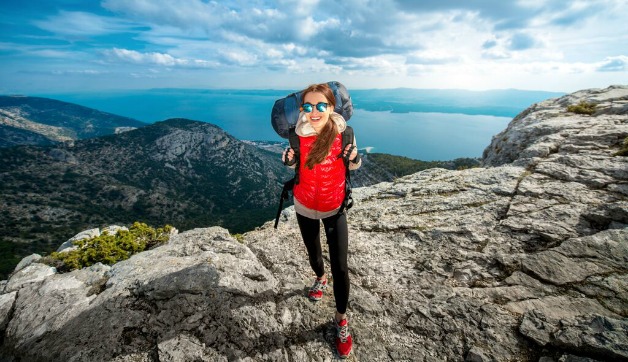
Support TFG by using the links in our articles to shop. We receive a small commission (at no extra cost to you) so we can continue to create helpful free content. We earn from qualifying purchases made to the featured retailers. Thank you, we appreciate your support!
Patagonia, Inca Trail, Salkantay – these are just a few of the famous treks you can go on in South America. If you decide to take on a South American trek, it’s important to be prepared. Here are 9 essentials for backpacking South America!
9 Essentials for Backpacking South America
Trekking in general quite an accomplishment! Between the physical stamina it takes to make it up and down a mountain and the preparation it takes to pack a backpack with all the essentials, very few people take on this feat. It’s even more challenging when you decide to do that multi-day trek in foreign, unknown territory. Here are a few essentials for backpacking South America to help you prepare for the challenge of a lifetime!
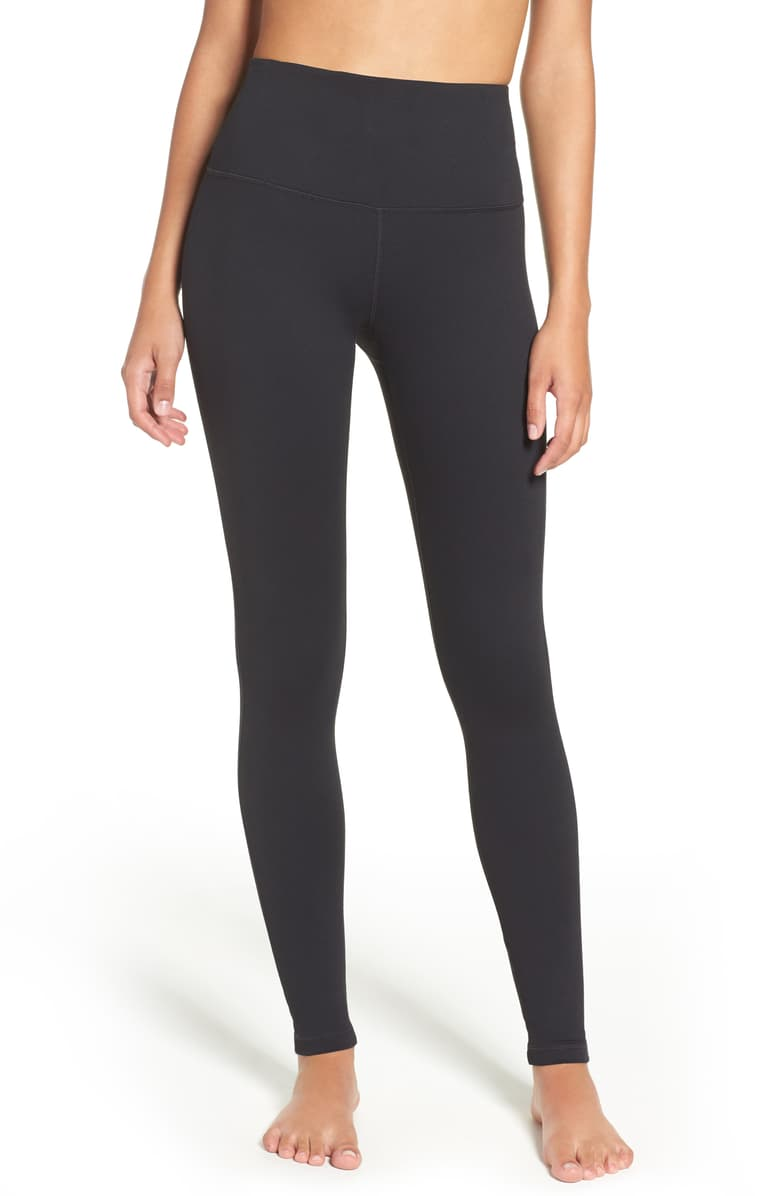
Zella Live In Leggings
Breathable, quick drying pants
Because you want to pack lightly, you’ll probably wear the same pair of pants throughout most of the hike. It sounds gross but you’ll quickly find out that there are worse things while you’re trekking. Quick-drying pants are a great investment because you can change out of them in the evening and the next morning, it’s not too difficult to wear them again. These pants are also essential if you encounter rain during any part of your trek.
Here are some of the most recommended convertible travel pants for women (that you might actually like)!

Chelsea28 Tank Top
Jersey Tank Tops
This is one of my favorite multi-tasking essentials for backpacking South America because I could wear by itself or later underneath a shirt or jacket. I found that if you need a little extra support, you can layer this jersey top with a good sports bra. Bring two so that one has a chance to dry while you’re wearing the other one. After you finish your journey, if you need a nice tank top to pair with shorts or a skirt, this is also the perfect piece.
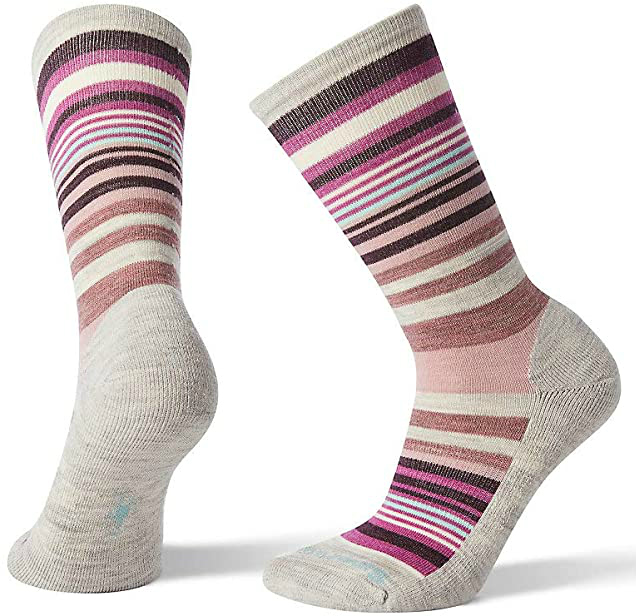
Smartwool Jovian Stripe Crew Socks
Multiple Pairs of Socks
Some hiking advice tells you to wear silk liners underneath socks so that you can wear them multiple times without washing. My advice: don’t even think of reusing socks while you’re on a trek – that’s just mean to your fellow hikers. Bring enough supportive but moisture wicking antibacterial socks to have a new pair for each day. In addition to preventing any weird smells, this will keep your feet from developing any fungal problems.

Women’s UA Tech™ Twist ½ Zip
Layering sweater
A zippered sweater is an easy layering piece that helps you stay comfortable as you trek through different climates. When I hiked the Inca Trail, I encountered super cold and windy, rainy, and dry and hot weather. I like a zippered sweater because there are times that I want a sweater but I want it opened instead of nothing at all. It helps me regulate my body temperature with the extreme weather the trail brings essentials for backpacking South America.
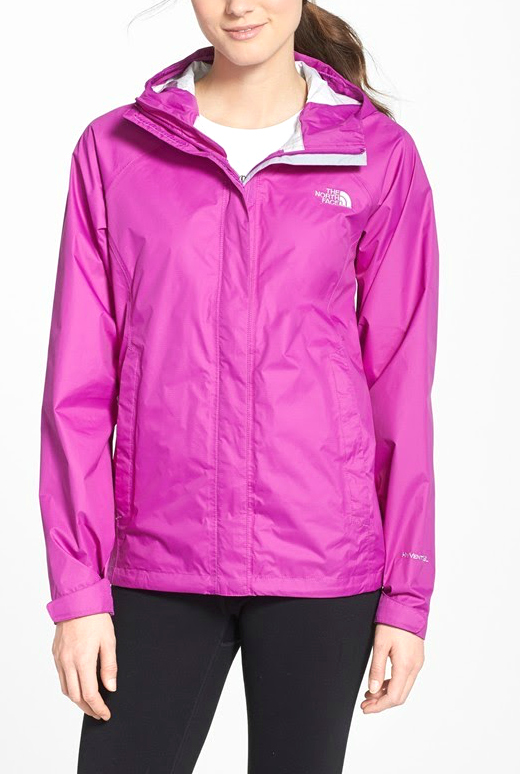
The North Face Women’s Venture Jacket
Lightweight rain jacket
Bring a lightweight rain jacket to use for both rain and extra warmth. Paired with the right layering sweater, it can provide more warmth than a heavy down jacket. Invest in a good brand that is both waterproof and breathable so that you don’t necessarily have to take it off to stay comfortable.
Here are more ideas on rain jackets for women !
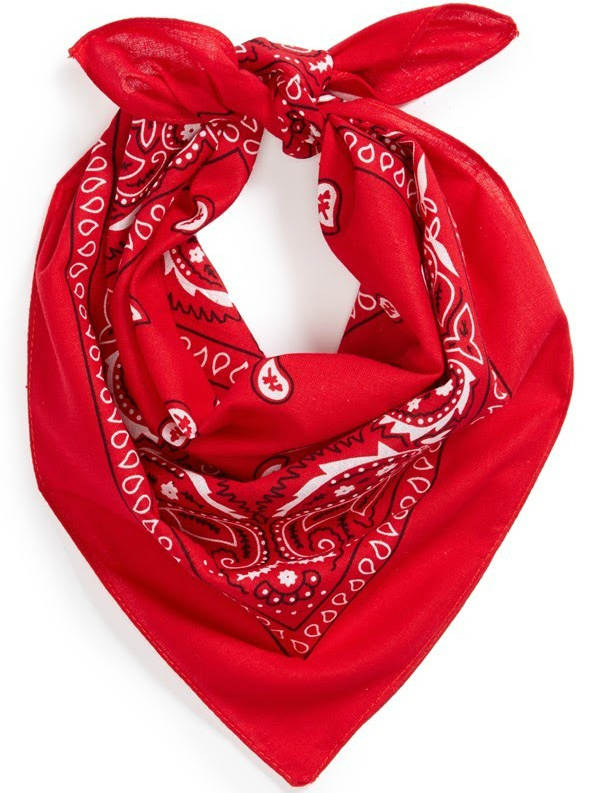
BUFF UV Multifunctional Headwear
A hat is a must have essential when backpacking South America but so is a bandana. I love a more versatile bandana like the Buff , which I can wear in multiple ways. It keeps the sweat from coming into my eyes. It helps to keep my neck warm if I need a lightweight scarf.
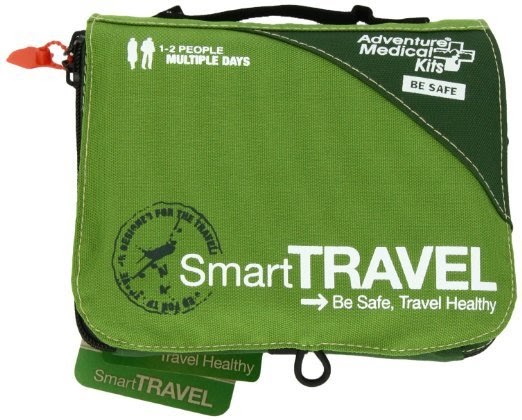
Adventure Medical Kits World Travel First Aid Kit
First Aid Kit
Before you leave home, stock up on all the medicinal basics and make sure you have enough bandages and medication (including anti-diarrheal). If you decide on a high altitude locale, make sure to bring altitude sickness medication if you’re not able to take the local herbal remedy.

Johnsons Baby Powder Travel Size
Dry shampoo or baby powder
Showers aren’t common when you’re trekking. You may find a cold shower at some campsites but by the time you get there, it might be late, cold, or crowded. Dry shampoo or baby powder are tiny, lightweight essentials for backpacking South America that’ll keep your hair from limping and being totally gross during the trek while also help keeping your fresh. Don’t forget the baby wipes!
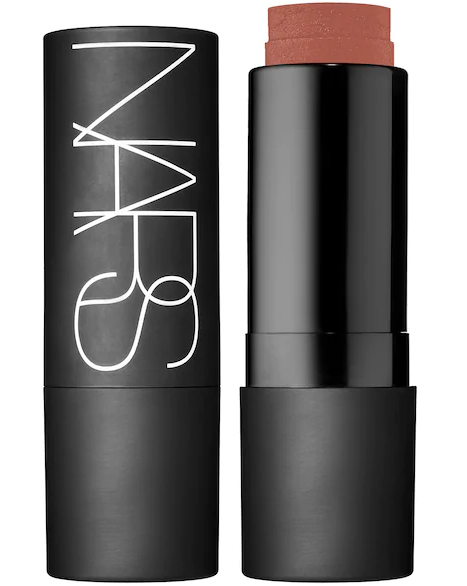
NARS The Multiple
Makeup blush stick
This versatile multi-makeup stick works as blush, eyeshadow, and lipstick – and you can use it all without a brush! While you may be wary about wearing the same color all over your face, you’ll love the fact that it’s a lightweight stick. While the trek may be about the journey, you still want to look good when you arrive at your destination (as many girls find out at the end)!
What are your essentials for backpacking South America? Share below!
For more South America packing tips, please read:
• The Ultimate Women’s Backpacking South America Guide • 6 Packing Tips for Traveling to South America • Central America Ultra-Minimalist Travel Packing List • Packing List for Peru, Bolivia, and Ecuador
Suggested travel resources:
- Lonely Planet Latin American Spanish Phrasebook & Dictionary
We hope you liked these 9 essentials for backpacking South America. Don’t forget to share the love on Facebook, Twitter, and Pinterest. Thanks for reading!
Author Bio: Josie Reim has been traveling the world with a carry-on luggage since 1995. In that time, she has visited 18 countries, including twelve visits to the Philippines and a month-long stay in Brazil. She loves immersing herself in the local culture when she travels, including learning the language and seeking out local wildlife. Packing is a way of life for Josie as she and her husband move their home around the United States often.
I am beginning to make plans to hike the trail in April. I have read everywhere about the variability of the temperatures but am not clear on what the expected lows and highs are (it seems most of the data is from Cusco). I want to make sure that I bring the best option for the cold end of the spectrum, with multiple layers to peel off but no one like to freeze. Would a fleece or a down jacket (like the North Face Thermoball) be the best option for warmth but also packability?
Hi Stefanie, thanks for your question! For Machu Picchu, have you seen this post: https://travelfashiongirl.com/inca-trail-and-machu-picchu-tours-packing-list/
A fleece or down jacket such as the Thermoball would be perfect. Remember the key to not freezing is in your layers: https://travelfashiongirl.com/best-thermal-underwear-for-women/ While I did use thermals and a fleece in July (winter) I didn’t find the need for thermals when i did the trek in Feb. If you’re worried about the cold then I would pack a set of merino wool thermals plus fleece.
Hope this helps!
Submit a Comment Cancel reply
Your email address will not be published. Required fields are marked *
Save my name, email, and website in this browser for the next time I comment.
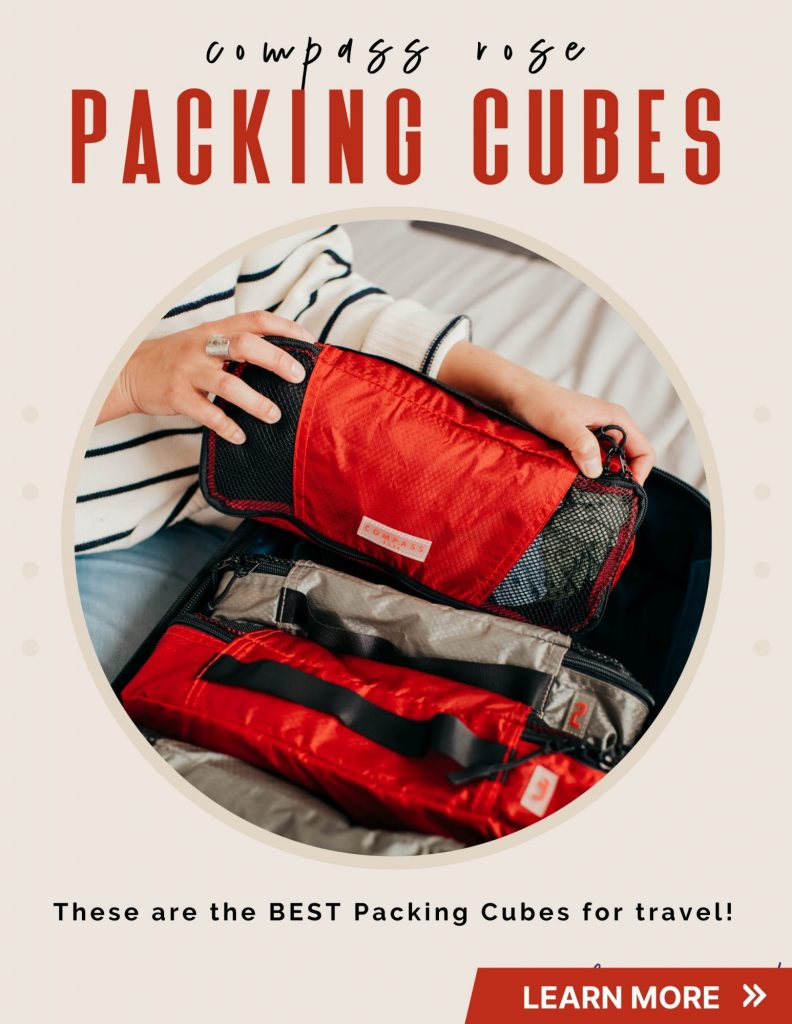

- Search 9379
- Search 33035

- South America Tips: 21 Essential Travel Tips [The Family Edition]
Like it? Share it!
Last Updated on September 13, 2023 by Ariana Svenson
Looking for the best South America tips? A trip to South America is an adventure filled with breathtaking landscapes, vibrant cultures, and unforgettable experiences. However, travelling to a foreign country or continent also comes with its set of challenges and considerations. From planning your itinerary to understanding the local customs, there are several aspects to keep in mind before and during your trip.
South America is a great place to travel with kids. South American people, in general, value family, and kids are loved. Unlike many Western cultures, which focus on time and personal comfort, South American cultures are much more relaxed.
They live more in the moment, and so if they see a cute kid, they will genuinely stop to have a chat or a play. They are generally likely to offer you a hand or try to help if they can.
![Machu Picchu with kids, Peru for kids, South America Tips: 21 Essential Travel Tips [The Family Editio Machu Picchu with kids, Peru for kids, South America Tips: 21 Essential Travel Tips [The Family Edition]](https://worldoftravelswithkids.com/wp-content/uploads/2023/08/machu-picchu-train-with-kids-5-1024x768.jpg)
This post may contain affiliate links, from which we would earn a small commission, at no extra cost to you. More info in my disclaimer .
![Machu Picchu with kids, Peru for kids, South America Tips: 21 Essential Travel Tips [The Family Editio South America Tips: 21 Essential Travel Tips [The Family Edition], Bogota Airport](https://worldoftravelswithkids.com/wp-content/uploads/2023/09/bogota-colombia-with-kids-6-1024x768.jpg)
South America Tips
Here are our essential South America tips to make your holiday as smooth and enjoyable as possible.
1. Planning Your Route and Itinerary
It’s advisable to have a general route planned, as travel between locations can be time-consuming. South America is a massive continent, after all. If you’re visiting somewhere like the Galapagos Islands or a trip across the Andes mountains, your route should be completely planned in advance due to limited flights and logistical considerations. If you are planning to take the bus; be profoundly honest with yourself: how will your child or children cope with a 9 or 10 hour bus ride. (Some kids will be ok – some not!)
A flexible itinerary across the amazing continent, with must-see destinations and a rough timeline, but leaving room for impromptu trips and local recommendations, is key. For example, plan to visit Machu Picchu and the Galapagos but leave space for unexpected discoveries. Read more about having the best family vacation in South America here.
Another thing that needs advance planning is definitely the Classic Inca Trail to Machu Picchu, which pre-pandemic would sell out six months in advance. In Peru in 2023, Machu Picchu tickets (e.g., even if you weren’t hiking) were selling out 4 – 6 weeks in advance – unheard of!
Make sure you also consider altitude sickness in areas of high altitude. Read about acclimating to altitude with kids here or discover what it’s like to visit Machu Picchu with kids here.

2. Travel Tip: Make a Child-Friendly Holiday Plan
Making an itinerary that has plenty of downtime where you can play with your kids should mean that everyone is happy and relaxed, and the kids have the chance to let off some steam.
One of my favorite cultural places of interaction is playgrounds where kids can see or experience different languages; and culture. If you really want your kids to learn about other cultures – take them to a playground. I firmly believe that young ones will learn way more there than in any museum!
My kids love to swim, so having a pool at the hotel is ALWAYS considered a treat for them. So, even if we’ve had a long, tiring travel day, they go and jump in the pool in the dark and their humor improves.
In short, you may not want to visit playgrounds or hang around the pool; but If everyone is happy and relaxed, then things will flow much better. In addition, from a safety perspective, if parents are not wrangling screaming kids and taking their eyes off the luggage is a win!
3. Vaccinations for South American Countries
Before heading to South America , ensuring you are up-to-date with routine vaccinations is important.
Some countries require specific vaccinations, like the Yellow Fever vaccine, before entry. Recommendations vary by country, but common vaccines include Hepatitis A, Typhoid, and sometimes Rabies, especially if you plan on spending time outdoors or with animals. Malaria prevention medication might also be advised for certain areas.
Here are the recommended sites to look at what vaccines you need:
- If you’re based in the UK, check UK health advice for the country you’re visiting .
- Visit this site if you’re based in the U.S .
- If you’re based in Australia, look at Passport Health Global .
4. Take Out a Copy of Everyone’s Passport
It is always recommended to take a copy of your passport while travelling. Your passport is the most important document you’ll carry while travelling abroad. Losing it can lead to a lot of hassles and delays. Hence, it’s always advisable to carry a photocopy of your passport and also a digital copy stored securely online or on a device you carry with you.
Carry the photocopy separately from your original passport so you still have a copy if you lose your bag (or it gets stolen). Showing a photocopy of your passport can be useful for identification purposes in non-official contexts, and the digital copy can be a lifesaver in case you lose your original and need to get a replacement from your embassy.
Remember: Also to leave a copy with a trusted person back home.
5. Only Take 1 Credit Card Out with You – But Bring 2
Make sure you have at least two debit/credit/travel cards, keeping one as a backup in case the other is stolen or lost
This way, you won’t find yourself stranded without any money.
6. Make Sure You Have Good Travel Insurance When Visiting South America
Although travel insurance is an initial expense, it can save you from incurring massive debts in case of unforeseen events. Medical emergencies are not the only reason to get insured; good insurance can protect you against things like flight delays, lost baggage or a stolen phone.
Ensure your insurance covers what you plan on doing during your trip. Remember, it’s always better to be safe than sorry.
7. Check Your Government Travel Advice
Travel advisories provide up-to-date information on safety and security, local laws and customs, entry requirements, health conditions, and other important details that might affect your travel plans. Governments regularly update travel advisories based on the current situation in a country, including political instability, natural disasters, or outbreaks of diseases.
Advisories will help you make informed decisions about your travel plans and also help you prepare for any potential risks or challenges that you may encounter during your trip. If you can, sign up for email alerts for the country you’re travelling to.
You can read our guide to the safest countries in South America here.
8. Tourist Visas for Your South America Trip
Getting the correct tourist visa or visa for your South American trip is essential for a smooth experience. When you travel to South America, the requirements for visas vary from country to country and also depend on your nationality. Some other countries also offer visa-on-arrival or do not require a visa for certain nationalities, while others necessitate applying in advance – don’t wait until the last minute to find this out.
Check the requirements for each country you plan to visit well ahead of your trip, ESPECIALLY if you plan to visit multiple countries. Some countries, like Brazil, have started offering e-visas, which can be applied online.
9. ATM’s, Withdrawal Fees and Exchange Rates
ATM fees can add up quickly when you’re abroad for an extended period. Most banks in South America charge withdrawal fees, even if you have a travel card.
Here are some essential tips:
- Research Banks : Before you travel, research the banks in the area you’ll be visiting. Find out which ones allow the amounts when withdrawing money and charge the lowest fees.
- Maximize Each Withdrawal : Unless you’re absolutely certain you won’t need the money, withdraw the maximum amount allowed each time to minimize the number of transactions and, therefore, the total fees. I didn’t do this on my last trip and was paying $10 – $15 in fees every time I made a withdrawal. What a newbie mistake that I paid for dearly.
- Check Exchange Rates : Always check the exchange rate earlier in the day to avoid being ripped off when exchanging leftover currency at land borders.
- Use Reputable ATMs : Stick to ATMs located inside banks or in well-lit, busy areas to minimize the risk of card skimming or other fraud.
- Notify Your Bank : Let your bank know you’ll be travelling abroad to avoid having your card blocked for suspicious activity. This is especially important if you plan to make large withdrawals.
10. Tip for Travelling South America: Learn the Language
Learning even a few phrases in the local language can make a big difference to your trip. Most countries in South America are Spanish-speaking countries, except for Brazil, where Portuguese is the official language. Learning the basics is important. Knowing a few phrases will also help you to connect with the locals better.
Learning a new language before a trip is a great way for kids to learn about a new culture. It also helps them interact with locals during the trip, boosting their confidence.
![South America Tips: 21 Essential Travel Tips [The Family Edition], South America with kids, traveling with kids South America Tips: 21 Essential Travel Tips [The Family Edition], South America with kids, traveling with kids](https://worldoftravelswithkids.com/wp-content/uploads/2023/09/bogota-colombia-with-kids-5-1024x768.jpg)
11. One of the Best South America Tips: Try Not to Let Your Kids Get Into a Taxi Before You
In South America, you should know that a taxi could drive off. When I was last in Bogota, Colombia, a taxi drove off with my 4.5-year-old and 9-year-old ALONE in the taxi. My eldest daughter was with me in another taxi, and my scream of horror was so high-pitched I pierced her ears. Taxi A did call Taxi B and it turns out it was must a miscommunication and I was reunited with my kids within 4 minutes!
After I posted on Instagram about the experience other parents living or travelling in South America shared that they try not to let their kids get into a taxi before them!
12. Only Get Official Taxis
Using only official taxis reduces the risk of overcharging, theft, or other potentially dangerous situations. Unofficial taxis might offer lower rates but often need proper licensing and insurance and might have tampered meters.
Official taxis in major cities are usually registered with the city, have visible identification, and often can be booked via a hotel, restaurant, or a reliable app. With the likes of Uber these days, you are going to be much safer in general. We used Uber a lot in Lima, and the taxis came quickly and for a reasonable price.
I am familiar with Cusco, and taxis are everywhere. You can pick one up in a minute, so we didn’t use Uber.
13. Backup Your Photos
Losing your photos can be heartbreaking, whether it’s due to a technical error or theft. Make a habit of backing up your photos daily on a cloud service or an external device to ensure you have a safe copy of your memories.
Whether you have insurance or not, this is one of the precautions you should take to minimize the impact of loss or theft.
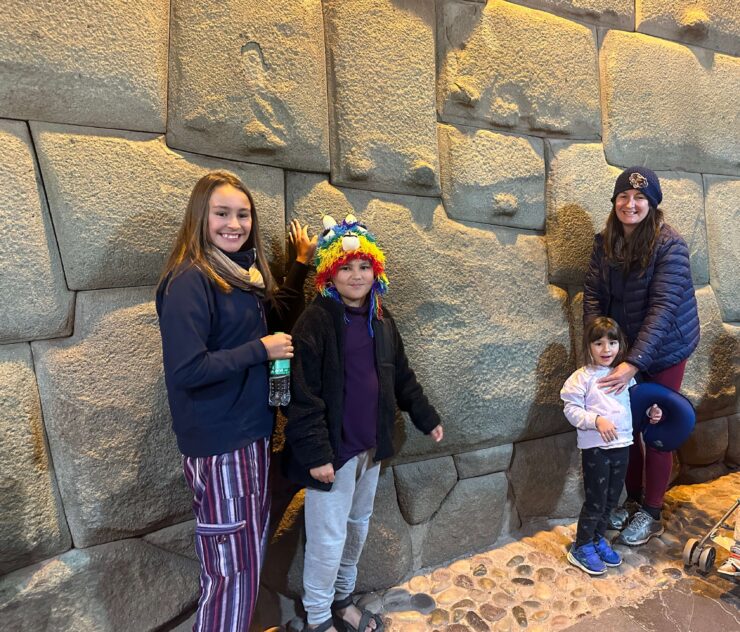
14. Be Aware, Not Paranoid
If you have ever done a defensive driving course, then you will know that you are recommended to be constantly on the lookout for potential problems by scanning the road ahead. In a way, that’s my main recommendation when travelling to South America.
When you are at transition points, like arriving at airports or hotels, be aware of what you are doing and scanning for issues. My partner Norman grew up in a barrio (neighborhood) in Nicaragua, and he always looked out for potential problems like it was ingrained into his way of looking at the world.
This is the kind of vigilance you need when on holiday – and also a lot of common sense. Don’t leave your handbag hanging over a chair or your phone sitting on a table in plain sight. Pack them away.

15. Important South America Tips: Be Aware of Scams
Scams do exist… and it’s being alert to them that matters. There are a lot of scams in South America, and the majority of them work around “weird things happening” that divert your attention from your belongings.
This is when your intuition comes into play. If something feels off or odd – don’t hang around to see what happens – get out of there.
One popular scam is when one person splatters a liquid resembling bird droppings on tourists, and another person offers to help clean it, using the distraction to pickpocket the victim. If something lands on you, it’s best to ignore it and walk away without accepting help from strangers.

16. Eat From the “Menu del Día” at Lunchtime
Looking out for the ‘Menu del Dia’ is definitely one of the best South America travel tips. Eating cheaply is one of the best ways to save money while travelling. In South America, many restaurants offer a “menu del dia”, translating to “menu of the day” or “lunchtime menu”. This will get you a large portion for a value price.
In Peru, it consists of a soup, main course and dessert, and a drink for about $2 – $4 … (back in the day, it used to be just $1).
17. Toilet Paper Goes in the Trash, Not in the Toilet
Another essential South America tip is that the plumbing systems are not equipped to handle toilet paper. The pipes are narrower, and flushing paper can lead to blockages. This is why you will often find a small trash bin next to the toilet intended for your used toilet paper.
It is important to respect this practice, even if it feels odd at first. Not only is it crucial for maintaining the plumbing, but it is also a part of the local culture and customs. You’ll find signs in many places telling you NOT to put toilet paper down the toilet.
Don’t forget you have to tell kids a million times. We had toilet blockages in our hotel in Lima (twice) and our Airbnb in Cusco (twice) due to one kid or another forgetting and putting paper in. Toilets in South America are Super temperamental and do not cope at all … be warned!
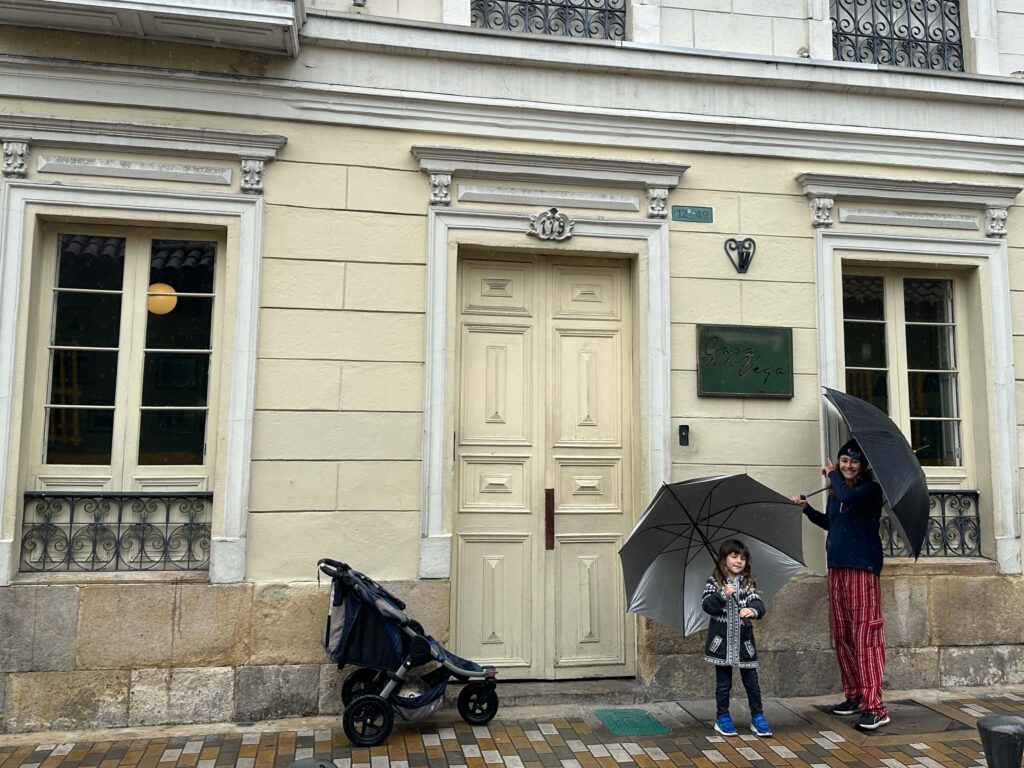
18. Tip for Travelling in South America: Paying for Public Toilets is Normal
In many South American countries, it’s normal to have to pay a small fee to a bathroom attendant to use public toilets. These fees usually go towards maintenance and cleaning.
The charge is usually minimal, often less than a dollar, but it is a customary practice expected from locals and tourists.
Be Warned: Don’t expect to find toilet paper even once you’ve paid to use the toilet. You can get some from the bathroom attendant or near the sinks, but there might not be any. It’s a good idea to always carry a small pack of tissues with you. Also, consider carrying hand sanitizer around with you, as there may be no soap.
19. Don’t Drink the Tap Water
Avoid the tap water across South America, or you could end up getting ill. This also applies to brushing your teeth or using ice in your drinks. However, bottled water is available everywhere.
Many hotels and reputable travel companies now carry water dispensers in cars or in foyers. Or – simply ask for more water. That way, we were able to refill our bottles most of the time and avoid buying plastic (most of the time).
20. Showers Can Be Unpredictable
Whether it’s scalding hot or icy cold, the water temperature can fluctuate drastically.
A steady flow of hot water can feel like a luxury, as it’s not always guaranteed. This is because water pressure tends to be low in many areas, which can make showering challenging. Make sure you keep an eye on the temperature when the kids are showering.
21. Things are Always Changing, So Make Sure You Check Things Out Yourself
Don’t rely on my advice for knowing what there is to see and do … things open, things close.
I arrived in Lima in 2023 with a loose plan in my mind about what we would be doing based on other trips. Guess what? Three of my main things were either closed on the days we were there OR permanently closed because of the pandemic. So I can strongly recommend always checking opening times yourself or asking the front desk at your hotel to do it.
For example, I was out in Lima with my god-daughter, chatting about what we might do that afternoon. Because she is an amazingly organized young lady, she picked up her phone and called the museum we were talking about to make sure they were, in fact, open and what the entry fees were.
Read more great tips about visiting Lima with kids here .
The Verdict – South America Travel Tips
Hopefully, this South America guide has given you lots of good tips! By planning ahead when you visit South America, being aware of potential challenges, and staying flexible, you can have a memorable adventure everyone will remember for years to come.
Take the advice you read with a grain of salt and use it as a starting point for your own research. What worked for our family may not work for yours. South America has incredible diversity, and things vary from country to country. So, make sure you relook at these tips when crossing borders.
The situation in any given location can change rapidly due to various factors like political instability, natural disasters, or even the opening and closing of tourist attractions. Always double-check information and make decisions based on the most current data available. Trust your instincts, and don’t be afraid to change your plans if necessary.
Like our South America tips, you may also like:
Facts About South America
Like It> Pin It> South America Tips: 21 Essential Travel Tips [The Family Edition]
![essentials for travelling in south america South America Tips: 21 Essential Travel Tips [The Family Edition]](https://worldoftravelswithkids.com/wp-content/uploads/2023/09/South-America-Tips-21-Essential-Travel-Tips-The-Family-Edition-2-1-200x300.png)
Travels with Kids
Add comment, cancel reply, you may also like.
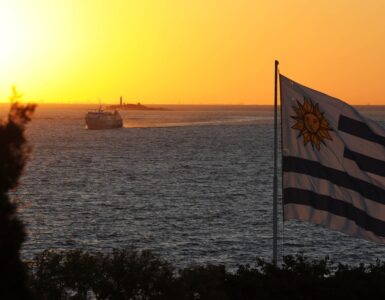
Safety in South America in 2024: The 7 Safest Countries for Family Vacations + Advice
So you are wondering about safety in South America? If you’re planning a family trip to South America but are hesitant about security, you’ve come to the right place. Based on U.S. travel advice and the...

Interesting Facts about the Amazon River for Kids
Get ready for some truly AMAZON facts about the Amazon River for kids! That’s right when we are talking about the mighty Amazon River we are talking about the widest, largest volume, and even possibly longest river on...

VERY Interesting Sloth Facts For Kids – Learning Made FUN!
Sloths have hit the big time in popular culture. Everywhere you look there are sloths and more sloths. On social media, and in toy stores. In fact, if you have kids there is a good chance you’ve bought a toy sloth in...
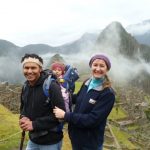
Hi! We are a multicultural family from Peru, Nicaragua & Australia. We believe adventures can be global – and local – and are one part of our sustainable lifestyle, and raising children who are global eco-citizens.
Recent Posts
- Best Travel Backpack for Moms – choosing a Travel Bag for Moms – 2024
- 34 Awesome Fun Facts about Asia for Kids
- The Amazon with Kids; A Refugio Amazonas Review
- How to Plan an Amazing Peru Family Holiday
- Tips for Families Flying and Travelling With Autistic Child
Advertising & Affiliates
Advertising is used throughout this site. Working with affiliated partners allows us to earn a small commission on any purchases or bookings you may make at NO EXTRA COST to you.
Worldoftravels.com is a participant in Booking.com & Amazon Services LLC Associates Program, affiliate advertising programs designed to provide a means for sites to earn advertising fees by advertising and linking to them.
PRIVACY POLICY & TERMS OF USE
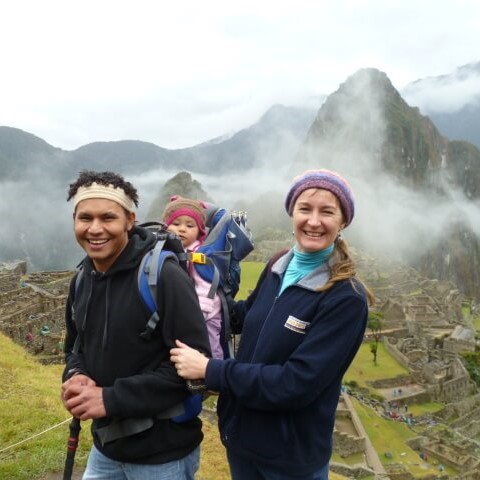
Copyright - World of Travels with Kids;
- Best Family Travel
- Travel Inspiration
- Family Vacation Planner services
- Personal Stories
- Work with Us
- Eastern Australia
- Western Australia
- South Australia
- Places to Stay
- Kids / Tweens
- Beach & water sports
- Hiking & camping
- Hotel Reviews
- Packing advice
- Asia for kids
- Australia for kids
- Latin & South America for kids
- Oceania for kids
The best list of vanlife essentials in South America
- January 31, 2024
Due to its vastness, South America is perfect for exploration by car . If you are travelling for a long period in South America, buying your own car can be a valable option. In our blogpost on how to buy a car in Chile , we provide detailed information on how to buy your own car in South America.
When you are travelling with a car or a campervan in South America, you are in for an adventurous cross-country road trip with stunning landscapes, friendly people and lifechanging experiences! But vanlife is also a minimalist lifestyle where you live in a very tiny space. So sometimes it is difficult to decide what to take with you. Below, we created a list of vanlife essentials in South America to help you plan your trip through South America! This list is specifically designed for travelling with a campervan. Therefore we will not elaborate on standard travel equipment like for example type of clothes, shoes, hiking gear, …
Table of Contents
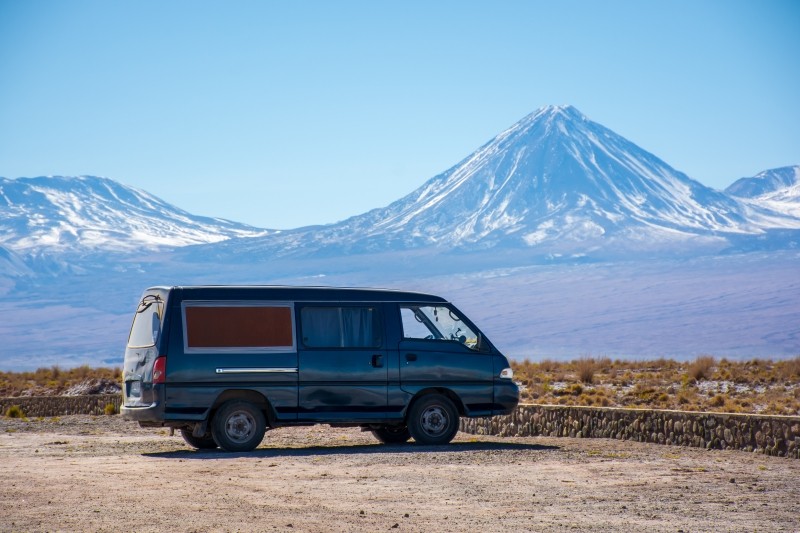
Some of the links on this blog are affiliate links. This means if you click on a link and purchase, we receive a small commission at no additional cost to you. The affiliate links concern only products and services we appreciated highly and trust. This means the views and opinions expressed in this post are purely our own. For more information, read our privacy and cookie policy .
Essential paperworks for your campervan in South America
Before you start your road trip, make sure you have these essentials with you:
- Your (international) driving licence and registration of the car . Keep in mind that to cross certain borders, it will be important that the car is registered on your name.
- Your passport that you will need to cross the borders. Always store your passport safely and make copies in case your passport gets lost or stolen.
- Insurance papers. Be aware that certain countries in South America require that you take car insurance in their country upon arrival in the country. We arrived in Peru on a Sunday, with insurance companies closed. Unfortunately, that day the police pulled us apart and we got a fine for not having the correct insurance.
Essential apps for your roadtrip
App Park4Night . This app is a perfect companion for your roadtrip. It has a huge database with campsites and spots were overnight camping is allowed. The community behind Park4Night is very active, so plenty of great spots to choose from.
App iOverlander . Similar as Park4Night, the app iOverlander has proven to be a very useful app for travellers. The app is designed for overlanders and campers. It gives an overview of all places that are relevant for those who travel with a car or campervan.
Maps.me . This app allows you to download maps of certain regions when wifi is available. When there is no internet connection this app allows you to navigate without an internet connection and mark places for later use.
Vanlife essentials for road trip emergencies
Even though you have a trustworthy vehicle, you should be prepared for anything and everything during your roadtrip through South America.
If you are heading to a less-populated area or off the beaten track, expect to drive on dirt and sandy roads with no other people around. It would be unfortunate to get stuck in these places, so be prepared for the two most common issues: a dead battery and a flat tire.
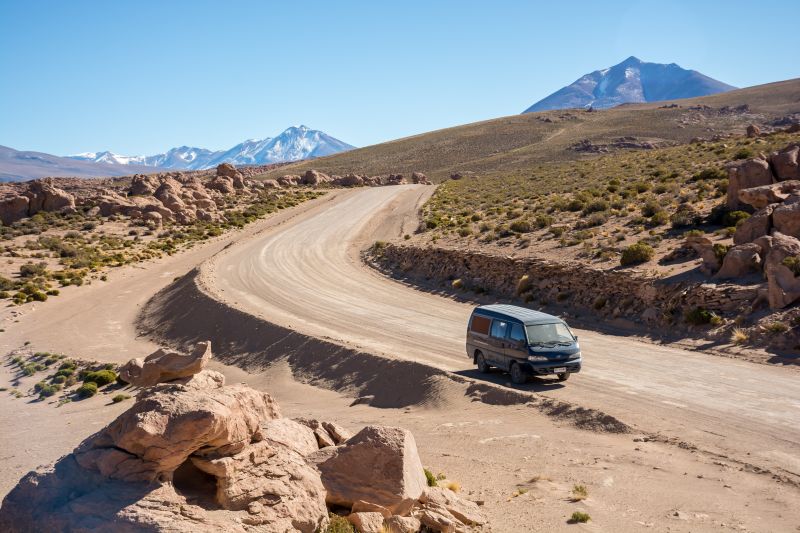
A dead battery can happen every moment, just by forgetting to put out a light or the battery life deteriorating over time. So besides a pair of jumper cables , it can be worthwhile to take an emergency car battery jump starter with you.
Regarding tires, you should always carry at least one full-size spare tire with you. A hydraulic car jack will lift your camper van off the ground with ease. But it can also be worthwhile to bring a fix-a-flat for emergency situations. If you got stuck in sand, lowering the tire pressure can be the solution. In that case, you afterwards have to pressure the tires back up, and a tire inflator then comes in handy. And a shovel to dig you out of the sand also belongs in the list of vanlife essentials in South America.
Let’s hope it won’t happen to you, but a campervan can set on fire. We suggest to have a fire extinguisher at all times with you. If you cook inside your van, we highly recommend to have a carbon monoxide detector with you to warn you in case of a possible danger of CO poisoning.
A final essential for road trip emergencies is a first aid kit .
Vanlife essentials for electronics
Dependent on the car you have at your disposal, the car will have an extra battery (a so-called household battery) that is charged via the main battery of your car or via solar panels. However, if your car has no extra battery, this shouldn’t be a problem either. To charge your electronic equipment, you can bring a rechargeable battery-powered generator like a Jackery power station and an accompanying solar panel.
Another item we use a lot during our travels is a wireless modem. You just insert a SIM-card and you are ready to connect your devices to the internet.
What you take with you regarding electronic equipment depends on the needs you have:
- A laptop and charger
- A smartphone and charger
- Equipment for photography of videography. We are huge fans of drone shots and the next time we travel to South America, we’ll definitely take our DJI mini 2 with us.
- A tripod for making photos of the starry sky or to light paint in the desert
- A headlamp when you have to go outside when it is dark.
Sleeping essentials
Your van will be your home on the road, so it’s definitely worth to make a comfy space of it.
We recommend to take comfy pillows with you and a warm duvet. In case the evenings are getting really cold an additional fleece or flannel blanket can give you that extra comfort. Note that in South America they sell blankets from Alpaca wool which are really warm and comfortable. Another thing that is used often by vanlifers in South America is a hot water bottle .
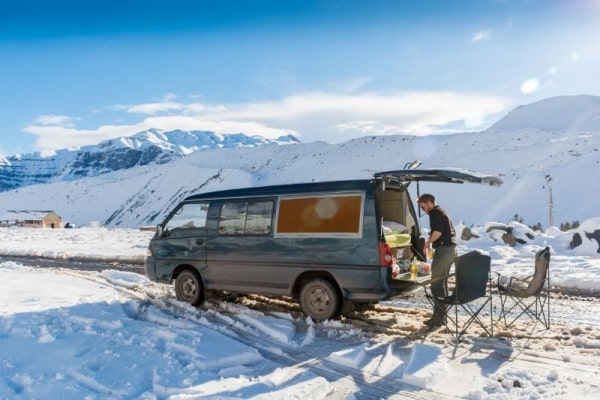
If you are a light sleeper, ear plugs and a sleeping mask may come in handy.
To make your bedroom/living space a more home like feeling, it can be worth to take some extra throw pillows with you, that you can also use to sit on outside or to support your back when sitting on the bed.
What us made really feel at home were the fairy lights above our bed. They functioned as our light in the van in the evening. As they are battery powered, we were sure we didn’t drain our battery.
Kitchen essentials
Being able to prepare food in the middle of magnificent landscapes and to have dinner while soaking up the beauty of nature is for us one of the best aspects of vanlife.
Water containers are a must-have when camping off-grid. Containers that have a tap make it easy to use them for drinking water. We recommend to use square containers because they take up the least amount of space.
A cooking stove that works on propane. This cooking stove has two burners, which is sufficient for us to prepare a healthy meal. Wind-blocking panels are a must-have in certain areas in South America. Don’t forget to bring a lighter with you, not only for cooking but also to make a campfire.
A compact water boiler to make coffee, tea or cook something simple. The Jetboil Flash boils 1 L of water in 100 seconds. Perfect when the weather is not ideal to cook outside or to take with you during a hike.
One of the best things we had with us during our travels through South America was a collapsible toaster . This allowed us to eat bread that was already a couple days old.
A portable cooler bag . Although it can be cold in South-America, it can also be very hot. To keep your food (and drinks) refrigerated, a portable cooler bag can be a good solution if you don’t have a 12V fridge.
Pots and pans. When we cook, we use a deep pan that we also can use as an improvised wok. Next to a pan, we use one medium-sized pot and a kettle .
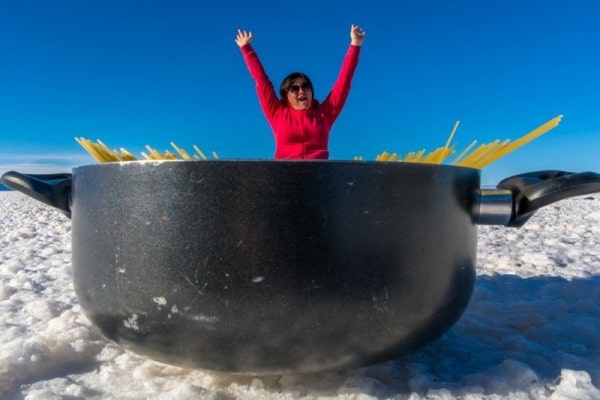
Plates, bowls and mugs . During your travels through South America, you will drive on many dirt roads with plenty of potholes. Ceramic tableware is therefore a big no and we recommend to use plates and bowls that don’t break easily. We especially like enamel tableware instead of plastic bowls and plates.
Cooking utensils like a spatula and a soup spoon
A lifestraw water bottle is not only a vanlife essential, but it’s an essential item for everyone who enjoys the outdoors. They filter the dirtiest water in clean water.
South America has some excellent wines. With these silicon wine glasses you can enjoy wine (or other drinks) wherever you want. As these are foldable, these are also excellent to take with you in a backpack.
To keep your kitchen essentials clean, don’t forget to take kitchen towels and dish rags with you. And of course a biodegradable dish detergent
And most importantly, good chairs and a foldable table are essential in South-America to sit down and watch the magnificent landscapes.
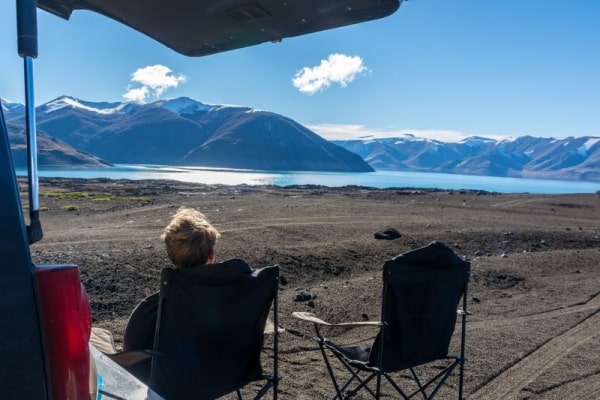
Cleaning essentials
Keeping your van clean.
When travelling through South America, expect dirt roads! A lot of dirt roads! So be prepared to have a lot of sand and dust coming into your van. To keep our van clean, we took a brush and dustpan , dust cloths and cleaning spray with us. To remove dust from more difficult places, we recommend dust cleaning gel .
Packing cubes can help you to keep everything in your van organized. It is a small space, so keeping it organized is key!
Keeping yourself clean
But of course, it is also important to keep yourself clean during your travels. Below are the most important hygienic essentials we take with us:
- A collapsible tub is not only an excellent tool to do your dishes but also ideal to do a handwash.
- Biodegradable laundry detergent and a laundry bag . We definitely recommend a laundry bag that is sealable. A van is a small space and the last thing you want is to smell your smelly socks the entire day! A washing line and pegs are also very helpful when doing your laundry on the road.
- A portable pressure shower , biodegradable soap and shampoo and microfiber towels (you want towels that dry fast in your van)
- In case you can’t shower, we highly recommend to take wet wipes with you.
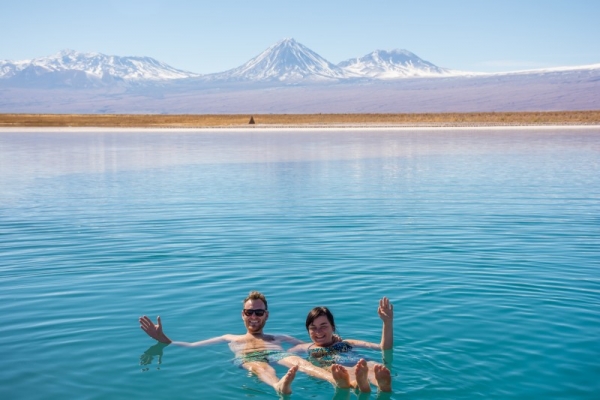
Quick start your holiday with the help of our trusted tools These are the websites we highly recommend to plan your next trip. We use them all the time to save money and travel freely! Did you know that by purchasing through our links, you support us at no additional cost. Thank you for your support. ♥️ Find hotels: via booking.com Find a rental car: via discovercars.com Find cheap flights: via skyscanner.com Book tours & attractions: via getyourguide.com Book a bus / train / transfer: via omio.com —
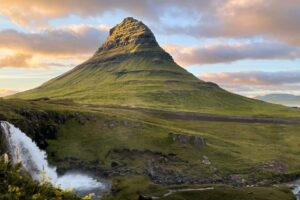
The best itinerary for 2 weeks in Iceland
- September 25, 2023

Traveling with a campervan in Iceland – our best advice and tips
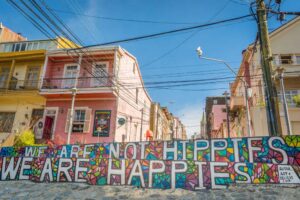
4 awesome things you can only see in Valparaiso

Passing Thru Travel
Solo Adventure: 17 Thrilling Destinations in South America 2024
Posted: March 6, 2024 | Last updated: March 6, 2024

Embarking on a solo journey through South America can be a transformative experience, offering a blend of rich cultures, breathtaking landscapes, and vibrant cities. This guide will help you navigate the continent safely and enjoyably, providing essential tips for solo travelers seeking to explore South America’s diverse offerings.

1. Machu Picchu, Peru
Machu Picchu, the ancient Incan city set high in the Andes, is a must-visit for any solo traveler in South America. The journey to Machu Picchu, whether by train or through a multi-day trek like the Inca Trail, is as remarkable as the destination.
The site offers an extraordinary insight into Incan history and stunning panoramic views. For solo travelers, it’s a chance to join group tours where you can meet like-minded adventurers.
Insider’s Tip: Book your Inca Trail trek well in advance, as permits are limited and sell out quickly.
When to Travel: The dry season from May to October is the best time to visit, with clearer skies and less rain.
How to Get There: Fly into Cusco from Lima, then take a train or join a trekking group to Machu Picchu.
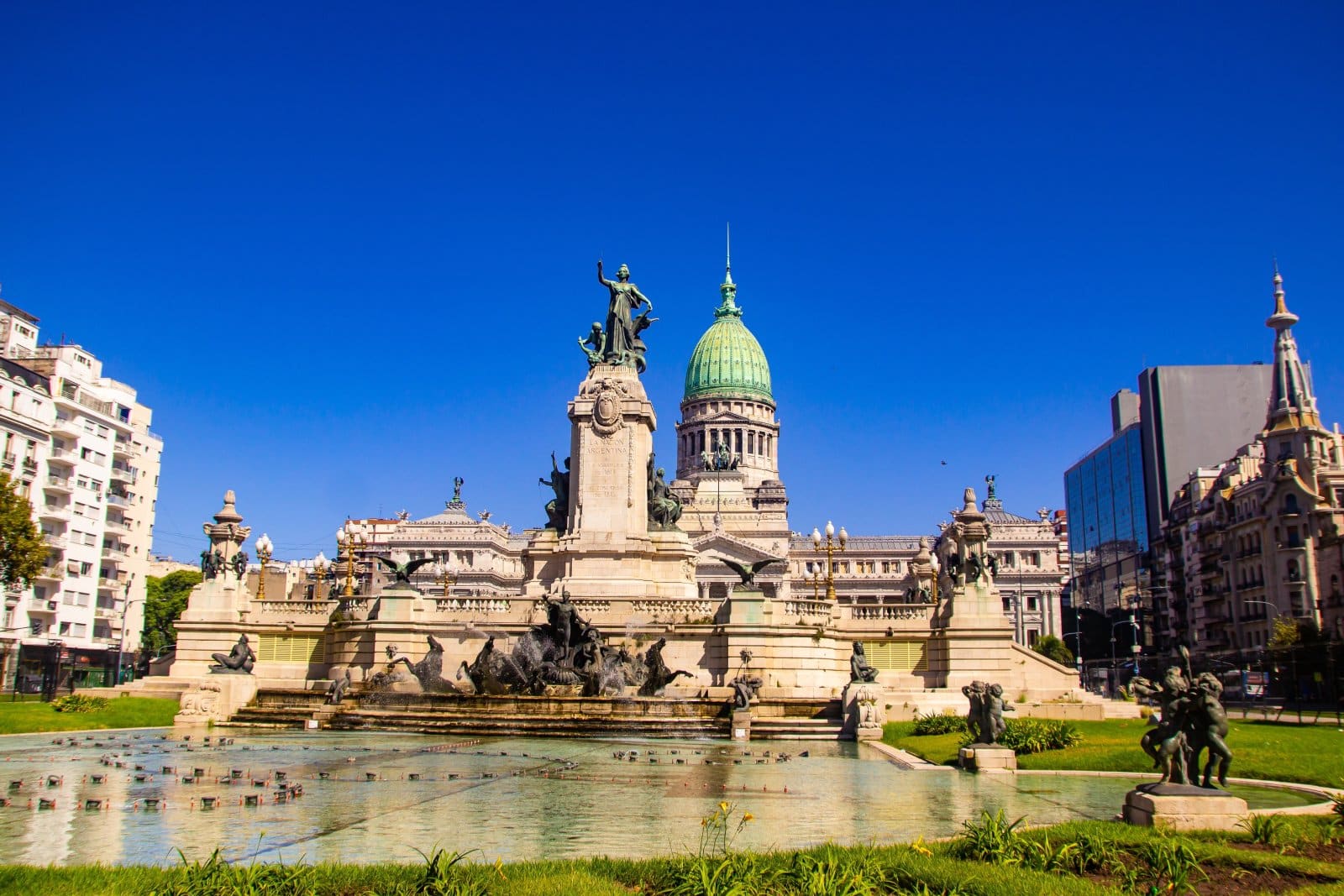
2. Buenos Aires, Argentina
Buenos Aires, known as the “Paris of South America,” is a city that captivates solo travelers with its European charm and Latin flair. Explore the city’s diverse neighborhoods, from the colorful houses of La Boca to the elegant streets of Recoleta. The city’s vibrant cultural scene, with tango shows, bustling cafes, and rich history, makes it an ideal destination for those traveling alone.
Insider’s Tip: Take a group tango lesson to immerse yourself in Argentina’s iconic dance and meet new people.
When to Travel: Visit in the fall (March to May) or spring (September to November) for pleasant weather and fewer tourists.
How to Get There: Buenos Aires is well-connected by international flights to its two main airports, Ezeiza and Aeroparque.
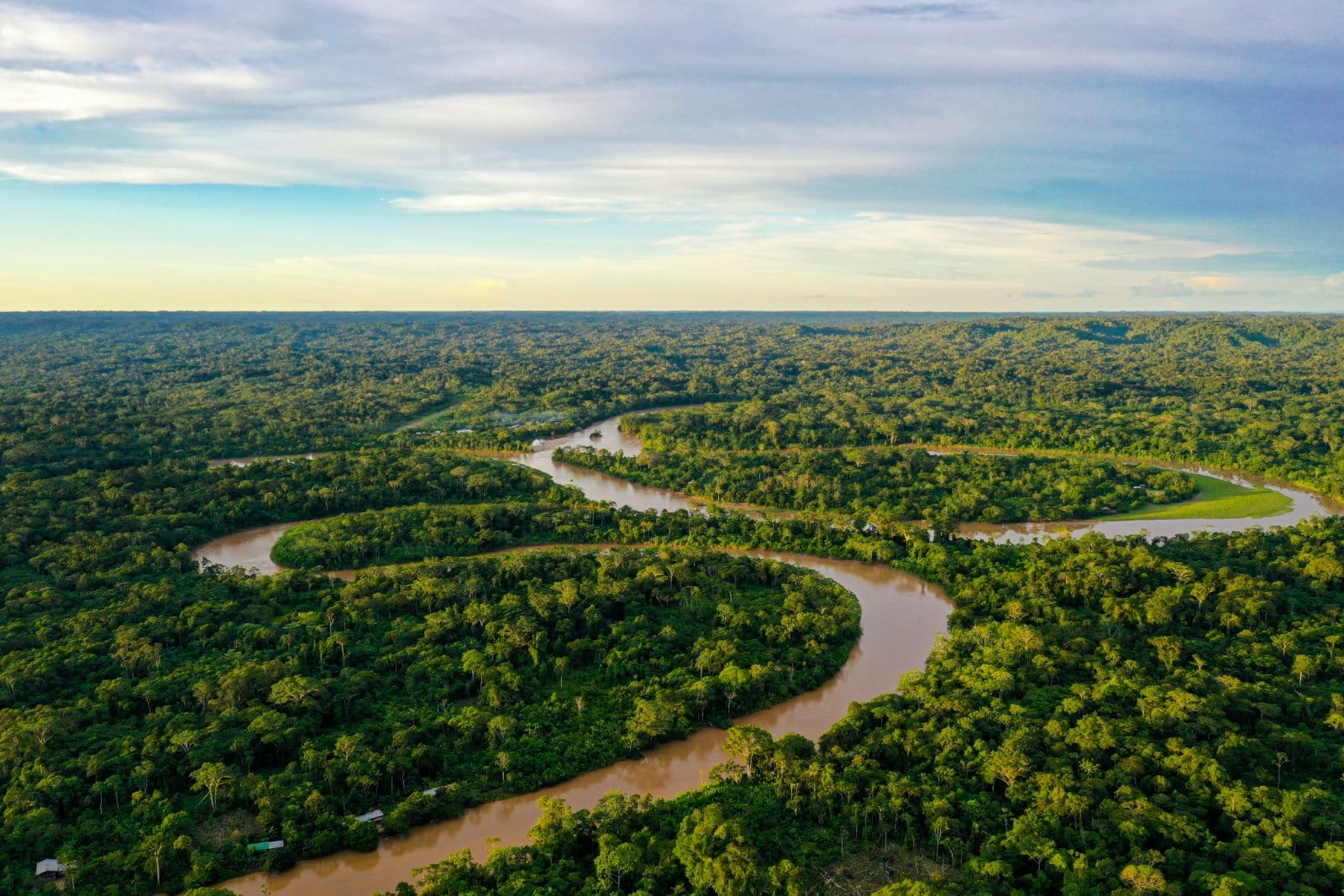
3. The Amazon Rainforest
The Amazon Rainforest, spanning across several South American countries, offers solo travelers an unforgettable adventure into the world’s largest tropical rainforest. Join guided tours to explore the diverse ecosystem, spot exotic wildlife, and learn about indigenous cultures. The Amazon is not just a destination; it’s an experience that connects you with nature on a profound level.
Insider’s Tip: Choose eco-friendly tours that support conservation efforts and respect local communities.
When to Travel: The dry season from June to October is ideal for wildlife spotting and fewer mosquitoes.
How to Get There: Access the Amazon from gateway cities like Manaus in Brazil, Quito in Ecuador, or Iquitos in Peru.
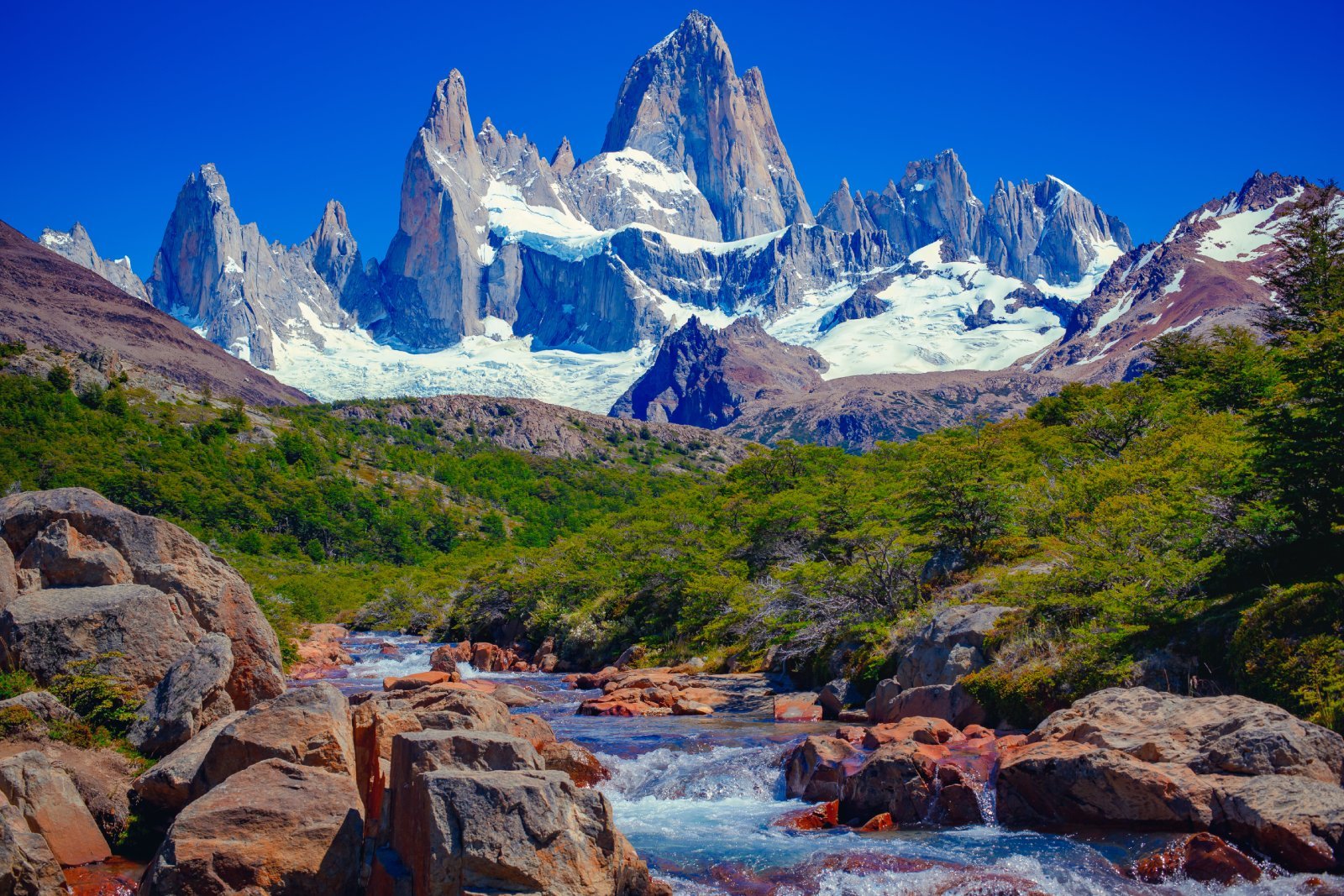
4. Patagonia, Chile and Argentina
Patagonia, straddling Chile and Argentina, is a dream destination for solo hikers. Its dramatic landscapes of glaciers, mountains, and lakes offer some of the most spectacular trekking opportunities in the world. National parks like Torres del Paine in Chile and Los Glaciares in Argentina are perfect for joining group hikes and connecting with fellow travelers.
Insider’s Tip: Consider staying in refugios or shared lodges to meet other solo hikers.
When to Travel: The Southern Hemisphere’s summer months, from November to March, offer the best conditions for hiking.
How to Get There: Fly into Punta Arenas for Chilean Patagonia or El Calafate for Argentine Patagonia, then travel by bus or car to the national parks.
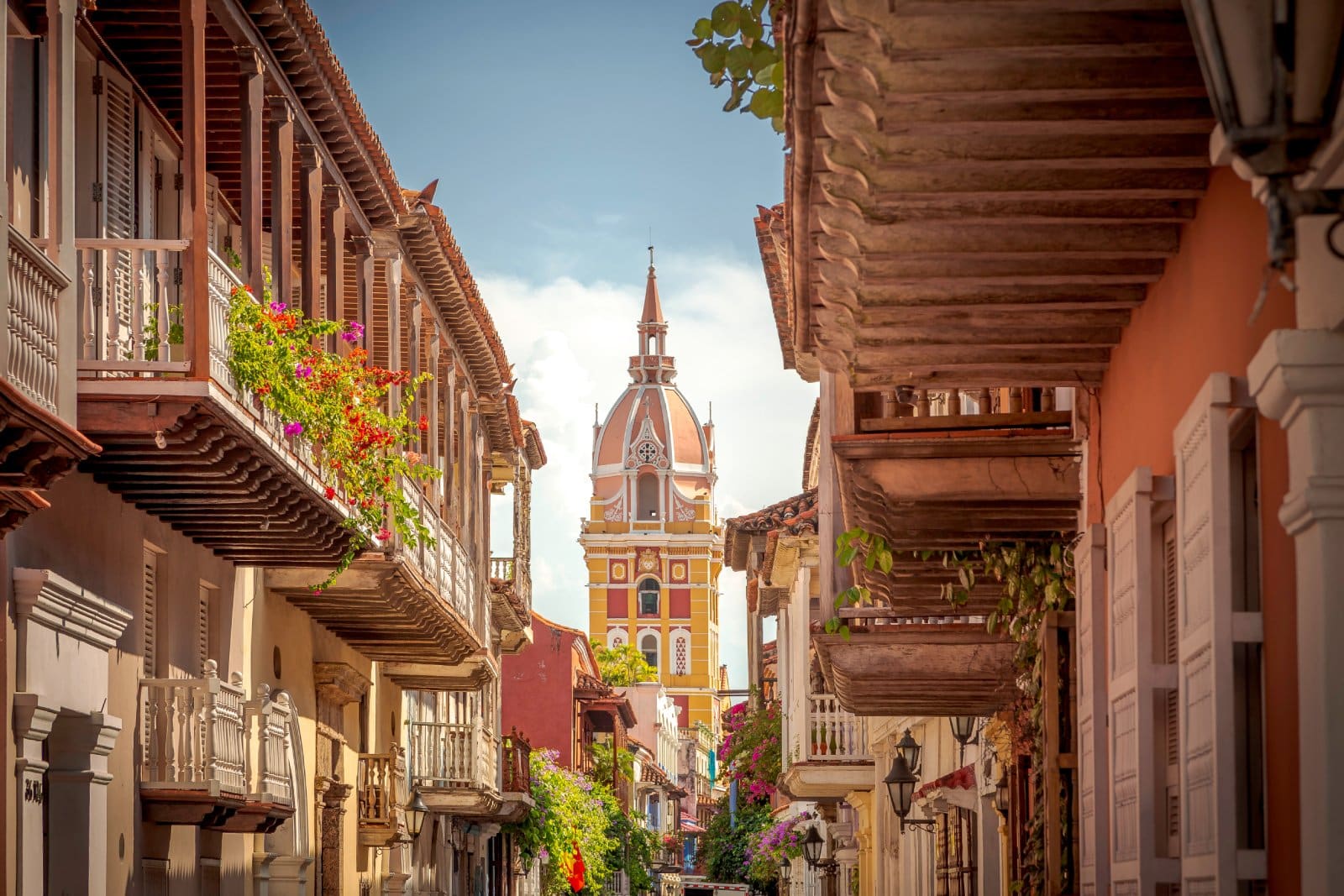
5. Cartagena, Colombia
Cartagena, a coastal city in Colombia, is a delightful destination for solo travelers. Its well-preserved colonial architecture, vibrant street life, and Caribbean beaches perfectly blend culture and relaxation. The city’s friendly locals and lively music scene warmly welcome solo visitors.
Insider’s Tip: Join a walking tour of the historic walled city to learn about Cartagena’s rich history and meet fellow travelers.
When to Travel: The dry season from December to April is the best time to visit, with sunny days and lower humidity.
How to Get There: Cartagena has an international airport with direct flights from major cities in the Americas.

6. Salar de Uyuni, Bolivia
Salar de Uyuni in Bolivia, the world’s largest salt flat, offers a surreal landscape that feels like another planet. For solo travelers, it’s a place of introspection and awe. The vast expanse of white salt, especially during the wet season when it reflects the sky, creates a dreamlike horizon. Guided tours, often in groups, allow you to explore this unique environment safely, including visits to cactus-filled islands and flamingo-populated lakes.
Insider’s Tip: Book a tour that includes a stay in a salt hotel for a unique experience.
When to Travel: The rainy season from December to April offers the mirror effect on the salt flats, while the dry season from May to November provides easier travel conditions.
How to Get There: Fly to Uyuni from La Paz or take an overnight bus for a more budget-friendly option.
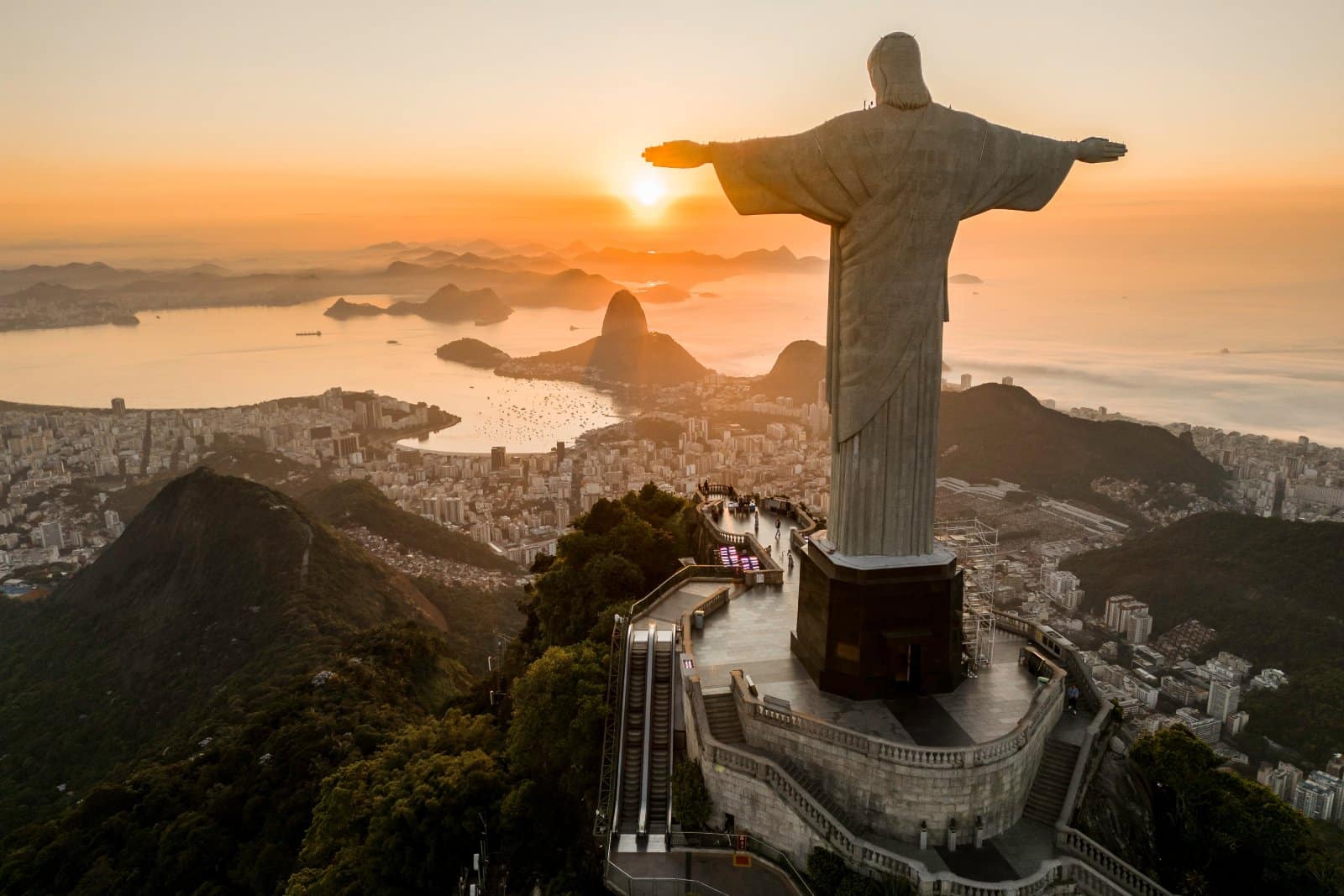
7. Rio de Janeiro, Brazil
Rio de Janeiro, with its iconic beaches, vibrant street life, and pulsating samba rhythms, is a dynamic destination for solo travelers. The city’s natural beauty, from the Sugarloaf Mountain to the Christ the Redeemer statue, is matched by its cultural richness.
Exploring Rio’s diverse neighborhoods, enjoying beach sports at Copacabana or Ipanema, and experiencing the nightlife are perfect solo activities that offer both adventure and the opportunity to meet locals and fellow travelers.
Insider’s Tip: Join a group tour to visit the city’s landmarks and meet other solo travelers.
When to Travel: Visit during the Carnival in February or March for a once-in-a-lifetime experience, or choose the shoulder seasons for fewer crowds.
How to Get There: Rio de Janeiro is well-connected by international flights to Galeão International Airport.
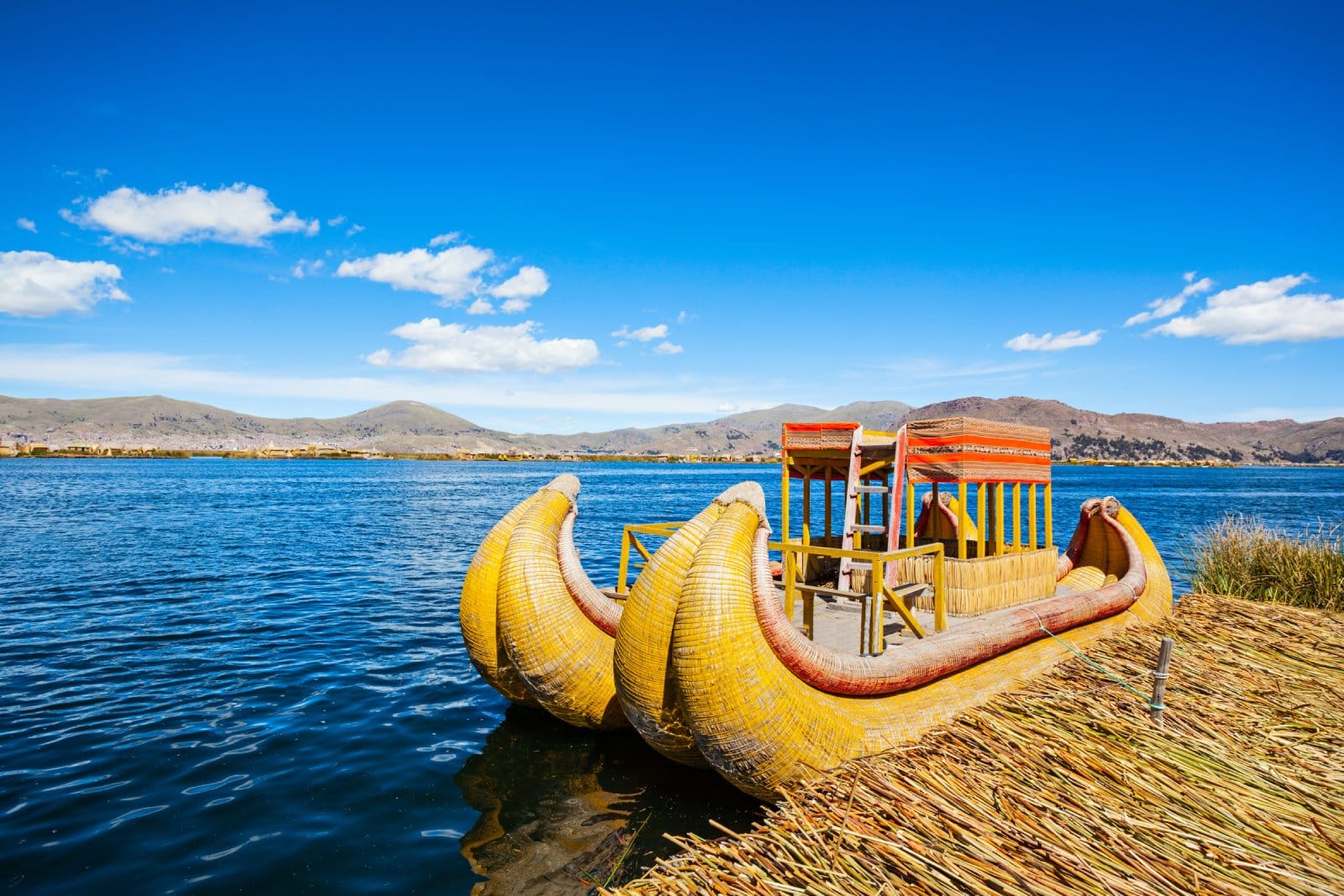
8. Lake Titicaca, Peru and Bolivia
Lake Titicaca, straddling the border of Peru and Bolivia, is the world’s highest navigable lake and a place of deep cultural significance. Solo travelers can explore ancient ruins, visit the unique floating islands of Uros, and experience the traditional way of life of the local communities. The lake’s serene beauty and the people’s warmth make it a fulfilling destination for those traveling alone.
Insider’s Tip: Stay overnight on Isla del Sol or Isla Amantani for a more immersive cultural experience.
When to Travel: The dry season from May to October offers clear skies and more comfortable temperatures.
How to Get There: Access Lake Titicaca from Puno in Peru or Copacabana in Bolivia, both reachable by bus from major cities in each country.
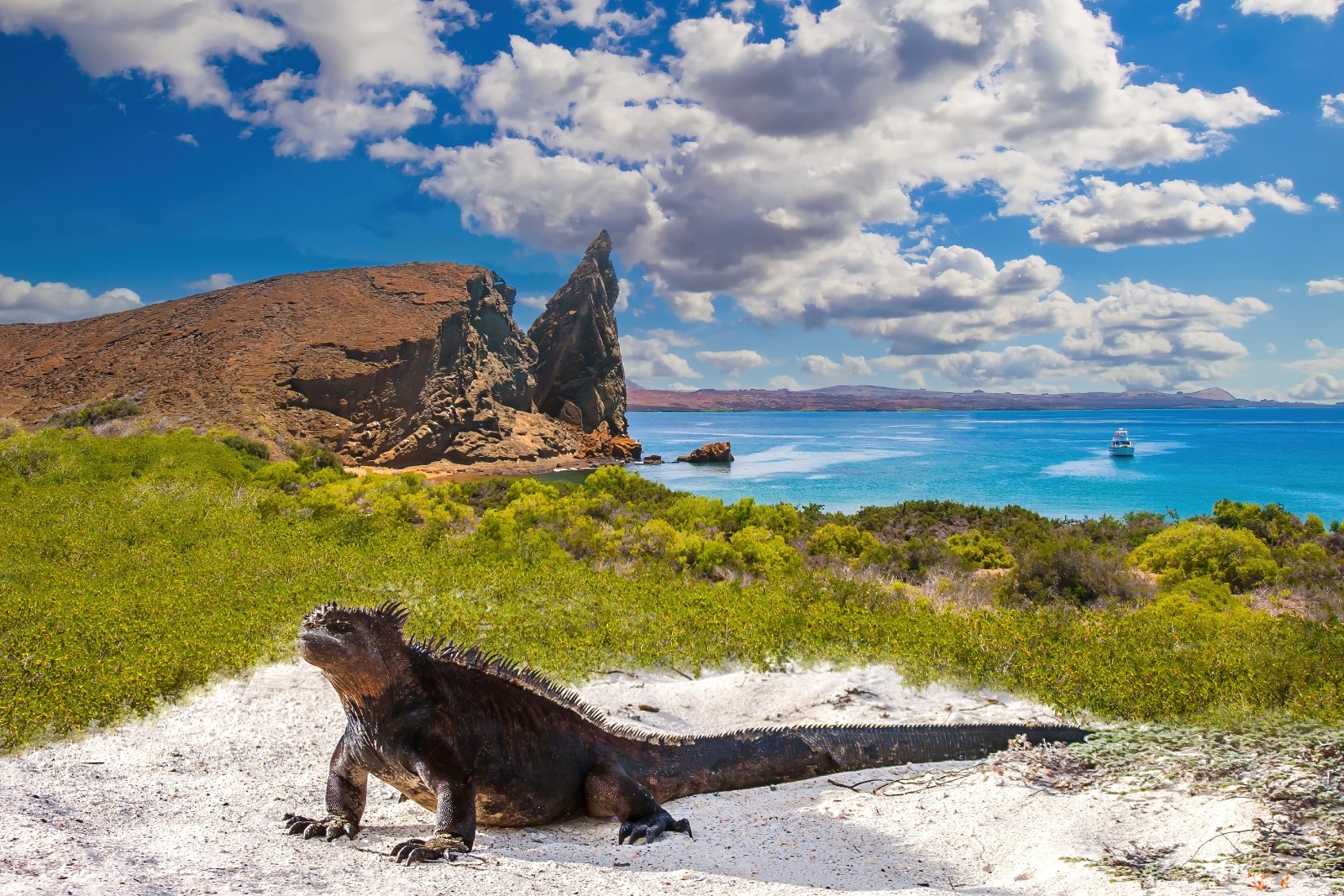
9. The Galapagos Islands, Ecuador
The Galapagos Islands, off the coast of Ecuador, are a dream destination for solo travelers interested in wildlife and nature. The islands offer an unparalleled opportunity to observe unique species up close in their natural habitat. Joining a cruise or a guided tour is a great way to explore the islands and meet fellow nature enthusiasts.
Insider’s Tip: Opt for a small-group tour or cruise for a more personalized and intimate experience.
When to Travel: Each season offers different wildlife viewing opportunities; however, the cooler dry season from June to November is great for seeing marine life.
How to Get There: Fly to the Galapagos from Quito or Guayaquil in Ecuador, then join a pre-arranged tour or cruise.
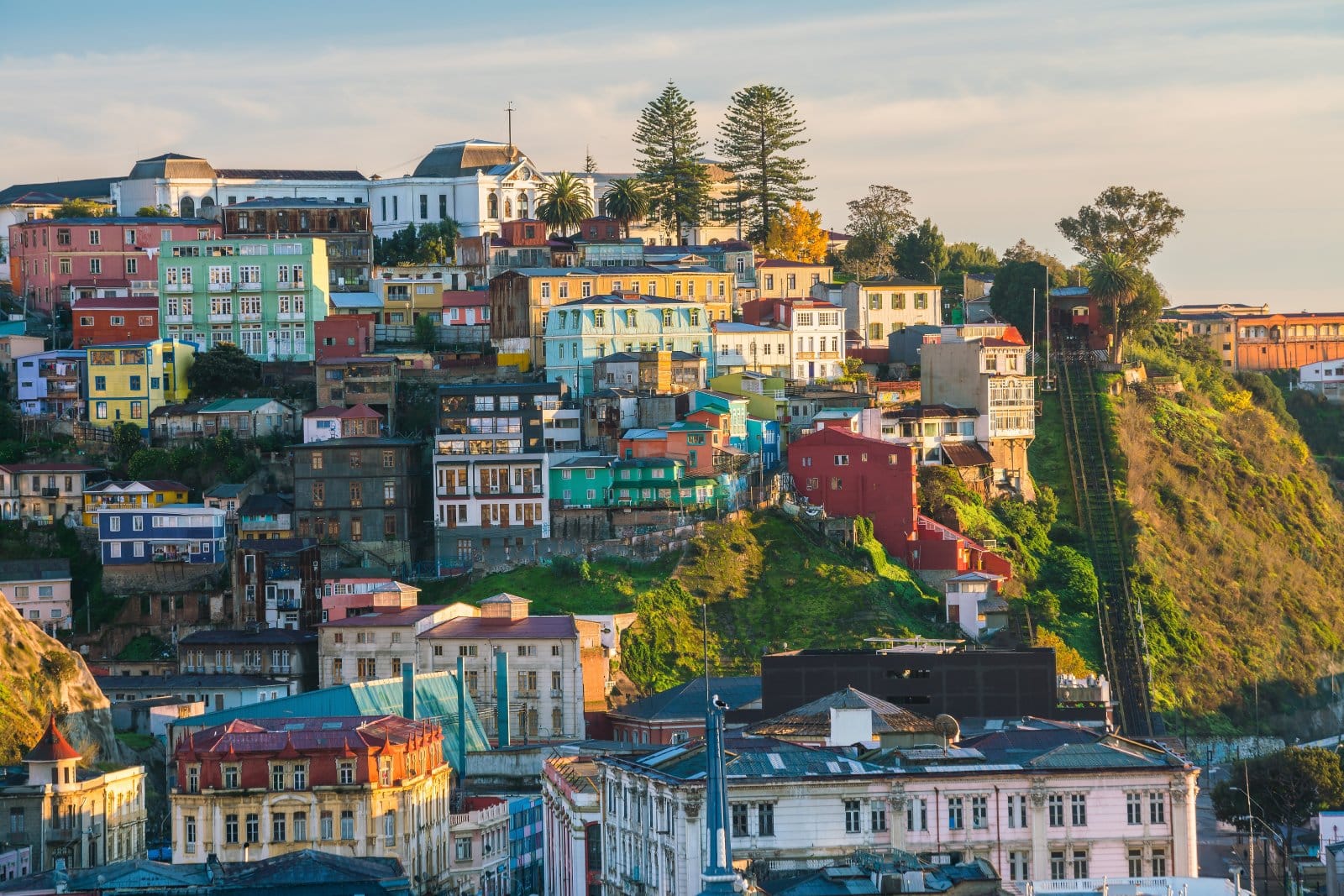
10. Valparaiso, Chile
Valparaiso, a port city on Chile’s coast, is a vibrant canvas for solo travelers seeking artistic inspiration. Known for its colorful houses, historic funiculars, and stunning street art, the city’s bohemian atmosphere is perfect for those exploring alone.
Strolling through the cerros (hills) with their labyrinth of streets offers spectacular views and a chance to delve into Chile’s artistic heart. The city’s lively cafes and cultural events provide ample opportunities to mingle with locals and fellow travelers.
Insider’s Tip: Take a guided street art tour to fully appreciate the stories behind the city’s famous murals.
When to Travel: The Chilean summer months from December to March offer pleasant weather for exploring the city.
How to Get There: Valparaiso is about a 1.5-hour drive from Santiago, Chile’s capital, and is also accessible by bus.
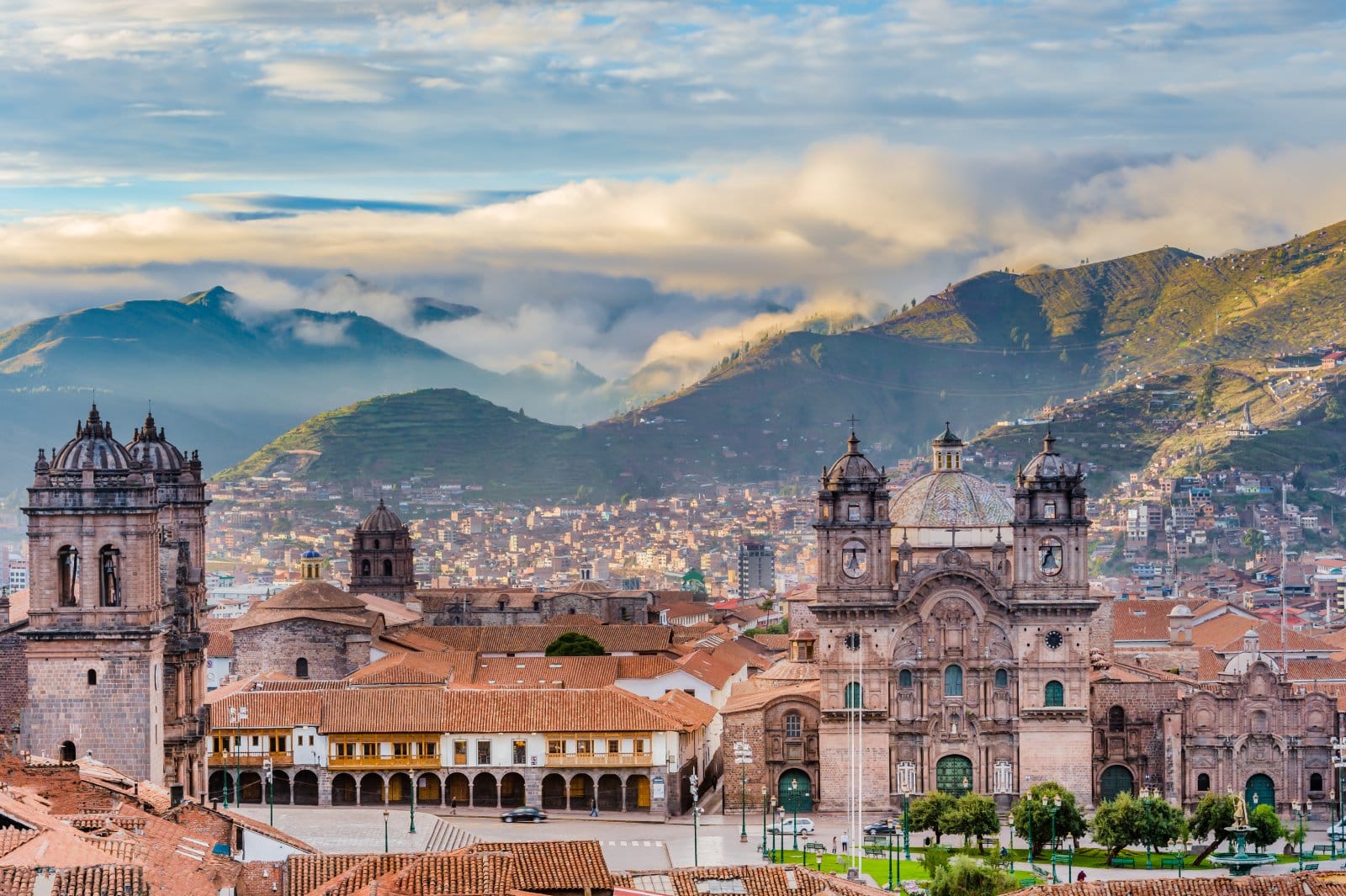
11. Cusco, Peru: A Cultural Gem for the Solo Explorer
Cusco, once the capital of the Inca Empire, is more than just a gateway to Machu Picchu. This high-altitude city in Peru is a treasure trove of history, architecture, and culture, ideal for solo travelers.
Wander through its cobblestone streets, explore the ruins of Sacsayhuaman, or immerse yourself in the vibrant San Pedro Market. Cusco’s blend of Inca and Spanish colonial heritage, along with its lively atmosphere, makes it a captivating destination for those traveling on their own.
Insider’s Tip: Spend a few days in Cusco to acclimatize to the altitude before heading to higher elevations.
When to Travel: The dry season from May to October is the best time to visit, with sunny days and cooler nights.
How to Get There: Fly into Alejandro Velasco Astete International Airport in Cusco, with frequent connections from Lima.

12. Salvador, Brazil
Salvador, the capital of Brazil’s Bahia state, is a city where African and Brazilian cultures meld into a vibrant landscape. For solo travelers, Salvador offers a chance to experience its rich history, colorful colonial architecture, and pulsating music and dance scenes. The Pelourinho district, a UNESCO World Heritage site, is a must-visit for its well-preserved colonial buildings and cultural significance.
Insider’s Tip: Attend a capoeira performance or take a class to experience this Afro-Brazilian martial art form.
When to Travel: Visit during the Bahian Carnival, a less crowded alternative to Rio’s Carnival, usually held in February or March.
How to Get There: Salvador is accessible by air from major Brazilian cities and some international destinations.

13. The Atacama Desert, Chile
The Atacama Desert in northern Chile offers solo travelers an otherworldly landscape of salt flats, geysers, and lunar terrains. It’s a place for self-reflection and adventure, with opportunities for star gazing, hiking, and exploring unique geological formations. The desert’s vastness and tranquility make it an ideal destination for those seeking solitude and a connection with nature.
Insider’s Tip: Visit the ALMA Observatory for a unique insight into astronomical research and spectacular stargazing.
When to Travel: The Atacama Desert can be visited year-round, but spring and fall shoulder seasons offer more comfortable temperatures.
How to Get There: Fly to El Loa Airport in Calama, then take a shuttle or bus to San Pedro de Atacama.

14. Medellin, Colombia
Medellin, once infamous for its turbulent past, has transformed into a hub of culture, innovation, and tourism. Medellin offers solo travelers a unique blend of modern urban landscapes and lush greenery. The city’s innovative public transport system, including cable cars and metro, makes it easy to explore.
Visit the Botero Plaza, take a graffiti tour in the Comuna 13 neighborhood, or relax in the Botanical Gardens. Medellin’s story of transformation is particularly inspiring for solo travelers looking for stories of resilience and renewal.
Insider’s Tip: Join a guided tour of Comuna 13 to understand the neighborhood’s history and witness its vibrant street art.
When to Travel: The best time to visit is during the Flower Festival in August, although the city’s pleasant climate makes it a great destination year-round.
How to Get There: Medellin is served by José María Córdova International Airport, with good connections to major cities in the Americas.

15. Quito, Ecuador
Quito, the capital of Ecuador, is a city rich in history and culture, making it an ideal destination for solo travelers interested in heritage and architecture. As the second-highest capital city in the world, it offers breathtaking views of the Andean landscape. The city’s well-preserved historic center, a UNESCO World Heritage site, is filled with colonial monuments and architectural treasures. Exploring Quito allows solo travelers to delve into Ecuador’s history and enjoy its vibrant contemporary culture.
Insider’s Tip: Take a trip to the equator line at the Mitad del Mundo monument, just a short distance from the city.
When to Travel: June to September offers clear skies and dry weather, ideal for exploring the city and its surroundings.
How to Get There: Quito’s Mariscal Sucre International Airport has regular flights from major cities in the Americas and Europe.
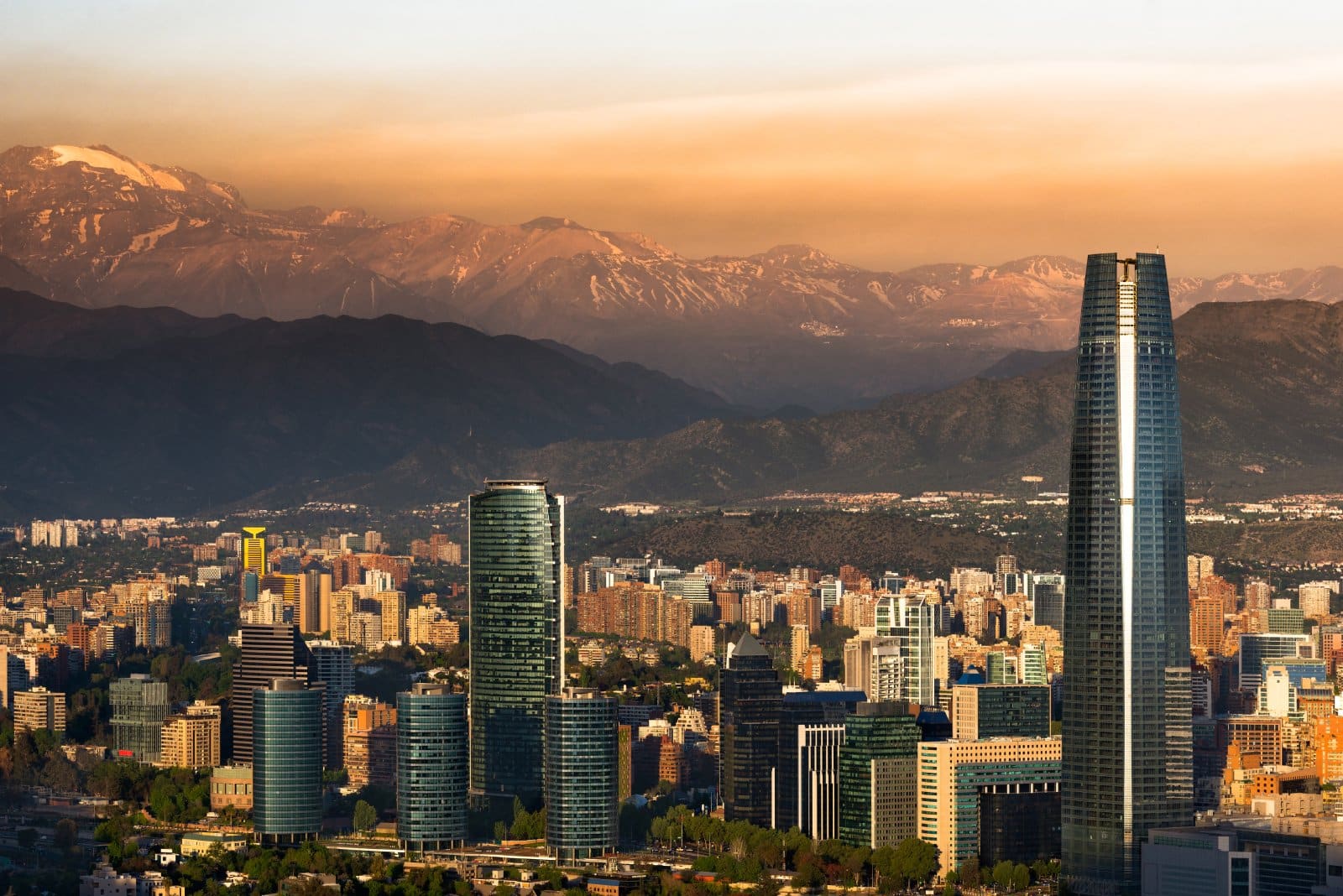
16. Santiago, Chile
Santiago, the capital of Chile, is a cosmopolitan city set against the backdrop of the Andes Mountains. For solo travelers, Santiago offers cultural experiences, outdoor activities, and culinary delights. Explore the city’s museums, parks, and vibrant neighborhoods like Bellavista.
A short trip to the nearby Andes allows for skiing or hiking, depending on the season. With its blend of traditional Chilean cuisine and international flavors, Santiago’s growing culinary scene is a delight for food enthusiasts.
Insider’s Tip: Visit the top of Cerro San Cristobal for panoramic views of the city and the Andes.
When to Travel: Spring (September to November) and fall (March to May) offer mild weather and fewer crowds.
How to Get There: Santiago’s Arturo Merino Benítez International Airport is well-connected internationally.
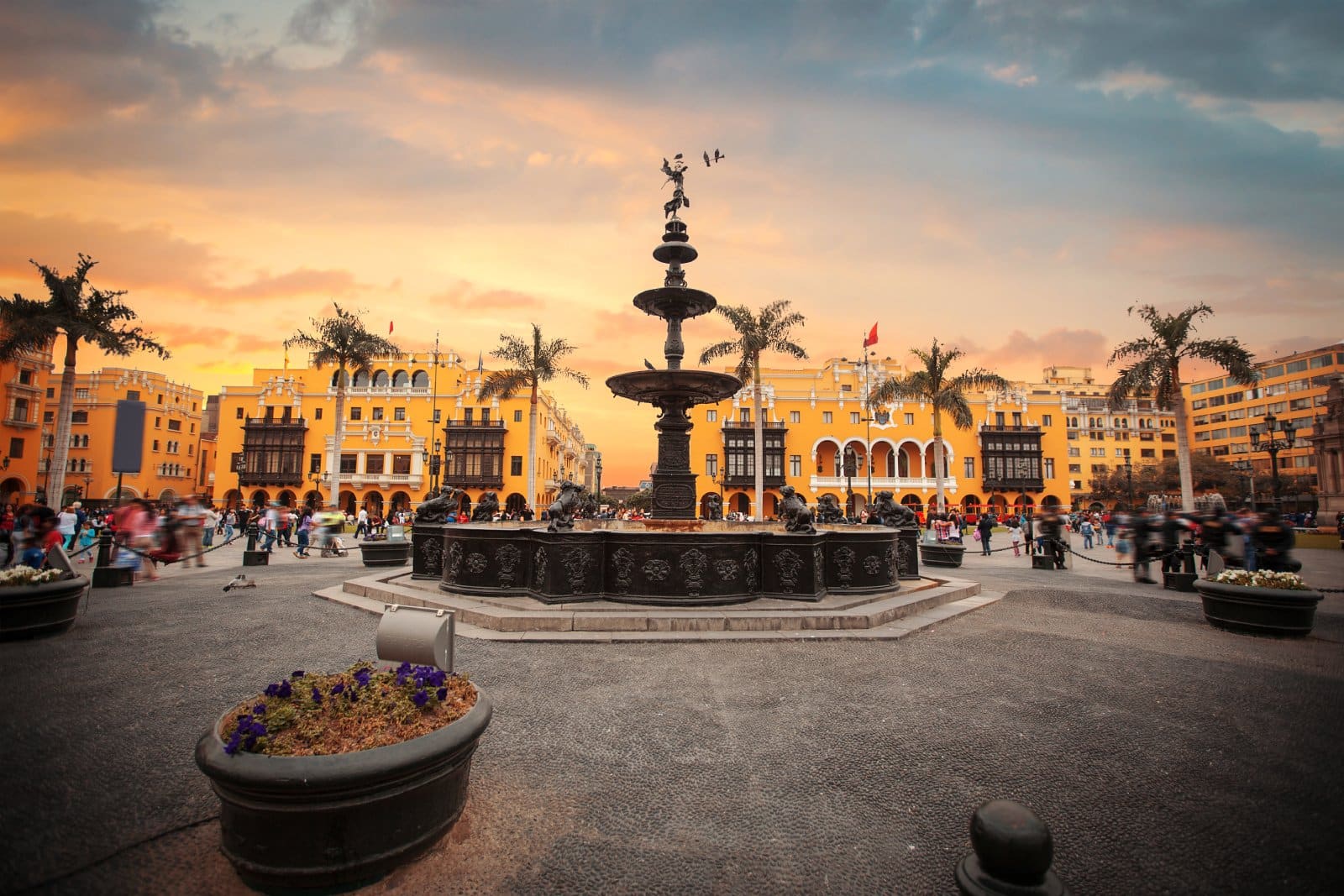
17. Lima, Peru
Lima, the capital of Peru, is a paradise for food lovers and a must-visit for solo travelers interested in gastronomy. The city offers a culinary journey through its diverse food scene, from street food to gourmet restaurants. Don’t miss the chance to try ceviche, Lima’s iconic dish. The city’s rich history, represented in its museums and architecture, complements its culinary offerings, making Lima a well-rounded destination.
Insider’s Tip: Take a Peruvian cooking class to learn about the local cuisine and meet fellow food enthusiasts.
When to Travel: The best time to visit is from December to April, when the weather is warmer and sunnier.
How to Get There: Jorge Chávez International Airport in Lima is the main gateway to Peru, with numerous international connections.

The Bottom Line
Solo travel in South America offers an unparalleled opportunity for personal growth, adventure, and cultural immersion. As you navigate this diverse continent, embrace its challenges as part of the journey. Remember, your solo travels in South America are as much about the destinations you explore as the personal discoveries you make along the way.
Always keep safety in mind: stay informed about local conditions, trust your instincts, and keep your belongings secure. Embrace the freedom and flexibility of solo travel, but also be open to joining group activities where you can share experiences and make new connections.
More Articles Like This…
Barcelona: Discover the Top 10 Beach Clubs
2024 Global City Travel Guide – Your Passport to the World’s Top Destination Cities
Exploring Khao Yai 2024 – A Hidden Gem of Thailand
The post Solo Adventure: 17 Thrilling Destinations in South America 2024 republished on Passing Thru with permission from The Green Voyage .
Featured Image Credit: Shutterstock / Peera_stockfoto.
For transparency, this content was partly developed with AI assistance and carefully curated by an experienced editor to be informative and ensure accuracy.
More for You
A Russian tank was seen charging into battle with a giant, makeshift metal roof on top of it as Ukraine leans into drone attacks
Photos: Angel Reese shines at WNBA draft in backless dress
I Lost White Friends When I Finally Spoke Out
Therapists Say These 6 Common Habits Are Fueling Your Anxiety
29 Ridiculous Lies That Hollywood Has Managed to Mainstream
The world’s most remote island open to tourists no longer takes five nights to get to
How to 'quiet quit,' from a former teacher who did it for 2 years so she could enjoy a better life while still getting a paycheck
The Food City Anthony Bourdain Considered One Of His All-Time Favorites
Dodgers Legend Dies at 97; Was Last Link to Brooklyn's 'Boys of Summer'
Florida state trooper hurt in crash with ex-Congressman Madison Cawthorn, witness says
One of the best British spy dramas of all time is finally streaming on Netflix
16 Compliments You Didn’t Realize Are Actually Pretty Insulting
Teachers strike over pupil behaviour
How to Get Rid of Ants in Your House and Yard
Major Shoe Brand Files for Bankruptcy
The Most Visited Attraction in Every US State
Alarming Trend Continues At The Masters Despite Scheffler's Epic Triumph
People With Low Emotional Intelligence Are Known to Use These 4 Phrases
Panned M. Night Shyamalan Sequel Becomes Netflix Hit Five Years Later
Eerie footage inside sunken passenger plane mistaken for missing MH370
To Duke Alumni homepage
Machu picchu to the galápagos.
View other trips

Date: Tue, February 18, 2025 - Wed, March 5, 2025
Trip Status: Waiting for the brochure
Price: From $9,193 per person including air
Activity Level: Moderate
Region: South America
Arrangements: Odysseys Unlimited
Machu Picchu’s enigmatic ruins and the fascinating Galapagos Islands rank among South America’s greatest treasures, and a small group tour is the ideal way to experience both. This outstanding 16-day adventure begins with Lima’s highlights. Traverse the magnificent Sacred Valley, visiting impressive Incan sites and indigenous villages during a two-night stay. After taking a scenic train ride to Machu Picchu, tour and absorb this astounding site on two separate days, overnighting nearby. Then encounter the history and beauty of Quito, a UNESCO site. Spend the next four nights on the Galapagos’ beautiful Santa Cruz Island; the relaxed stay here includes cruising on a private yacht to two nearby islands to learn about Darwin’s incredible “living laboratory” from an expert naturalist guide. After this unique experience, return to Quito for a final day of touring. Discover the Amazon’s amazing flora, fauna, and villages with an exceptional 4-day/4-night pre-tour option.
Reservations and Information
To reserve, complete a registration form in the brochure and mail to Duke Travels, Box 90572, Durham, NC 27708, or call (919) 684-2988 to reserve conveniently over the phone and let us know you are mailing your reservation form to hold your space. To learn more about our travel program or any of our upcoming trips, please contact us at [email protected] or 919-684-2988
Duke Leaders

Dr. Lincoln Pratson P'14, P'20
Gendell Family Professor of Energy and Environment
Mode of Travel

National Geographic content straight to your inbox—sign up for our popular newsletters here

10 unmissable LGBTQ+ events in Latin America
Check out Latin America's most exciting annual LGTBQ+ events, from inspirational Pride marches and blockbuster carnivals to queer tango competitions and wine festivals.
A thriving hotspot for LGBTQ+ travel, Latin America’s social calendar is crammed with thrilling queer events. Whether you’re planning a trip around Pride Month celebrations or looking for some cultural enrichment with special-interest festivals, there’s hardly a bad time to visit
1. São Paulo Gay Pride
São Paulo, Brazil June
Every year, travellers in the know head to São Paulo for what is truly the largest gay pride in the world, with millions of attendees. It’s a full-force extravaganza, the one time this usually business-oriented city rivals Rio de Janeiro on the celebratory circuit. The parade’s main route travels the city’s most important thoroughfare, Avenida Paulista, lined with iconic skyscrapers, art nouveau mansions, museums and other cultural institutions. Usually in June, it’s a whole week of events with the accompanying Feira Cultural Da Diversidade LGBT+ featuring art shows, drag contests, restaurant outings and other highlights.
2. Rio de Janeiro Carnival
Rio de Janeiro, Brazil February/March
There’s no experience quite like Rio’s Carnival. Millions turn out for the event, in February or March depending on the Easter calendar — with the weekend and the Monday and Tuesday before the Christian holiday Ash Wednesday and Lent the most bacchanalian days. The event is centred around the Sambadrome, the linear stadium designed by Brazilian architect Oscar Niemeyer, with some tourist packages giving visitors a chance to march in costume. The majority of places are queer-friendly, with the main highlights being the Gay Ball at the Scala club and the Rua Farme de Amoedo gay beach block party in Ipanema.
3. Queer Tango Festival Buenos Aires
Buenos Aires, Argentina Various dates
The tango, a fusion of African, European, New World and Indigenous dance styles, was inscribed on UNESCO’s Representative List of the Intangible Cultural Heritage of Humanity in 2009. It has roots within Argentina’s same-sex history, as men often performed the dance with each other — even if only to impress women watching. After the early 2000s peso crisis, which plunged the country into financial turmoil, LGBTQ+ tango salons began to emerge. Visitors can either join in or sit back and enjoy this quintessential Buenos Aires art form through a queer lens.
4. Vendimia para Todxs (Vendimia for All)
Mendoza, Argentina February/March
With juice-stained, ballgown-wearing beauty queens representing Argentina’s wine regions on parade floats throwing grapes, melons, bottles of wine and other agricultural products into the throngs lining Mendoza’s streets, the Vendimia is already an unusual and vibrant wine festival. The Gay Vendimia or Vendimia for All only adds to the crazy fun, with a beauty queen pageant of gay, trans and drag contestants along with other entertainment. Definitely the world’s largest, if not only, queer wine festival, the event is held in February or March, timed for the country’s annual grape harvest.
5. The Vallarta Pride Parade and Vallarta Pride Festival
Vallarta, Mexico May
Puerto Vallarta is a queer-friendly destination year-round, but this vibrant city overlooking the Pacific really comes alive in late May during the Vallarta Pride Parade and Vallarta Pride Festival. The highlight is the Saturday Parade along the beachfront Malecón, where thousands of people turn up to celebrate the community. Other highlights throughout the week-long gathering include art shows, special dining events, bar parties and more. It’s a popular (albeit more crowded) time to visit this city, which was once the secluded haunt of Hollywood stars like Elizabeth Taylor.
6. Amor Film Festival
Santiago, Chile June/July
Travellers seeking a quiet and cerebral experience can do no better than heading to Santiago, Chile, for the Amor International LGBT+ Film Festival, which was founded in 2016 and is held from late June to early July. Though an international festival, there’s a strong focus on queer Latin American and Iberian submissions in Spanish and Portuguese. The scattered screening and event locations — which range from the Cineteca Nacional to the Teatro Municipal de Maipu and the Comunidad Cultural Comunitaria La Inclusive — offer the chance to catch new films and engage in cinematic conversations while exploring the Chilean capital.
7. Havana, Cuba Gay Pride March and Festival
Havana, Cuba May
Cuba has long been a queer-friendly destination. Through the organisation Cenesex, run by Mariela Castro, daughter of former leader Raul Castro, the communist country has also been an intriguing part of the global LGBTQ+ rights movement, and is especially advanced on transgender issues. Queer rights activists have to toe the party line, and this colourful late May spectacle in the storied streets of Havana is usually a government-supported event, generally promoting an approved narrative. Peaceful protests can sometimes occur, making this a rare, interesting time to see Cuban politics in action.
8. Carnaval Gay de Barranquilla
Barranquilla, Colombia Easter week
Barranquilla, a lesser-frequented spot for LGBTQ+ travellers, is best known for its lively festival. The city, which sits on Colombia’s Caribbean coast, is home to one of South America’s largest events — the Barranquilla Carnaval. It features several LGBTQ+ events alongside the core parades, meaning this multifaceted extravaganza is unlikely to remain a secret for too much longer. Like many carnivals, its timing is based on the Easter calendar. The glittering week of events includes marches, cultural outings, parties, drag pageants, and other feather-adorned spectacles where the music is always turned up high.
9. San Juan Gay Pride
San Juan, Puerto Rico June
Puerto Rico has been through a difficult few years, from natural disasters to economic slowdowns, but San Juan Pride continues. This early June event is one of the Caribbean’s largest, with bars, restaurants and nightclubs along Avenida Condado in the Condado neighbourhood’s LGBTQ+ district packed with locals and visitors alike. The parade kicks off early from its staging grounds in Parque del Indio in view of the beachfront before heading along Ashford Avenue with a line-up of participants, floats, music and dancers. It culminates with a rally and show of activists, singers, drag artists and other performances at Parque del Tercer Milenio.
10. Diversity March/ Manuel Antonio Gay Beach Parade
San José, Costa Rica June/July
Visitors who time their trips right and stay long enough during a June visit to Costa Rica get two incredible LGBTQ+ pride events. It’s a chance to see art shows, film exhibits and have plenty of fun. In late June, Costa Rica’s capital San José hosts the Diversity March, a colourful spectacle combining fun and activism, with myriad sophisticated cultural events worthy of this Central American capital. Two weeks later and only a two-hour drive away is the Manuel Antonio Gay Beach Parade in Manuel Antonio National Park, on the beach itself. The weekend is full of pool parties, tea dances and other events.
Related Topics
- LGBT-FRIENDLY TRAVEL
- FAMILY TRAVEL
- CULTURAL TOURISM
- FAIRS AND CARNIVALS
You May Also Like

A guide to LGBTQ+ travel in Latin America

They inspire us and teach us about the world: Meet our 2024 Travelers of the Year
Free bonus issue.

The essential guide to Switzerland

These 6 U.S. Christmas markets feel like a fairy tale

Where to travel in May

Revisiting Vienna's World Fair: new tours and exhibitions on the 150th anniversary

8 of the best Caribbean carnivals
- Perpetual Planet
- Environment
- Paid Content
History & Culture
- History & Culture
- Photography
- Mind, Body, Wonder
- Terms of Use
- Privacy Policy
- Your US State Privacy Rights
- Children's Online Privacy Policy
- Interest-Based Ads
- About Nielsen Measurement
- Do Not Sell or Share My Personal Information
- Nat Geo Home
- Attend a Live Event
- Book a Trip
- Inspire Your Kids
- Shop Nat Geo
- Visit the D.C. Museum
- Learn About Our Impact
- Support Our Mission
- Advertise With Us
- Customer Service
- Renew Subscription
- Manage Your Subscription
- Work at Nat Geo
- Sign Up for Our Newsletters
- Contribute to Protect the Planet
Copyright © 1996-2015 National Geographic Society Copyright © 2015-2024 National Geographic Partners, LLC. All rights reserved

IMAGES
VIDEO
COMMENTS
We recommend having a travel towel- it is light, easy to fold, and in some hostels, it is not a rule that you get one. Apart from toothbrush and toothpaste, bring deodorant, cream (or whatever you normally use), comb, nails scissors and cotton buds. It is also necessary to carry at least a basic first-aid kit.
Daypacks for South America. A day pack can serve multiple purposes on a trip to South America. For days spent exploring the city, a 20- to 40-liter backpack will be a perfect size, with enough room to carry water, a camera, and extra layers. It'll also be the right size for day hikes, whether trekking in Torres del Paine National Park or for ...
We've done our best to summarize a few packing tips from our South America backpacking trip, focusing mostly on Colombia, Ecuador, Peru, Chile, and Argentina. South America isn't terribly hot. It's hot at the very northern tip, on the Caribbean coast. It's hot in the Amazon rainforest. And it's hot during the summer seasons in Chile ...
On top of the essential items listed above, here is an additional suggested checklist of what to pack for a South America trip: Quite possibly the best adventure in Colombia…. A few pairs of comfortable pants/jeans. 1-2 pairs of shorts (summer/late spring) A few pairs of socks. (Sexy) underwear x 2/3.
South America Travel Tip | If you're going on a multiday tour or trek, it's good to know that most hostels in South America offer a luggage storage service. This means you can leave your big backpack behind and only take the essentials in your daypack. However, we recommend that you do not leave any valuables in the big backpack you're leaving behind- take them with you or stay at a ...
Travel Adapter: South America uses a variety of plug types, so be sure to pack a travel adapter to charge your electronics and keep them powered. ... Managing your finances and understanding the local currency are essential for a smooth trip to South America. Here are some important considerations when it comes to money and banking:
This lightweight, packable, hooded down jacket is a superb option for your South America packing list. 2x Hoodies / Fleeces. Essential for evenings and cooler days, something light and quick dry would also be helpful. This women's breathable fleece by Columbia would do brilliantly.
Documents and Essentials for Travel Bank cards. Bring both credit and debit cards. It is always worth having at least one Visa card and one MasterCard as these are widely accepted across South America. ... Technology and Travel in South America. Warning: Replacing or repairing technology in South America can be very expensive, therefore it is ...
It's my duty to share these backpacking essentials for South America. Obviously, I don't carry everything at once but you get the idea. ... The travel bible will give you more insight into the way I travel. South America Packing List . Hopefully, with this packing list, you're inspired to travel lighter, longer, and stronger than ever before.
This South America guide is here to share our tips and advice for traveling across this continent. Located south of North America and Central America, South America stretches from the Caribbean, across the equator and all the way south to the waters off Antarctica. It is comprised of 12 countries and quite frankly, is massive.
Other items to bring to South America. Camera - we have a Nikon D750. We love it. Laptop - For the digital nomads out there! We think a Macbook Pro is the best laptop currently on the market! Passports (and one of these cute passport holders) Travel Adapter. Drone - Drone shots are awesome in South America.
This three-month itinerary will allow you to experience the highlights of Peru, Ecuador, Colombia, Brazil, Argentina, and Chile, offering a diverse range of landscapes, cultures, and experiences. Peru - 3 weeks. Ecuador - 1 week. Colombia - 2 weeks. Brazil - 2 weeks.
What Other Travel Essentials to Bring To South America? Packing Cubes: Packing cubes are a lifesaver for backpackers and light travelers out there. I used to travel without one, and it was often a mess in my backpack. I would frequently find something I had been looking for months later, after I came back from a trip. ...
Essential for Travel to South America #2: Coconut Oil. Coconut oil is useful in so many different ways! Because of how the weather fluctuates in South America, skin can get really dry, and coconut oil is a nice fix for dry skin and hair.
Best Things to Do in South America. 1. Explore the Amazon Rainforest. One of the most iconic places to visit in South America, the Amazon Rainforest is a vast, biodiverse region spanning nine countries. This lush, green paradise is home to an estimated 390 billion individual trees, representing over 16,000 species.
Travel Adapter: South America has different plug types, ... Prioritizing your health and well-being is crucial while traveling in South America. Packing essential medications and a basic first aid kit can help you address minor health issues and be prepared for unexpected situations. Here are some items to consider:
Trekking with a good company for the Inca Trail will cost about $500 to $650 including entrance fees. 9. Check The Weather For The Places You Want to Go Beforehand. While most people check the weather for the first city of their trip, it is a good idea to look it up for each area when traveling in South America.
South American Packing Essentials. Talk with an expert. Build your ideal Amazon trip. Call 1.406.541.2677. Start Planning My Trip. It's amazing how much stuff people take when taking a trip to Latin America. A backpacker may be willing to take a cold shower, but she thinks she needs all of the amenities of a Roman bath to accompany the freezing ...
Essential packing items for South America. 1). The Ultimate Backpack For Backpacking: This is the most important thing to get right. The Osprey Farpoint / Fairview series are great choices. For woman Go Travel and Talk recommend the Ospreys Women Fairview luggage, 55L. For men, Go Travel and Talk recommend the Farpoint backpack 55L.
For more South America packing tips, please read: • The Ultimate Women's Backpacking South America Guide • 6 Packing Tips for Traveling to South America • Central America Ultra-Minimalist Travel Packing List • Packing List for Peru, Bolivia, and Ecuador . Suggested travel resources: Lonely Planet South America on a shoestring
South America Tips. Here are our essential South America tips to make your holiday as smooth and enjoyable as possible. 1. Planning Your Route and Itinerary. It's advisable to have a general route planned, as travel between locations can be time-consuming. South America is a massive continent, after all.
A theftproof backpack is also a great idea, especially if you are a digital nomad travelling South America with your laptop. Many of these are slash-proof and have lockable zips to keep your stuff safe, no matter where you are. An anti-theft backpack can stop you becoming a victim of opportunistic crime. 15.
And most importantly, good chairs and a foldable table are essential in South-America to sit down and watch the magnificent landscapes. Enjoying the landscape is your daytask during vanlife in South America Cleaning essentials Keeping your van clean. When travelling through South America, expect dirt roads! A lot of dirt roads!
Story by Katie Hollamby. • 1mo. 1 / 19. Solo Adventure: 17 Thrilling Destinations in South America 2024 ©Provided by Passing Thru Travel. Embarking on a solo journey through South America can ...
Machu Picchu's enigmatic ruins and the fascinating Galapagos Islands rank among South America's greatest treasures, and a small group tour is the ideal way to experience both. This outstanding 16-day adventure begins with Lima's highlights. Traverse the magnificent Sacred Valley, visiting impressive Incan sites and indigenous villages during a two-night stay. After taking a scenic train ...
Discover the best of Latin America for 2024 with the Latin America Collection by National Geographic Traveller (UK).. Inside, find a guide to LGBTQ+ travel in Latin America as well as a rundown of ...
8. Carnaval Gay de Barranquilla. Barranquilla, Colombia. Easter week. Barranquilla, a lesser-frequented spot for LGBTQ+ travellers, is best known for its lively festival. The city, which sits on ...